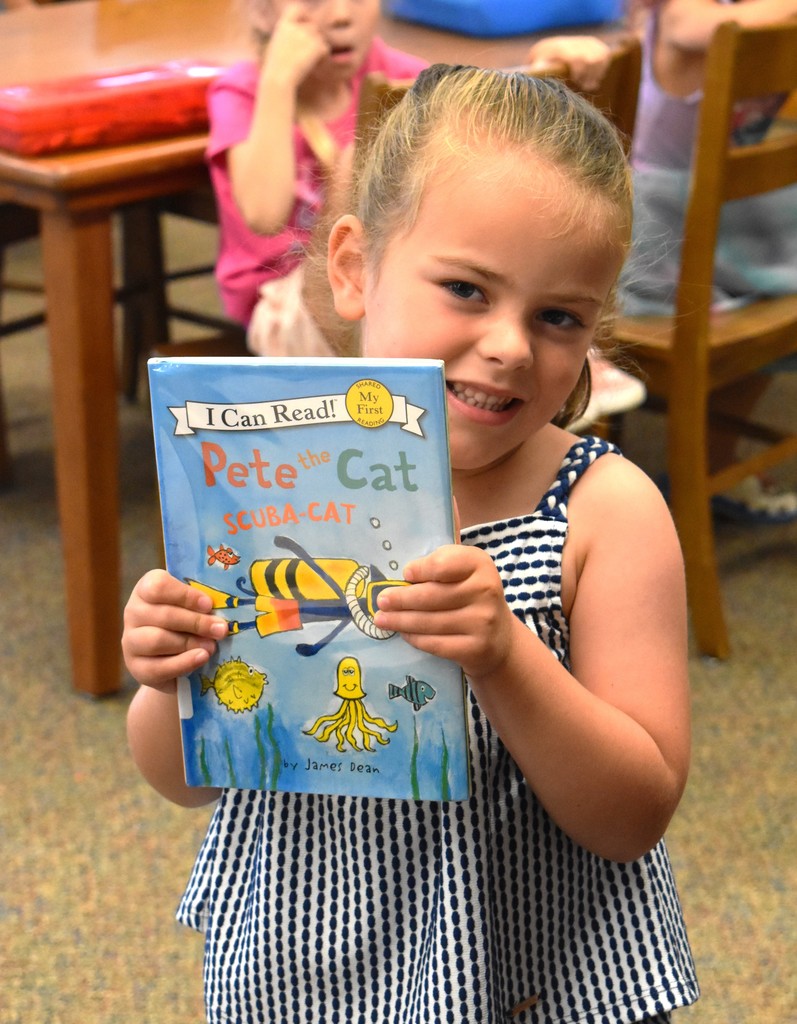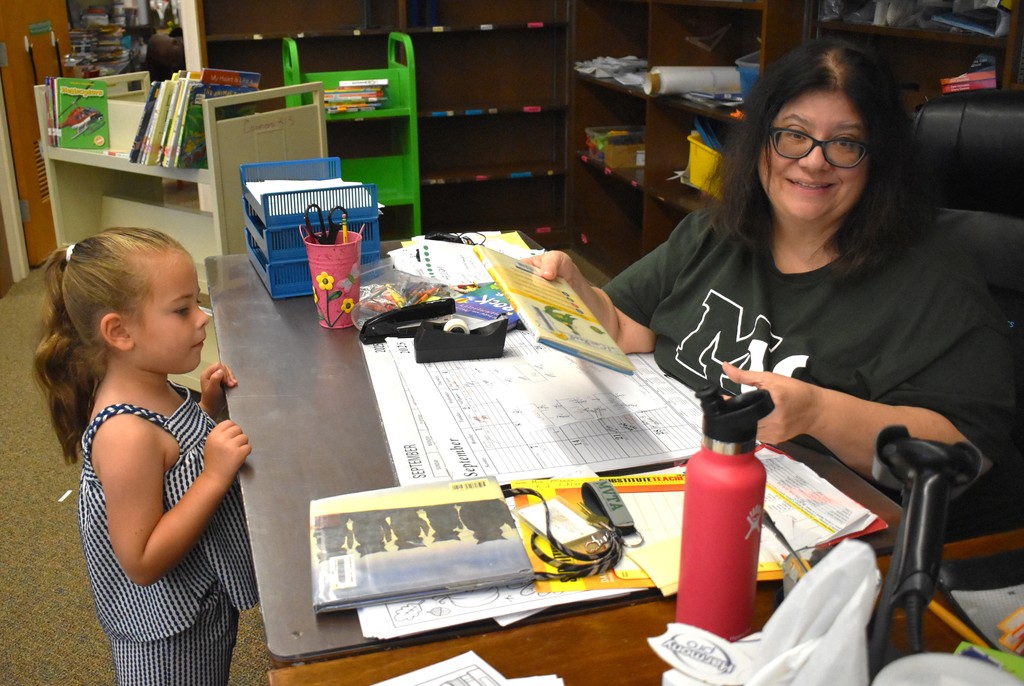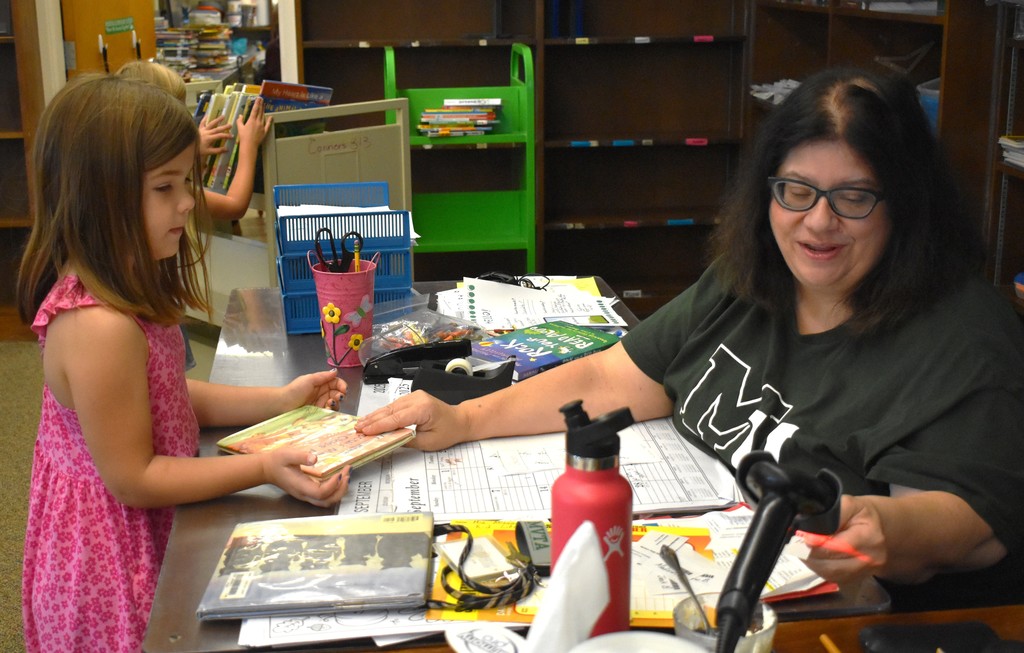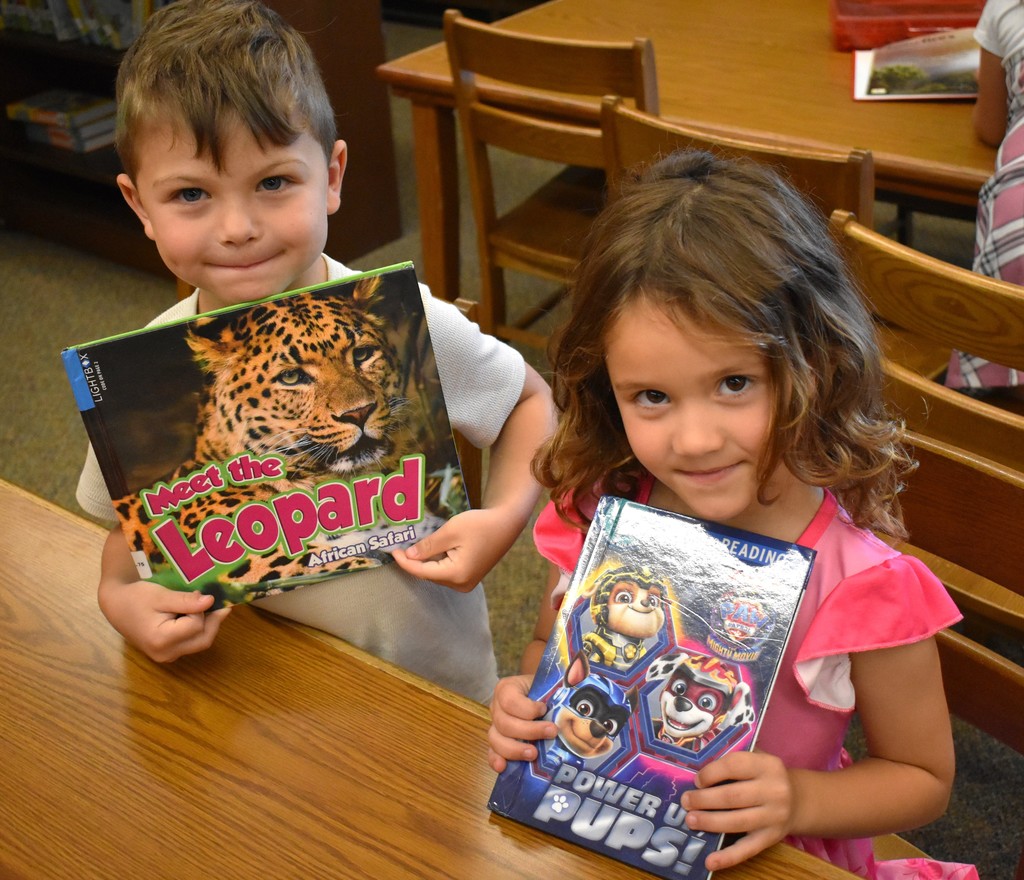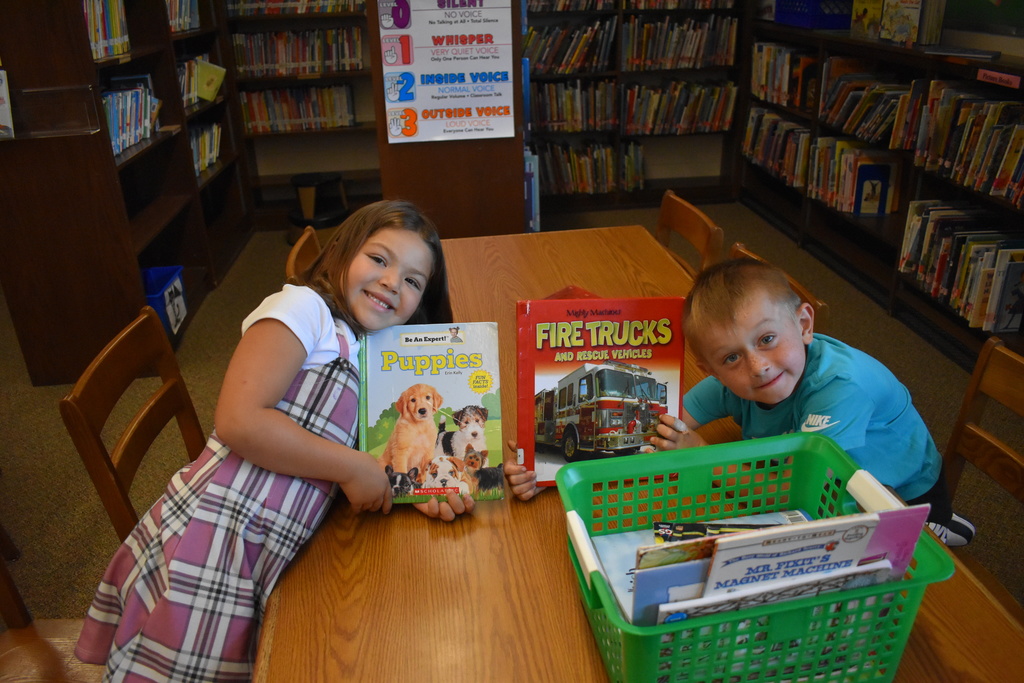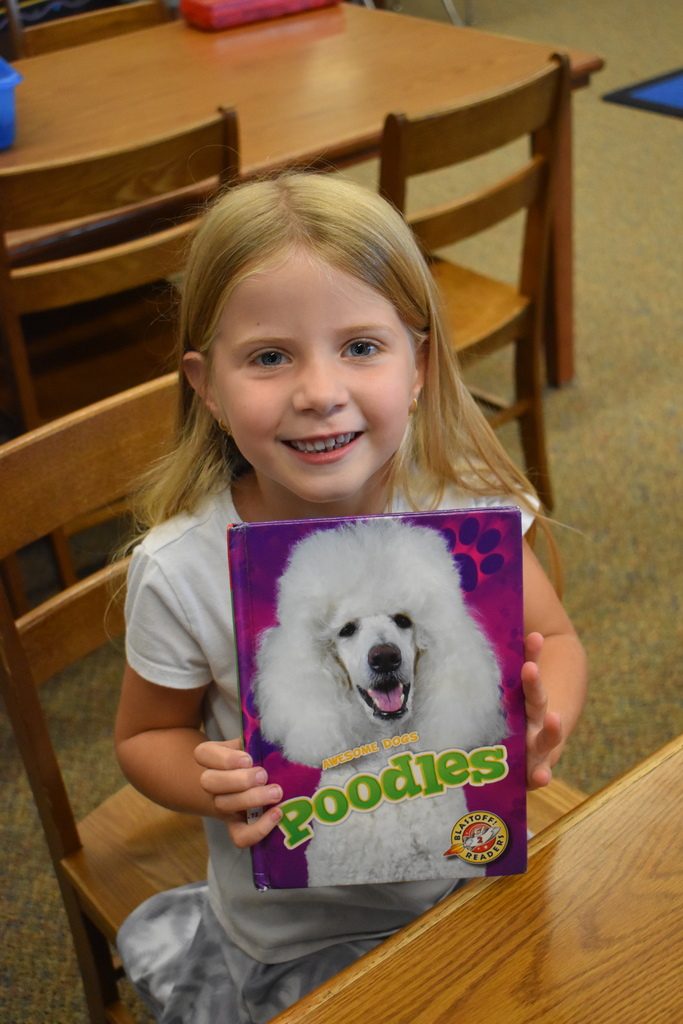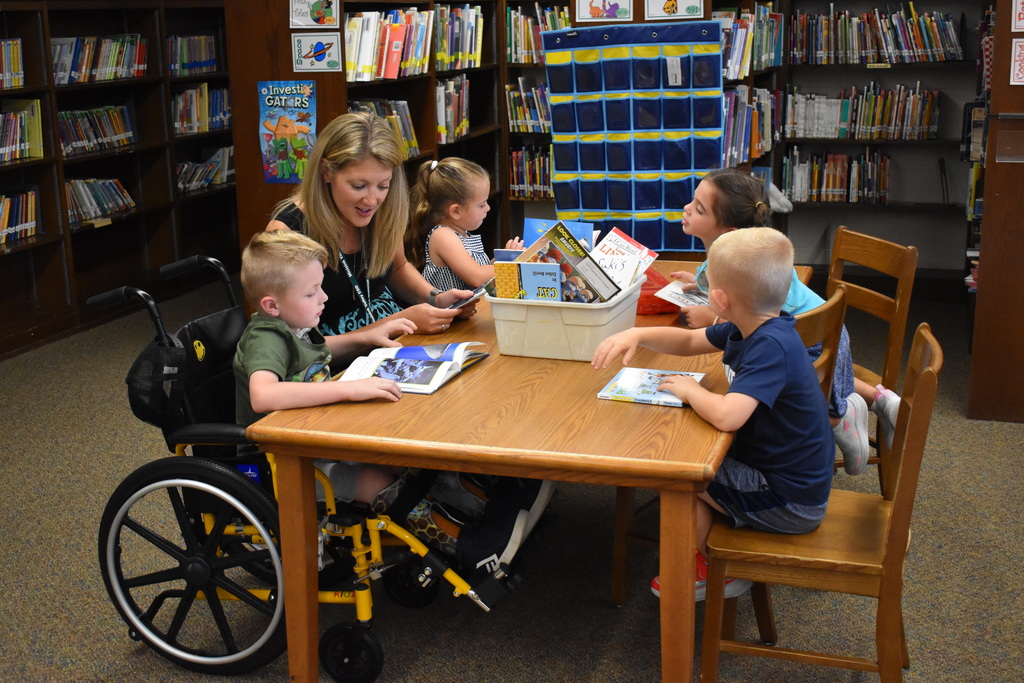The clarinet was invented around 1700 in Germany by Johann Christoph Denner. It’s a woodwind instrument that produces sound using a single reed, and it comes in many sizes and types.
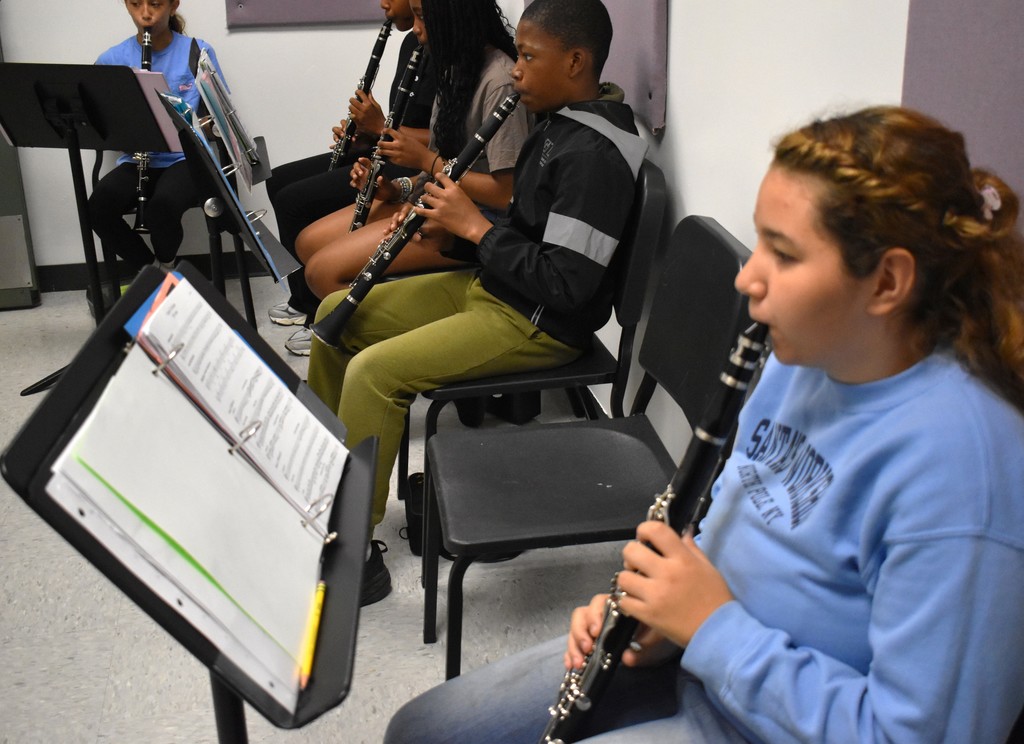
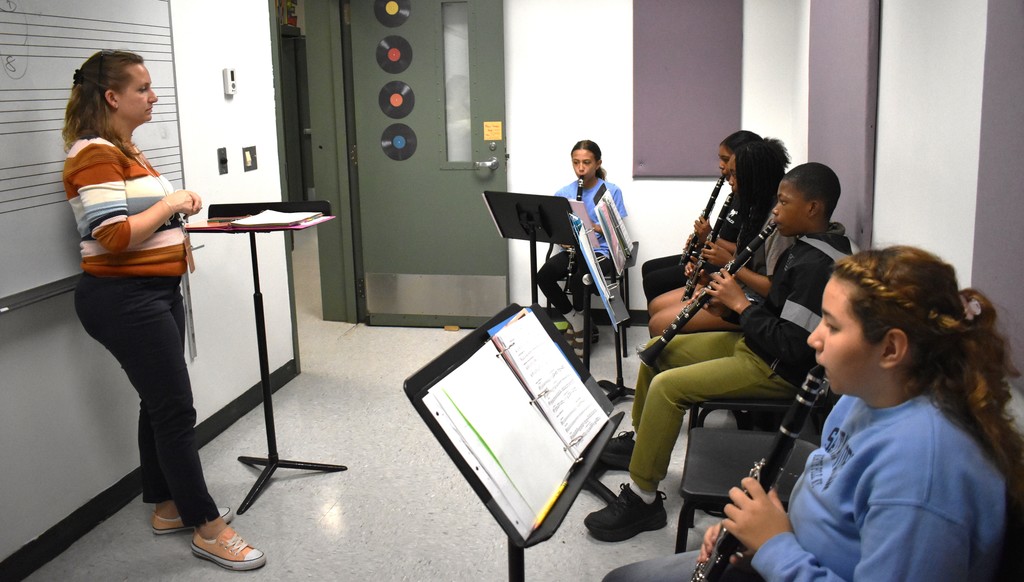
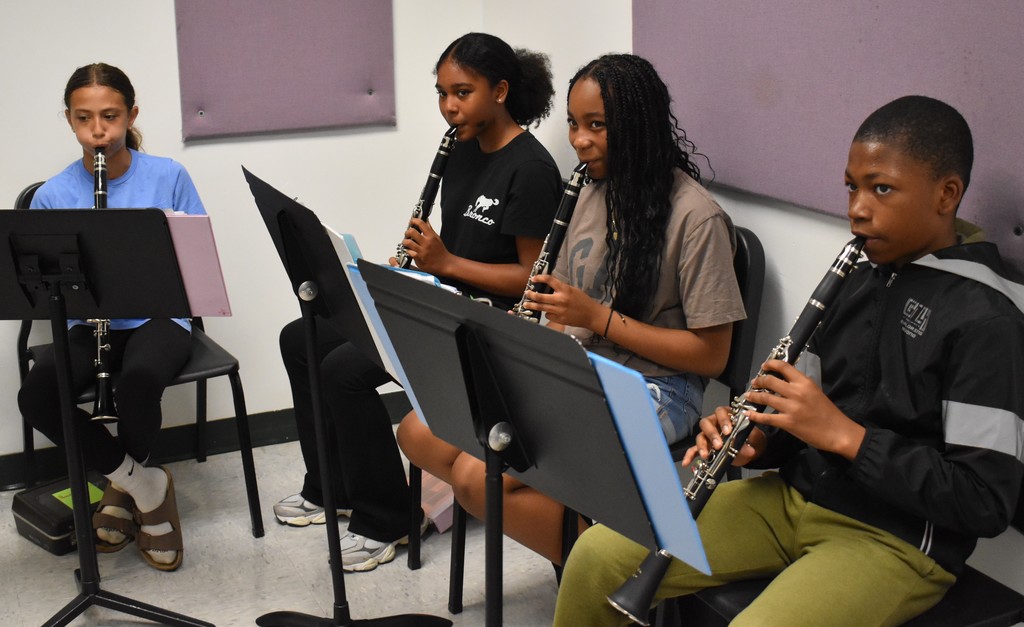
BE BOLD! BE COLD!
FREEZE FOR A GREAT CAUSE!
Minisink Valley is again creating a team for the 2025 Orange County Polar Plunge to support Special Olympics New York! The plunge will be held Saturday, Nov. 8 at the Rez in Highland Mills!
JOIN OUR TEAM and help us retain our title as the “Cool School Challenge” winner! Last year, Minisink Valley won the 2024 Cool School Challenge (retaining this title earned in 2023) and raised $4,022! We are looking to exceed this amount this year!
The “Cool School Challenge” is a friendly competition between local schools as part of the 2025 Orange County Polar Plunge. Not only are our school clubs and teams as well as families and students invited to join us our team, we’re looking for community members to be a part of it, too! It was great to see the large number of people participating last year and we’re hopeful to see this number grow this year!
Director of PPS Jeff Finton is overseeing Minisink Valley’s efforts to create a team. JOIN US and BE COLD: Email Jeff Finton at: jfinton@minisink.com.
Thank you for whatever you’re able to do to support this initiative!

CTE FAMILIES: A reminder that Orange Ulster BOCES' CTE Open House is Thursday, Oct. 16!
--- Level I students' parents and guardians: 6 to 6:45 p.m.
--- Level II students' parents and guardians: 7 to 7:45 p.m.
Meet your student's teacher and members of the CTE staff and get a understanding of the expectations and opportunities for Level I and Level II students. You're invited to learn more about CTE's experiential learning and practical applications opportunities which prepare students for college and careers.

During their group’s recent “Knowledge Time,” Mrs. Manganello’s shared some interesting facts with them as they dove deeper into “The Dog in the Manger” fable. They now know there’s a big difference between straw and hay even though they may look the same. “Straw,” she told them, is for animals to lie down on, while “hay” is food the manger keeps for animals.
They also now know that "The Dog in the Manger" fable teaches a lesson about selfishness and greed, warning against the kind of spiteful behavior where a person prevents others from having something they themselves cannot use or benefit from.
Teachers often use the concept of "knowledge time" with their students as a general description for any structured learning segment, often focused on building background knowledge and developing conceptual understanding within a specific curriculum framework.
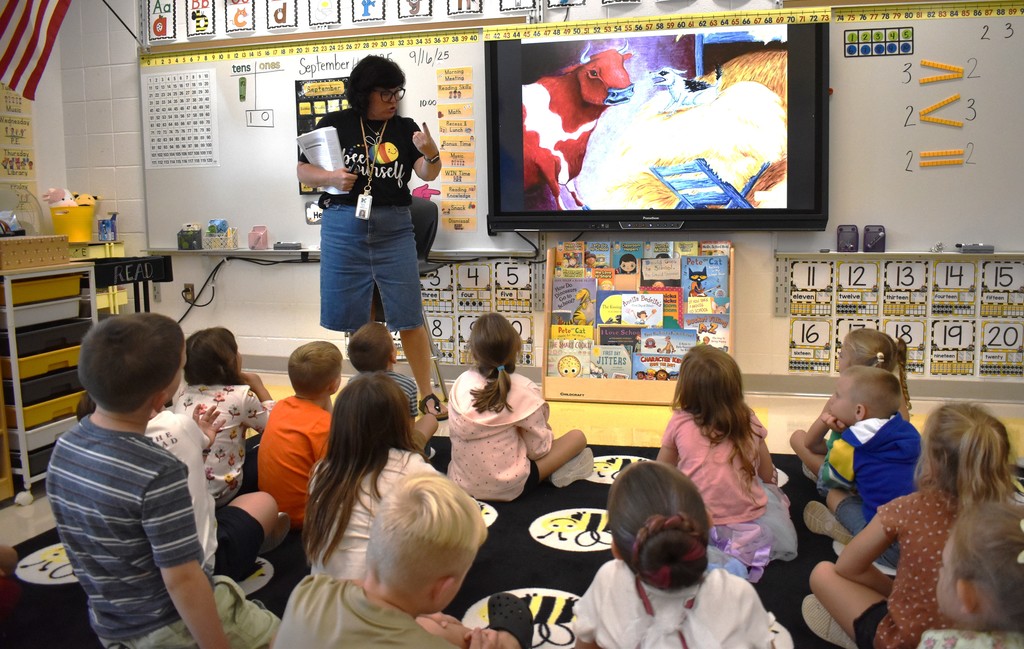
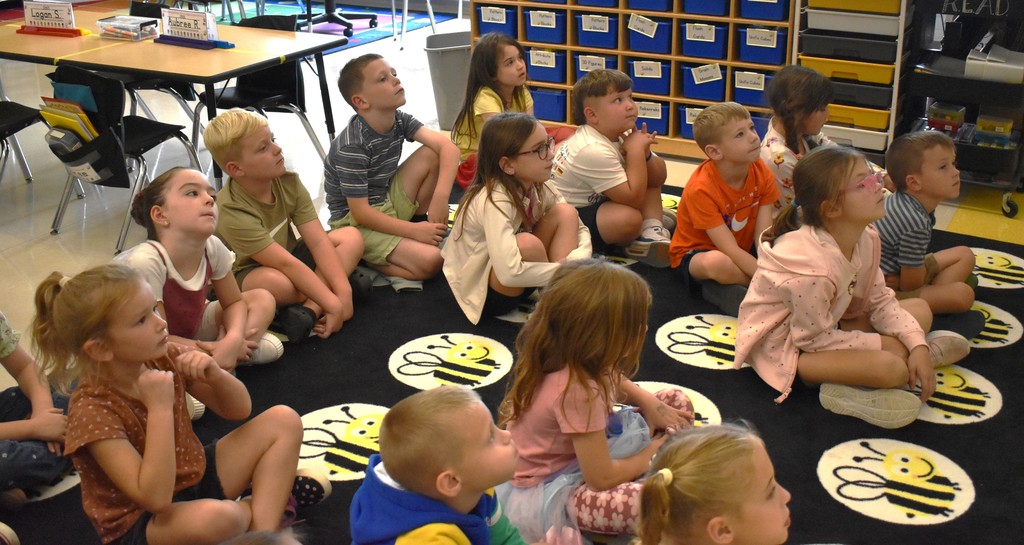
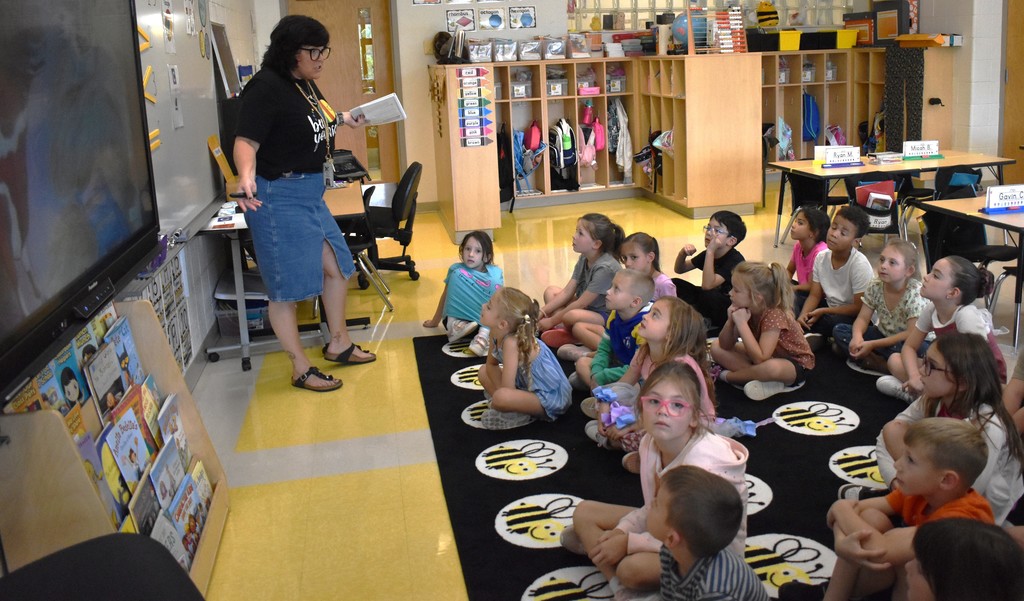
NOODLE DANCE TAG! Who’s in? Leyla Johnson’s IS third-graders are!
In this fun physical education activity, students were recently tasked with performing the designated locomotor movement (walking, skipping, galloping, etc.). If they were tagged with a foam pool noodle, they were tasked with dancing in place until the music stops.
Many students also demonstrated the very cool dance moves they’d do if tagged ahead of time! What a fun physical education class which included dancing to some iconic music!
Locomotor movement is important because it is fundamental to daily life, builds the foundation for lifelong health and fitness by developing gross motor skills like balance, coordination, and endurance, and supports overall development by fostering confidence, independence, and engagement in social activities and sports.
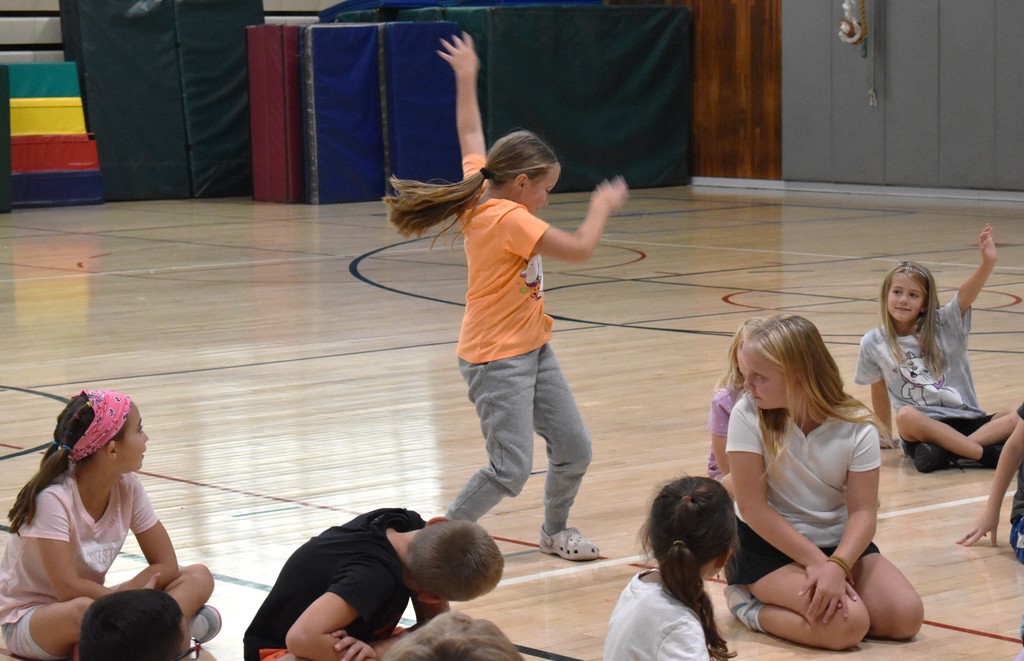
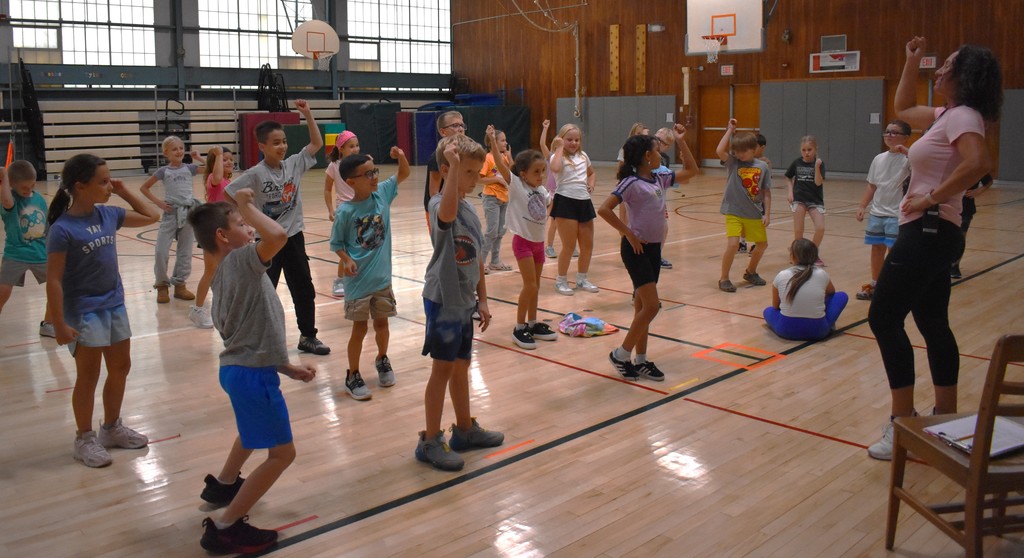
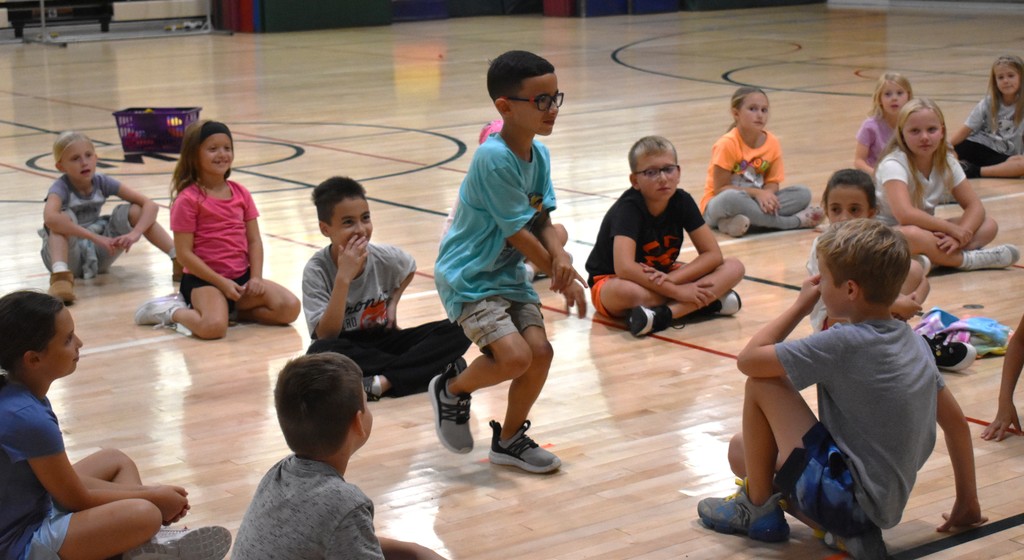
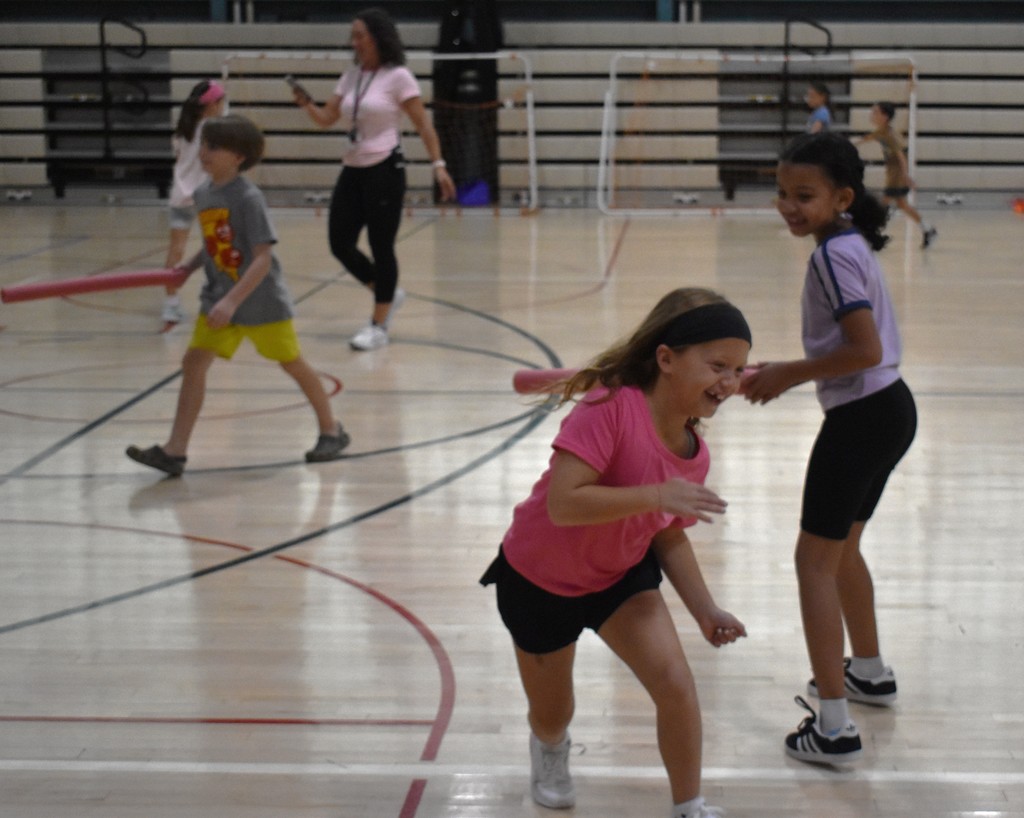
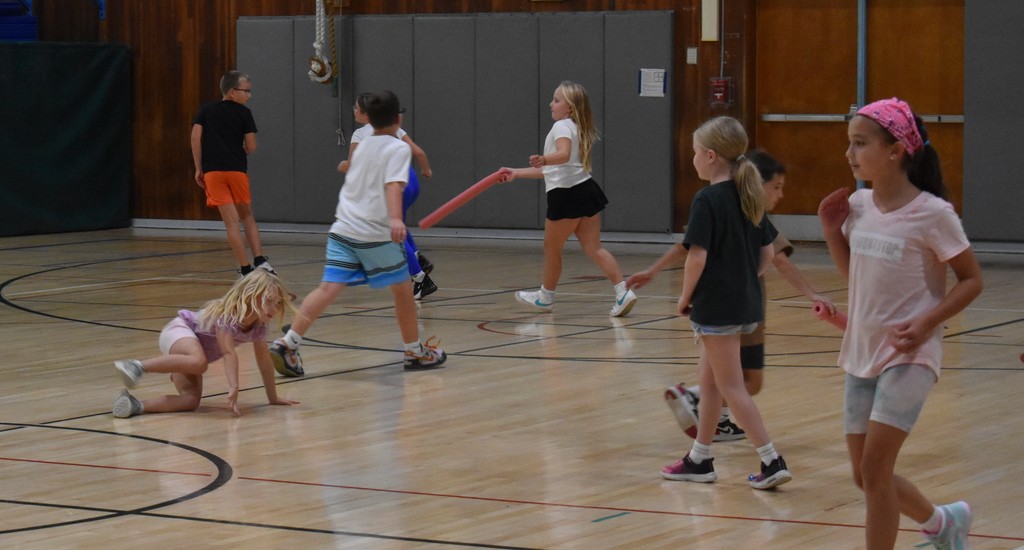
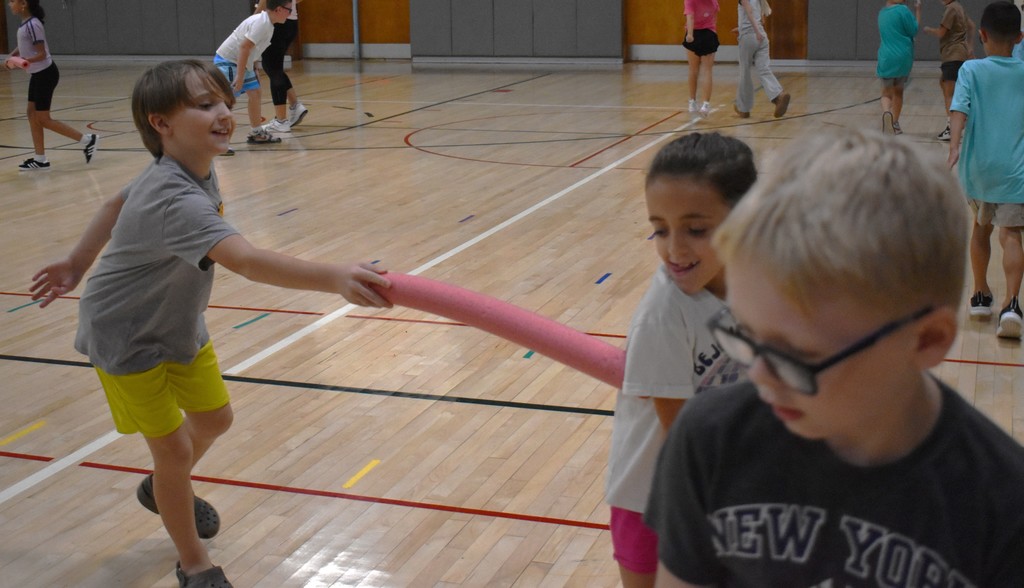
Take a peek at their recent session, where students selected two books each and took turns reading to each other as well as the rules and operations behind partner reading.
Her students fully understand that in partner reading, they should sit near each other, put the book in the middle, decide how the book is going to be read, decide who’s going to go first (Usually, rock – paper – scissors determine this!). They’ve also figured out how to be a learner and be a teacher and help each other out along the way! Well-done to everyone!
Partner reading boosts fluency, builds confidence, and enhances concentration through shared reading of connected text. It provides a supportive, low-pressure environment for practicing reading skills while allowing students to increase the time they spend reading orally. PLUS! The social aspect of partner reading improves motivation, fosters positive social interactions and helps children develop comprehension skills as they discuss the text together.
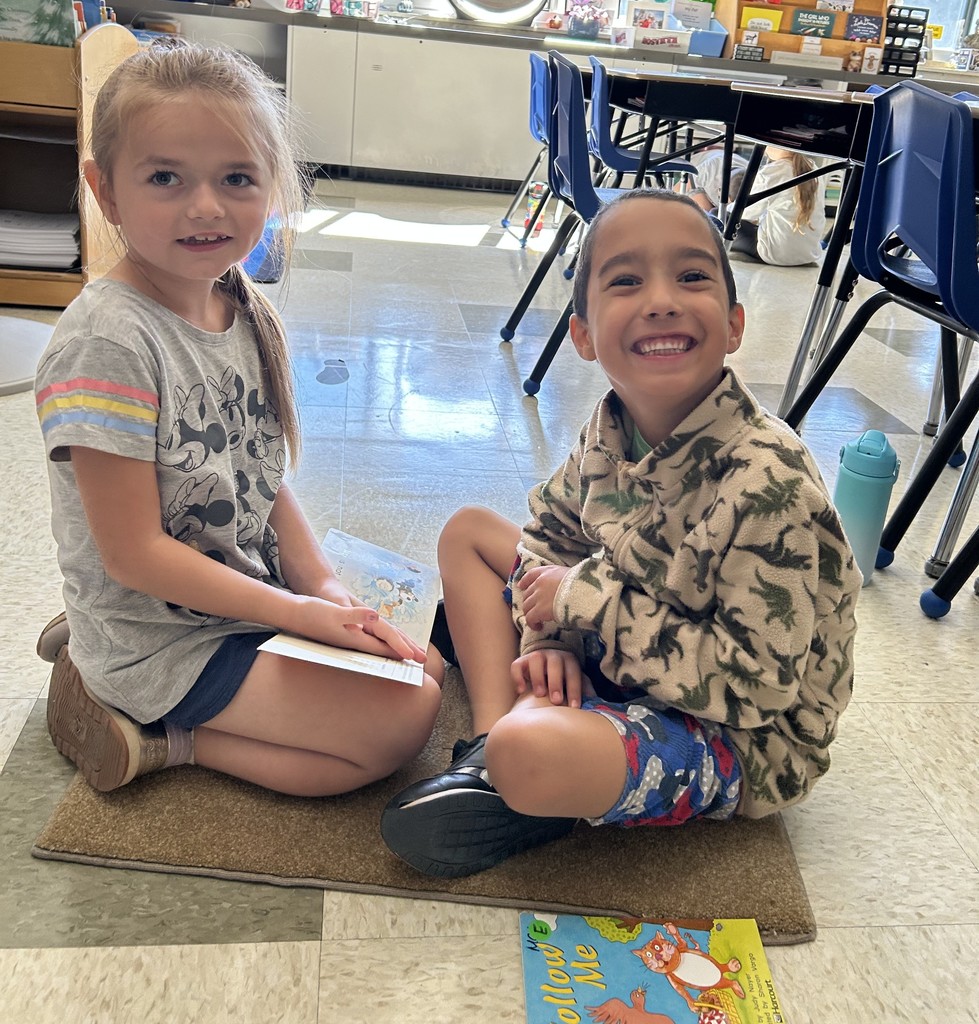
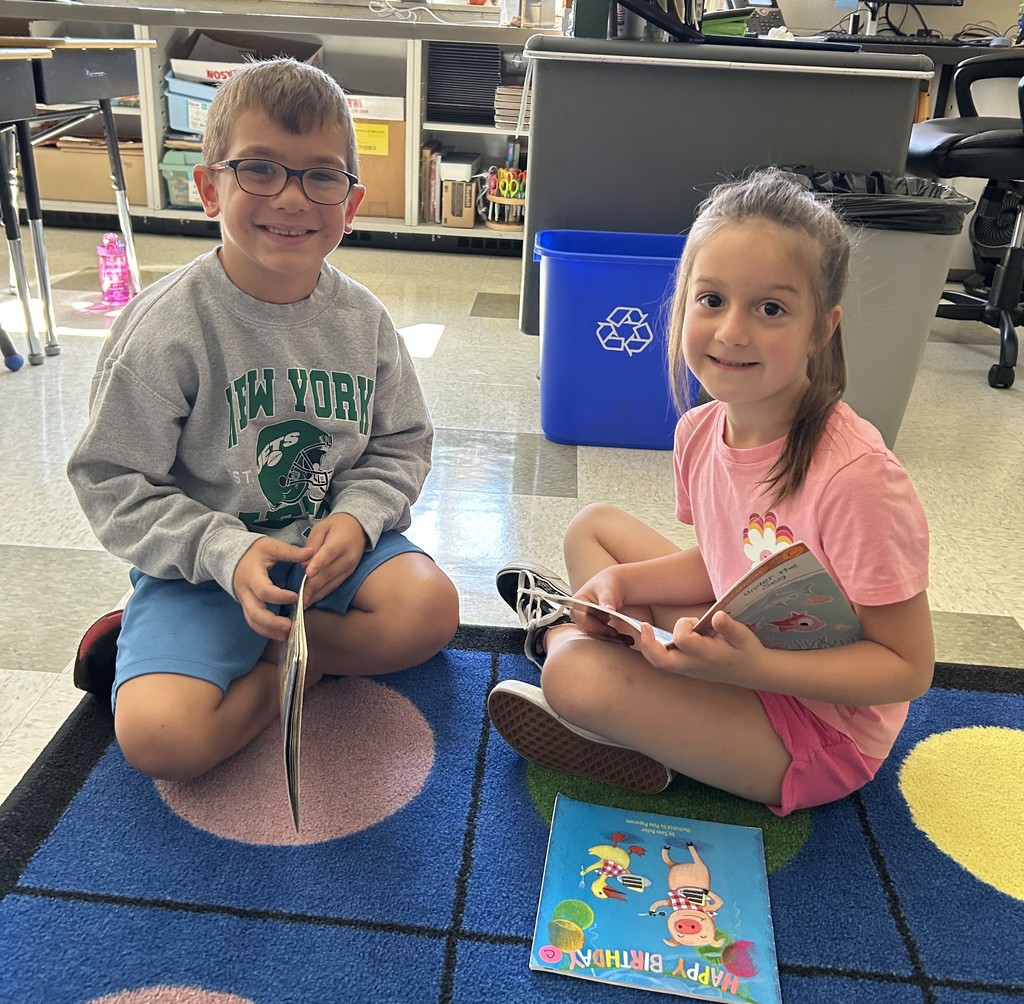
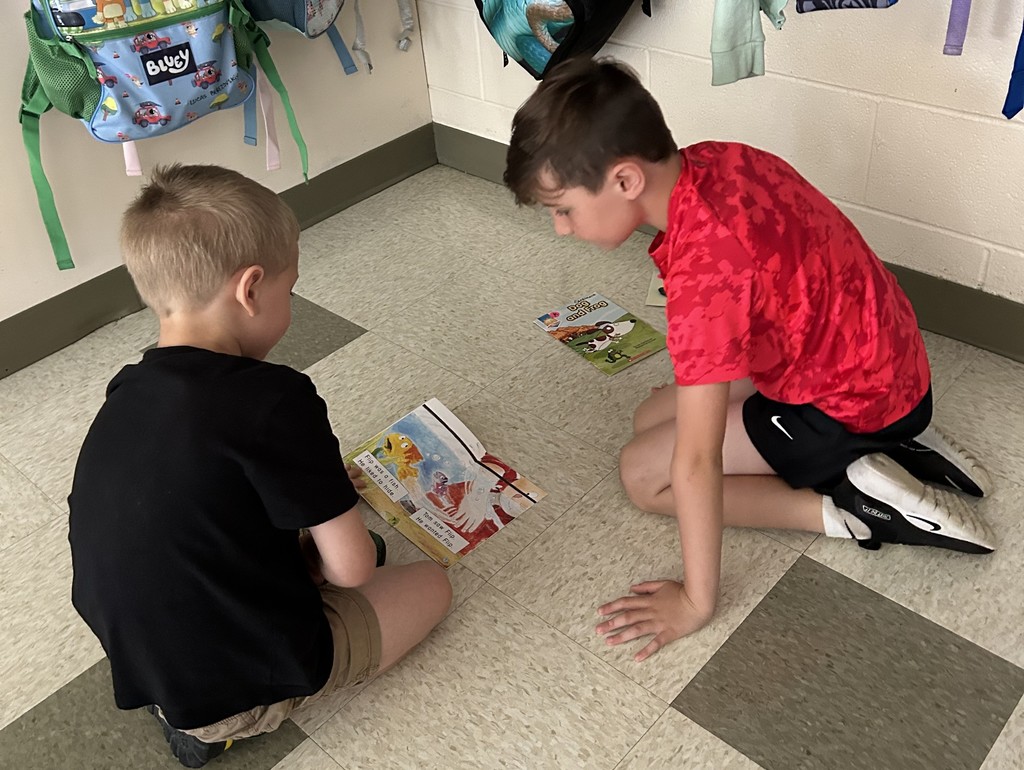
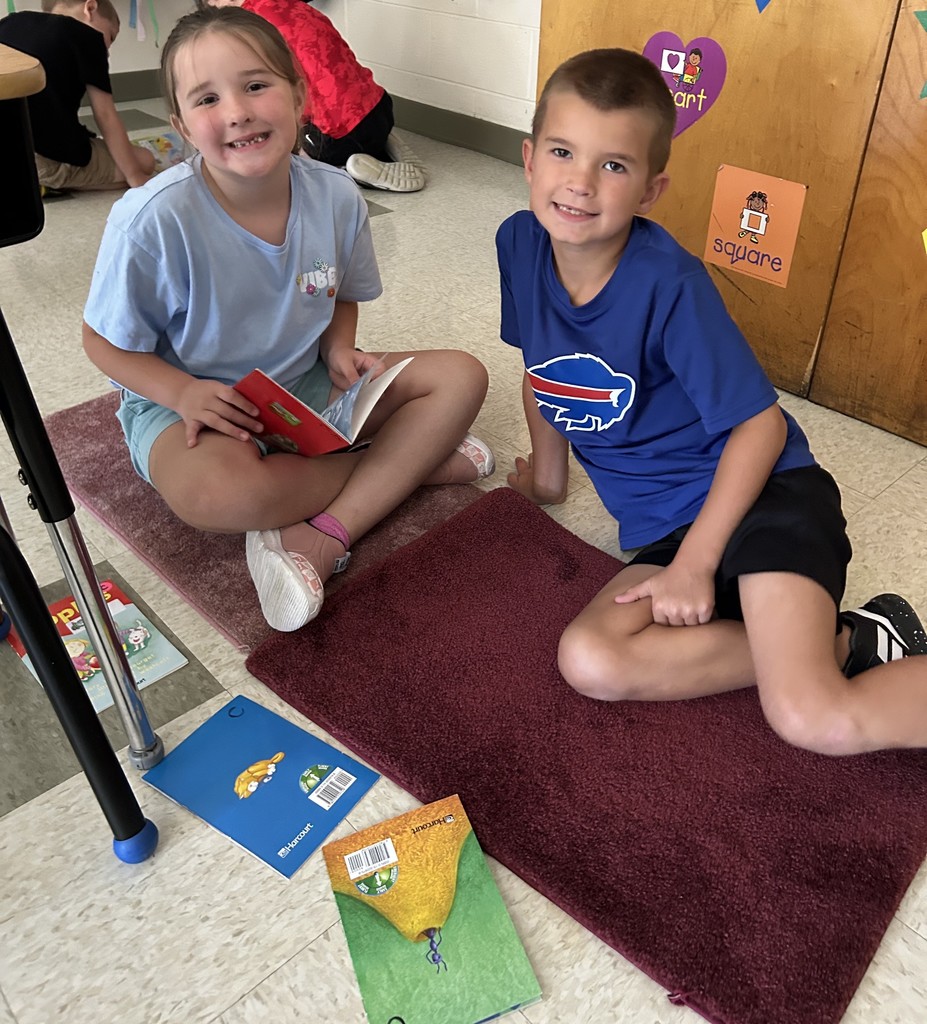
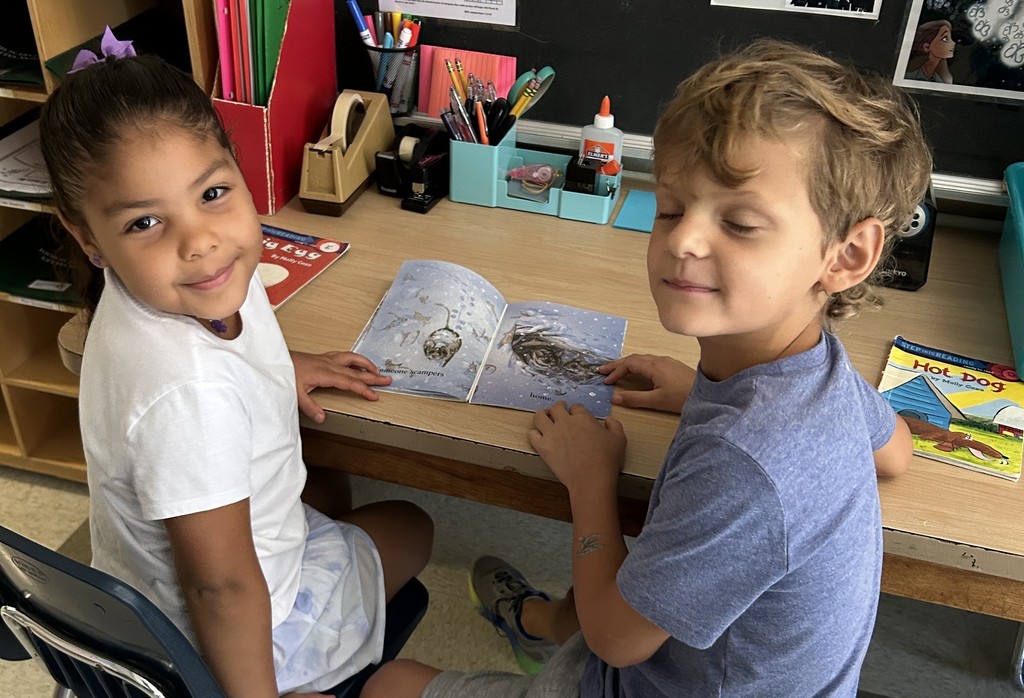
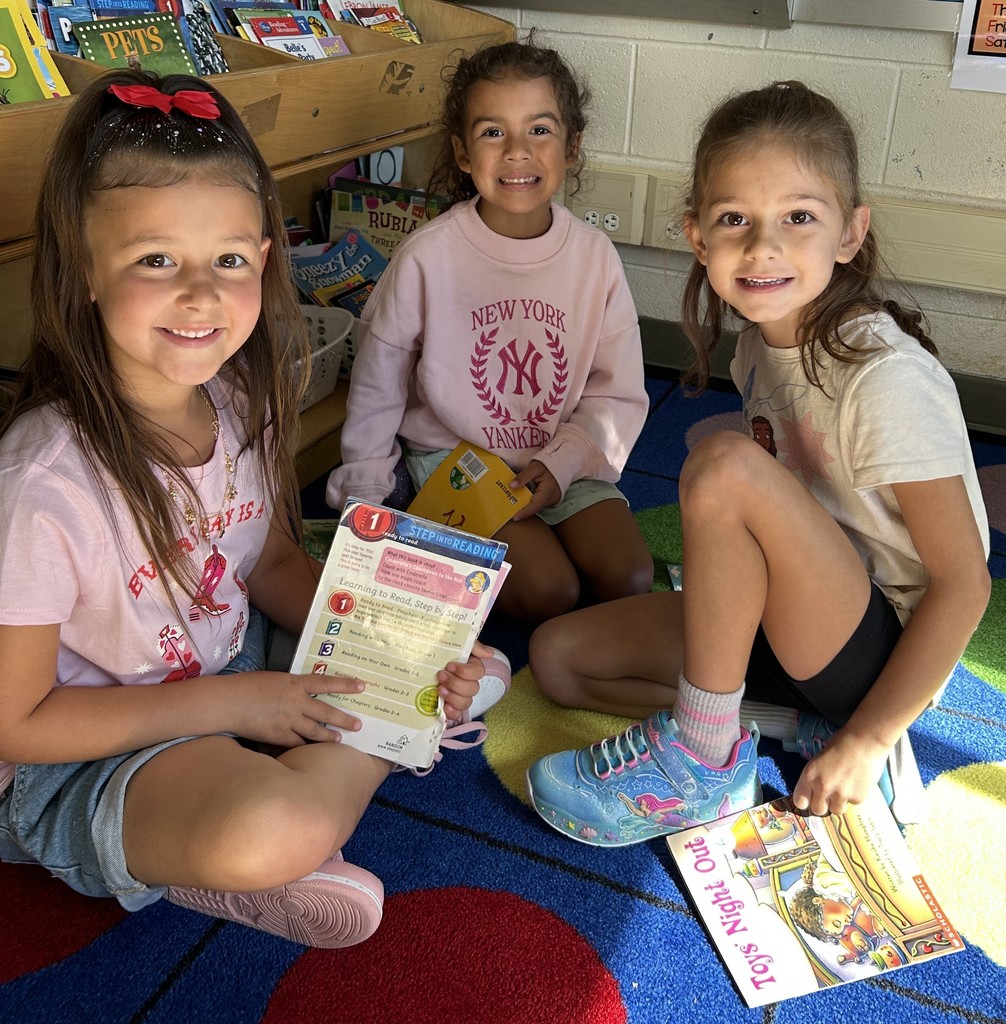
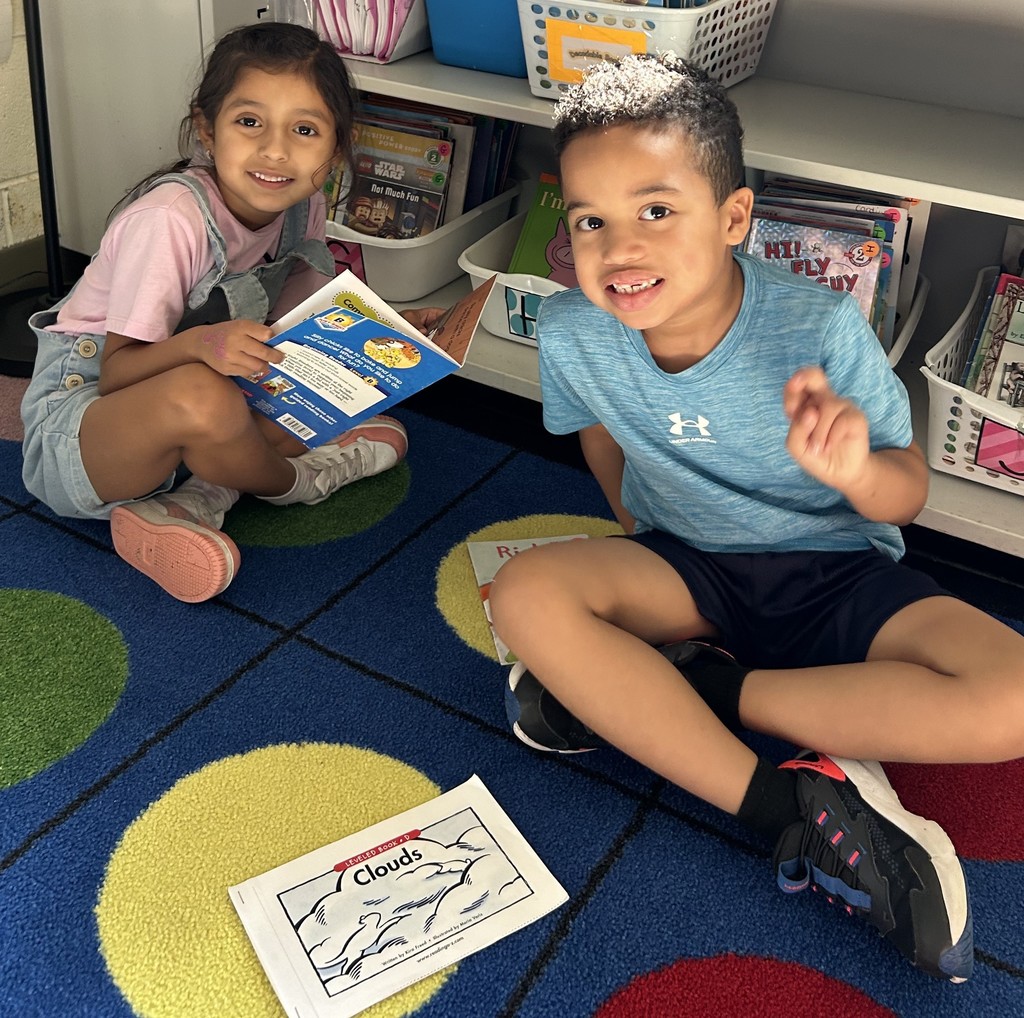
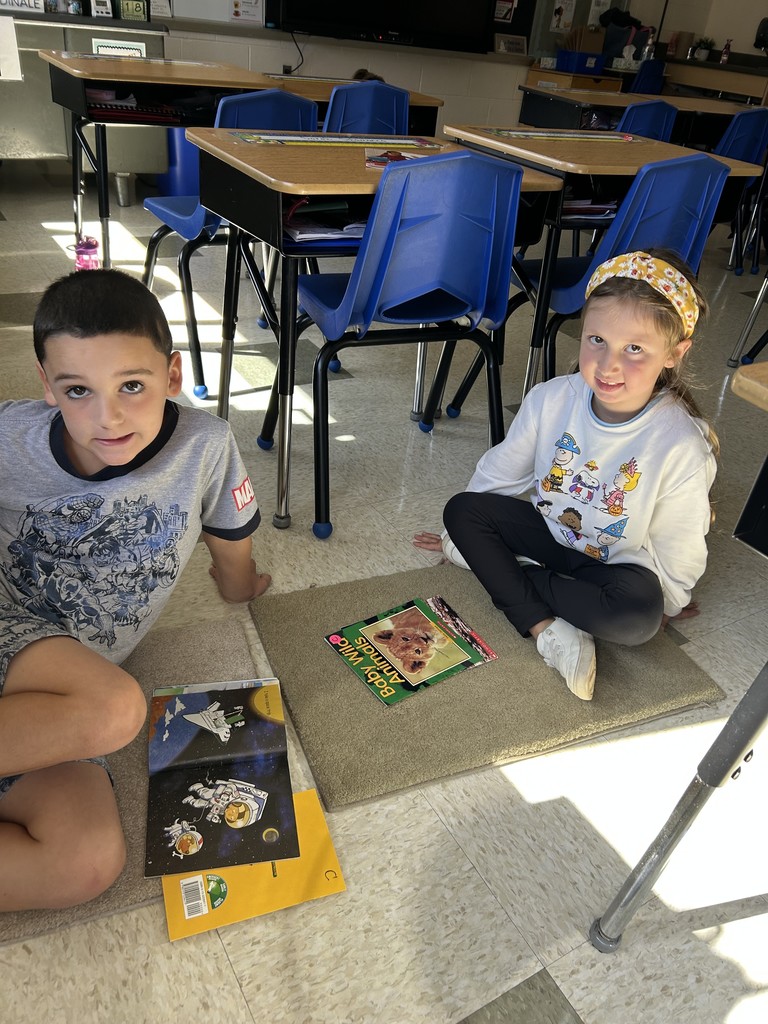
Reading about book care, and especially book care disasters, reinforce important concepts like respect, responsibility, and empathy. Seeing the consequences of book negligence makes the abstract concept of "taking care of a book" tangible for readers of all ages.
The concept of respect for shared resources in a library reminds library students that book damage affects others because, for example, a damaged book may not may no longer be available to, and disappoint, others who want to read it.
PLUS! Proper book care can be considered a foundation life skill that can extend to other areas, such as reminding students that carelessness in other things they might do could have a negative impact. It also reinforces the importance of accountability for one’s actions as well as problem-solving and proactive thinking --- how to prevent incidences of possible damage. Equally important is proper book care reinforces the value of what books offer --- important learning opportunities and the joy of reading!
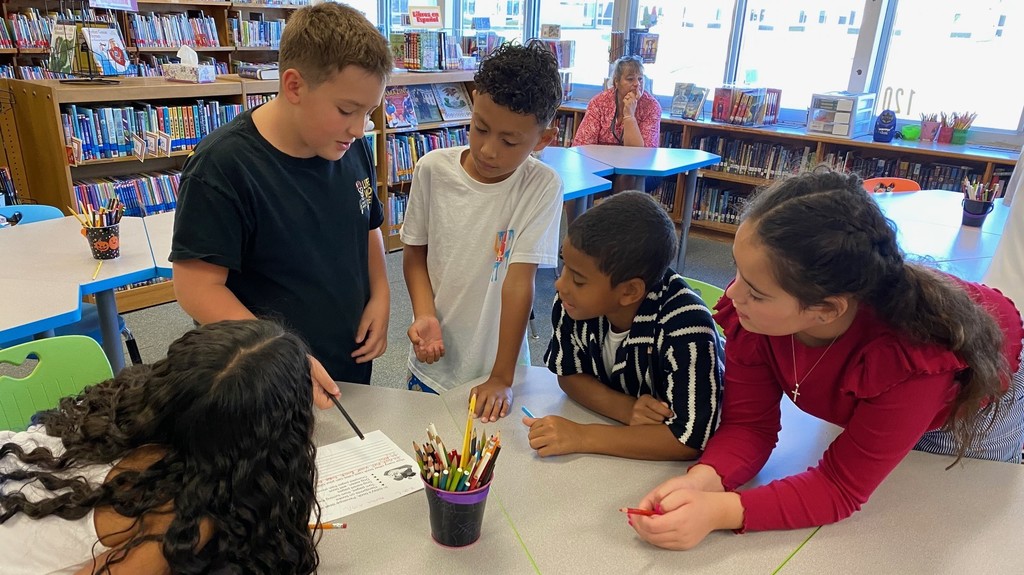
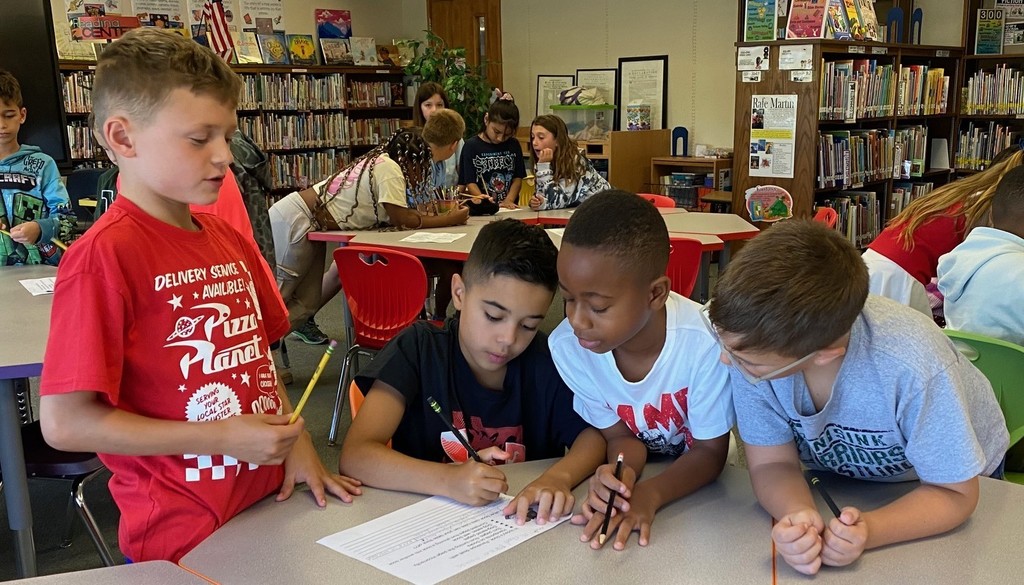
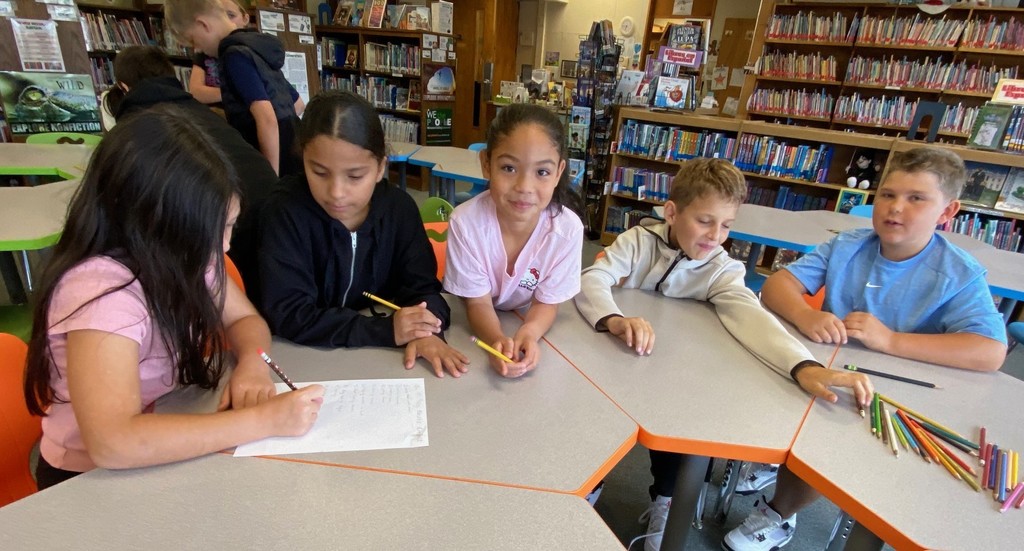
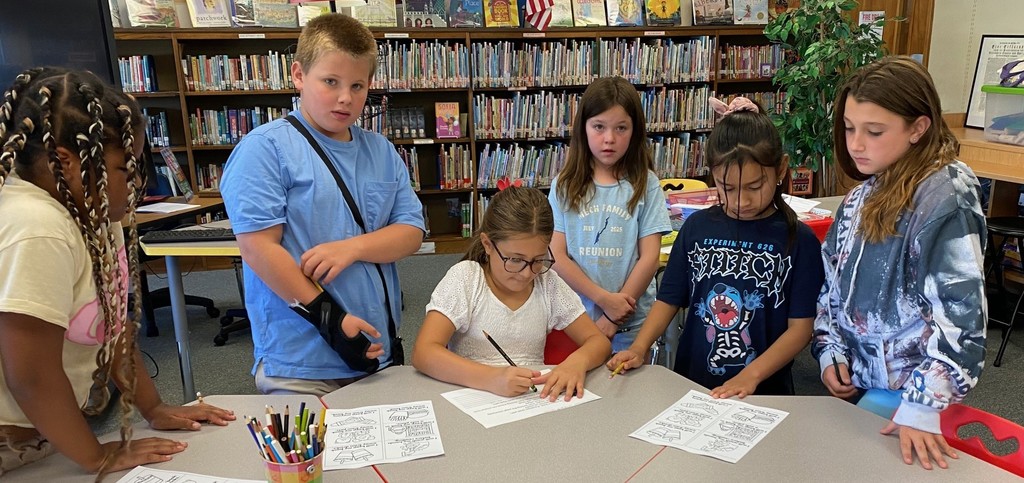
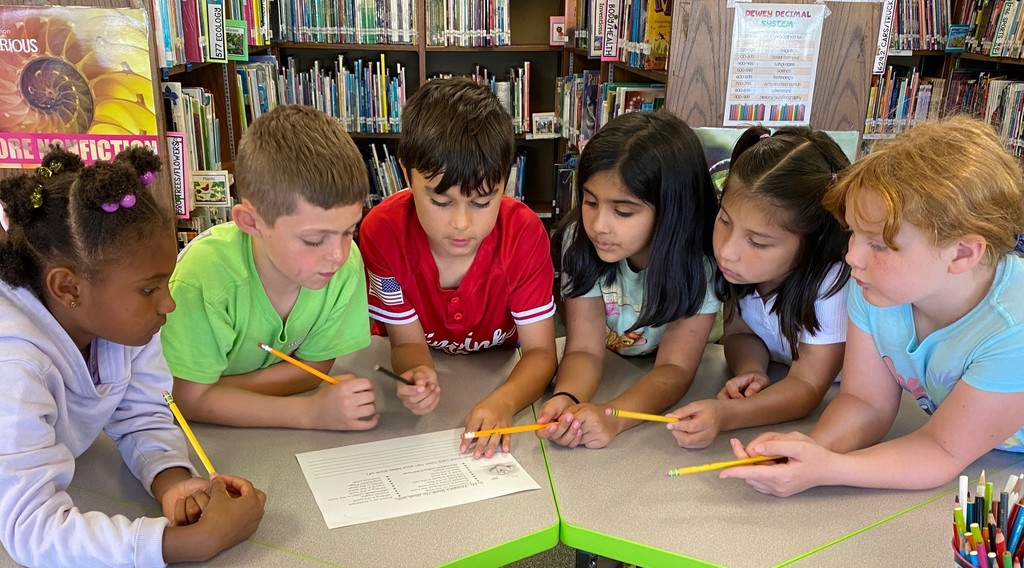
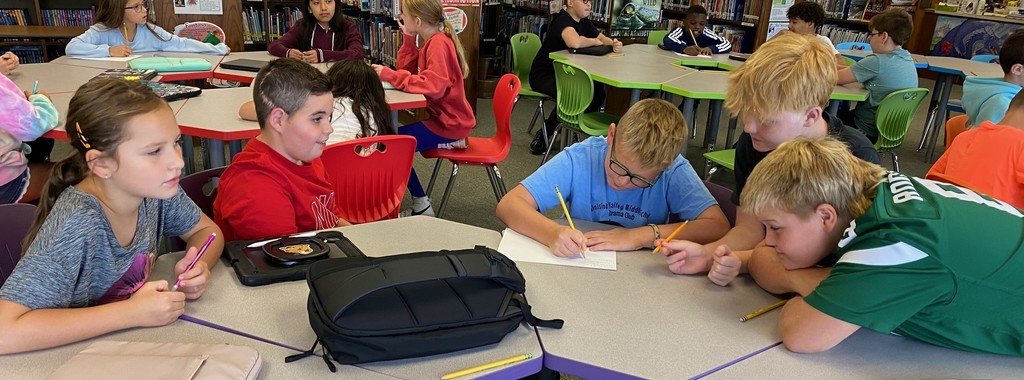
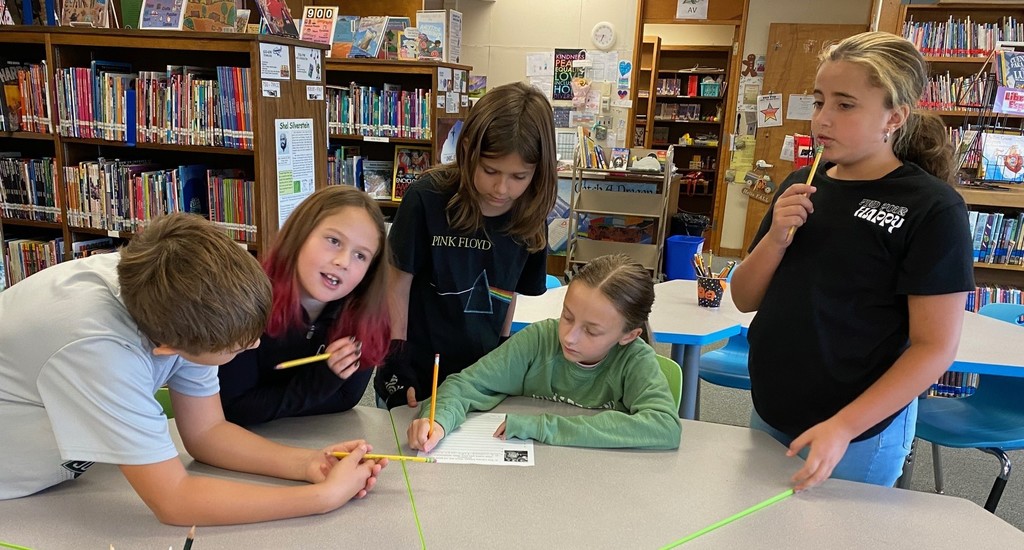
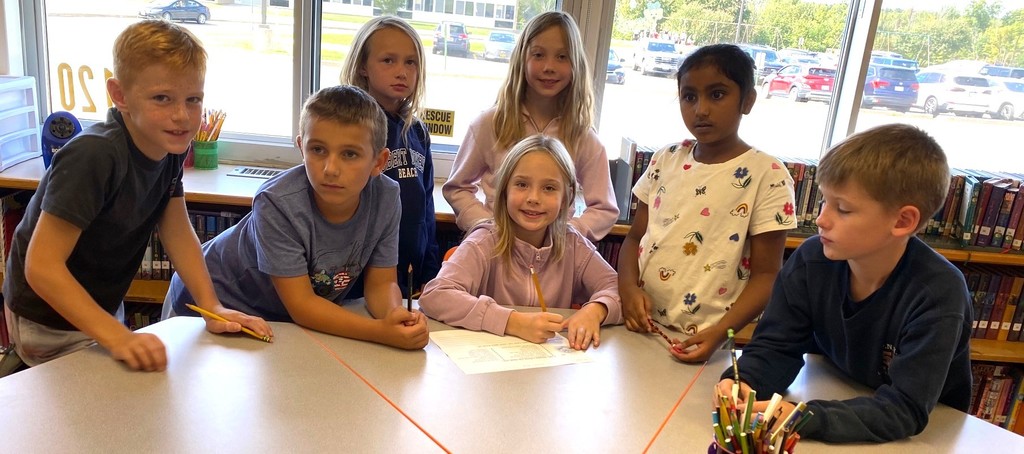
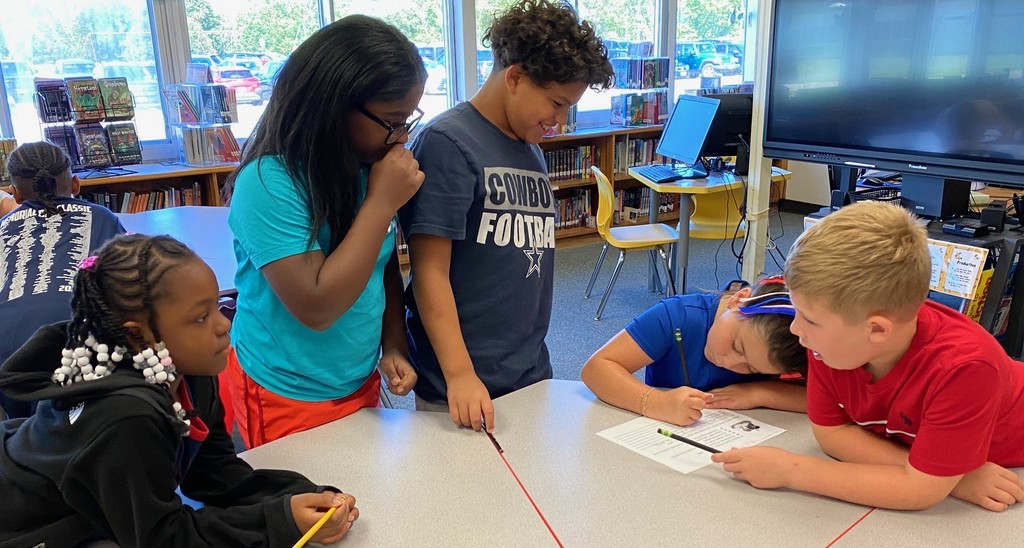
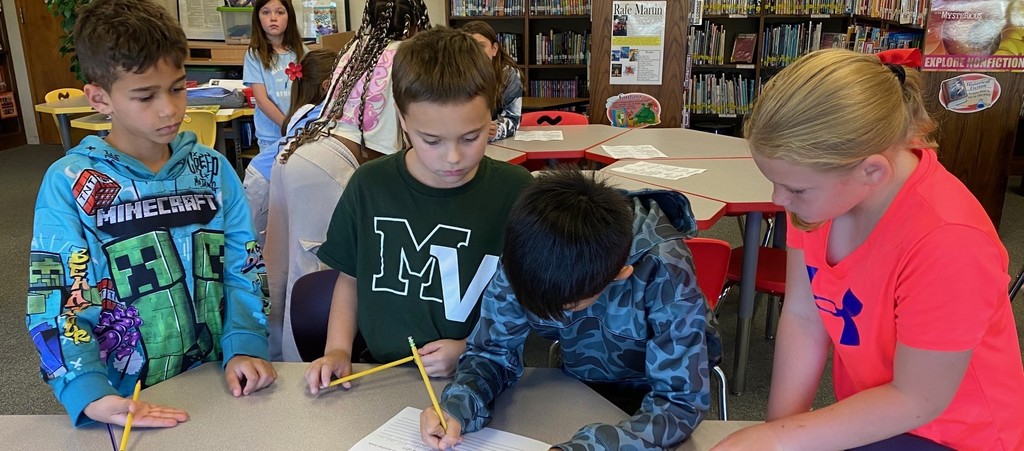
"Chippity chop
"Cut off the bottom and cut off the top
What we have left we put in the pot
"Chop chop
"Chippity chop!"
District kindergarteners, like Otisville Music Teacher Skyler Klein’s kindergarten music students, are settling in wonderfully to their music classes and learning a lot while having fun!
His little students are really good at singing the spoken chant called “Chop Chop Chippity Chop," which teaches about steady beat through repetitive actions and a steady rhythm, often using hand motions like chopping to a beat, similar to preparing ingredients for pie. It also fosters improvisation and creativity by having children suggest and "chop" various fruits for their imaginary pie, and can even introduce basic rhythm concepts like compound or 6/8 meter when children vary the speed of their "chippity chopping."
Their imaginary pies sound quite tasty, too, as the ingredients included mangoes, blueberries, apples, tomatoes, pineapples and more!
A spoken chant is a rhythmic repetition of words or a phrase, often performed by a group, that falls somewhere between speech and song.
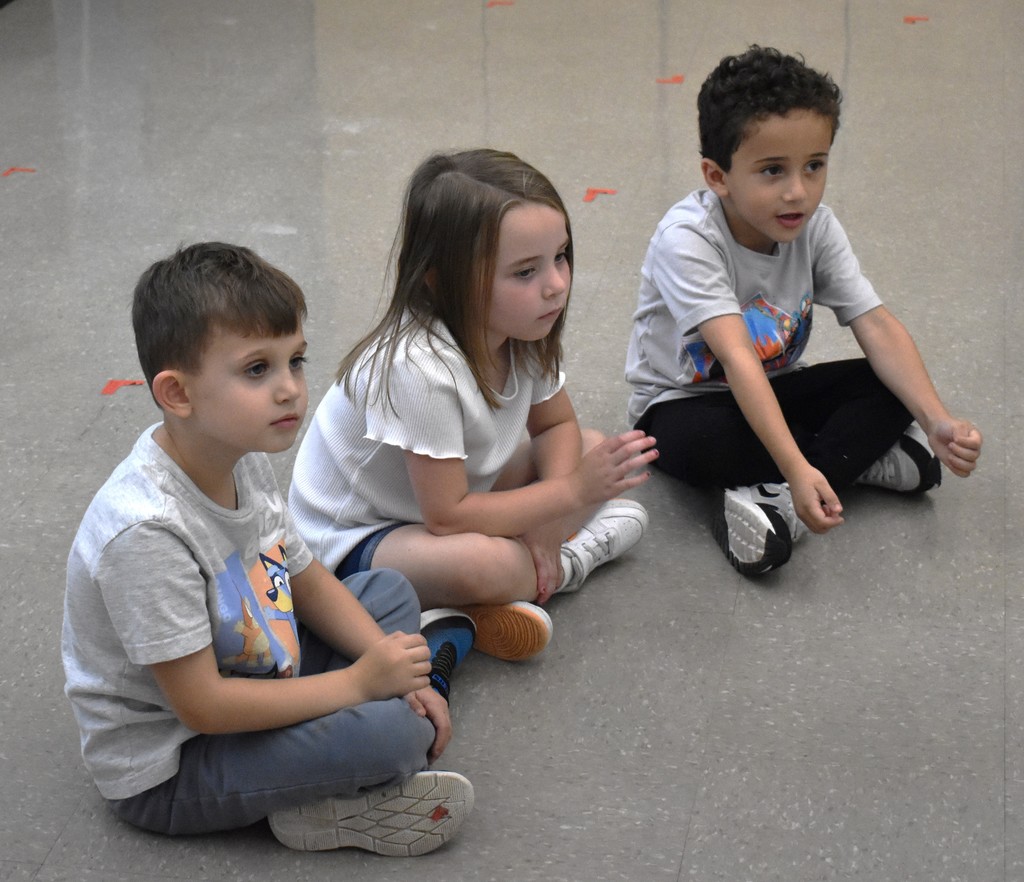
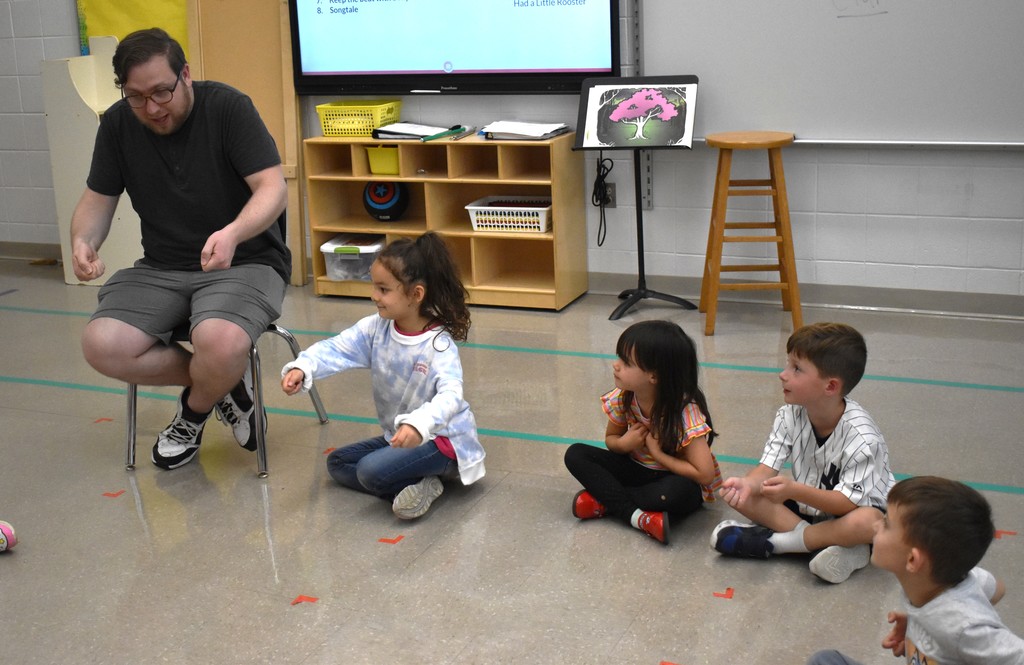
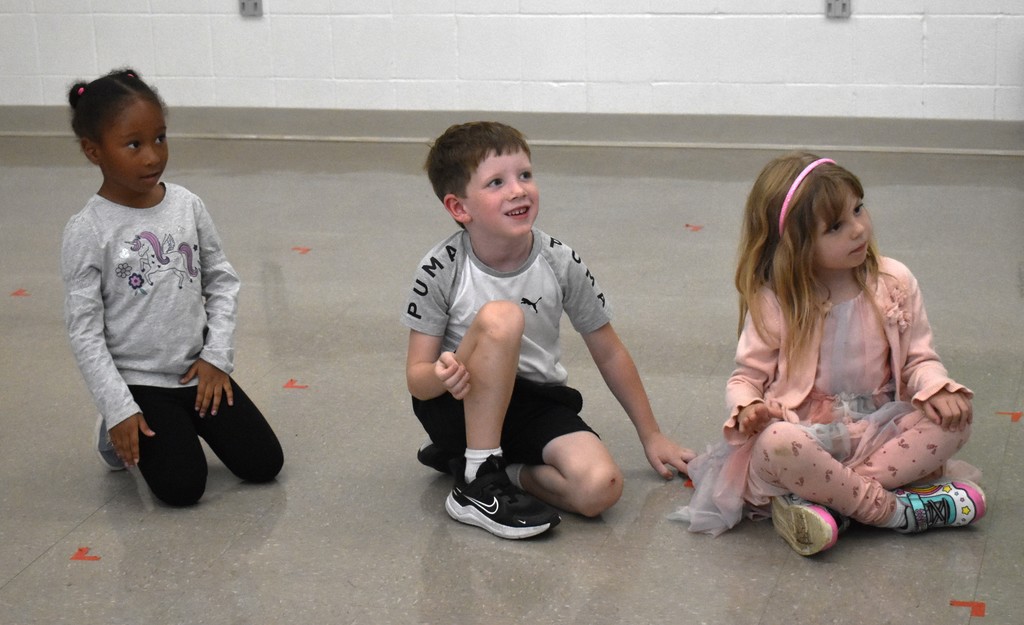
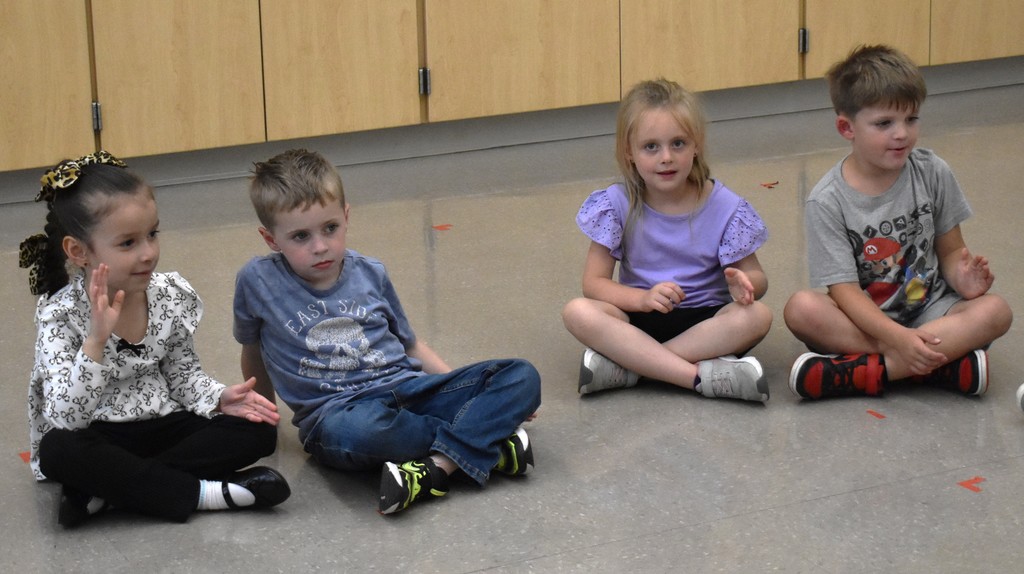
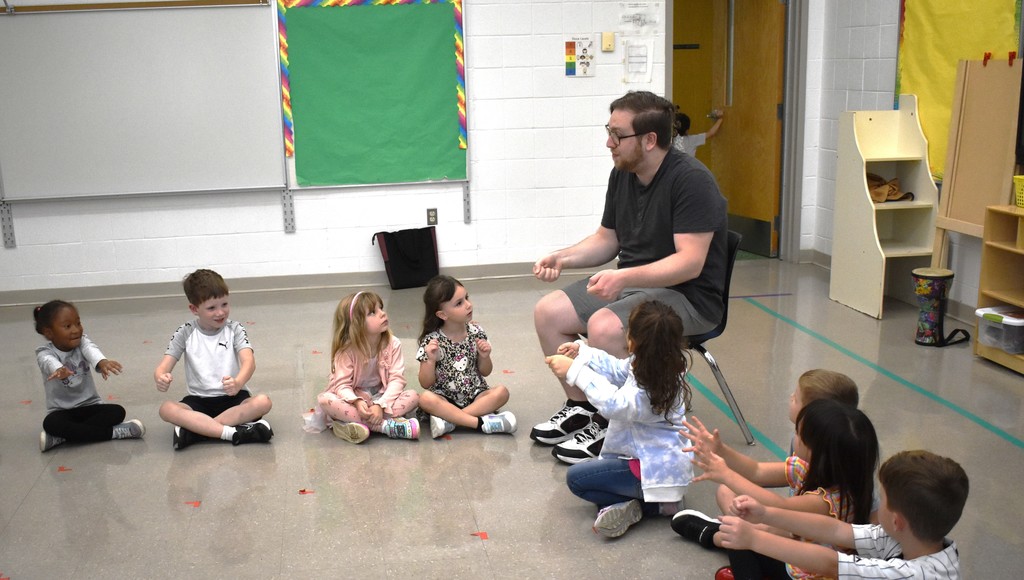
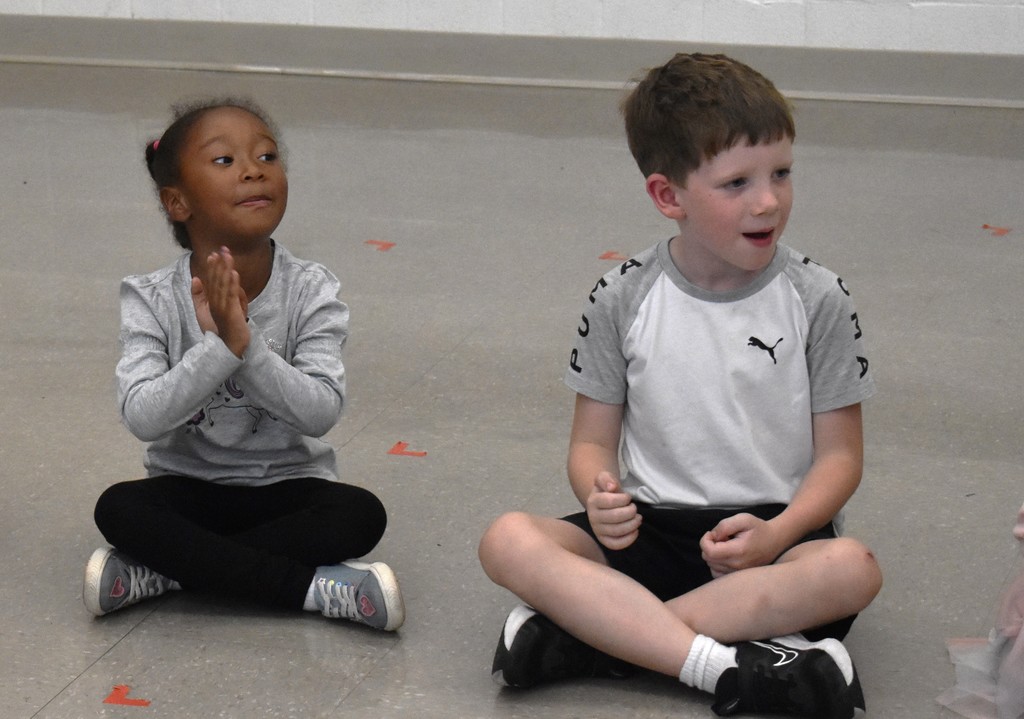
As part of this, she tasked her students to work with their partners to talk about a time someone had been kind and/or helpful to them. After sharing, students identified that "character’s" trait using evidence from their own experience to support the claim.
Why is Identifying character traits with evidence important? This skill improves reading comprehension by helping students understand character motivations, predict plot developments, and grasp a text's deeper meaning and themes. This skill also develops crucial analytical thinking, allows students to make strong inferences from the text, and provides a foundation for more complex literary analysis in higher grades by preparing them to understand and create their own complex characters.
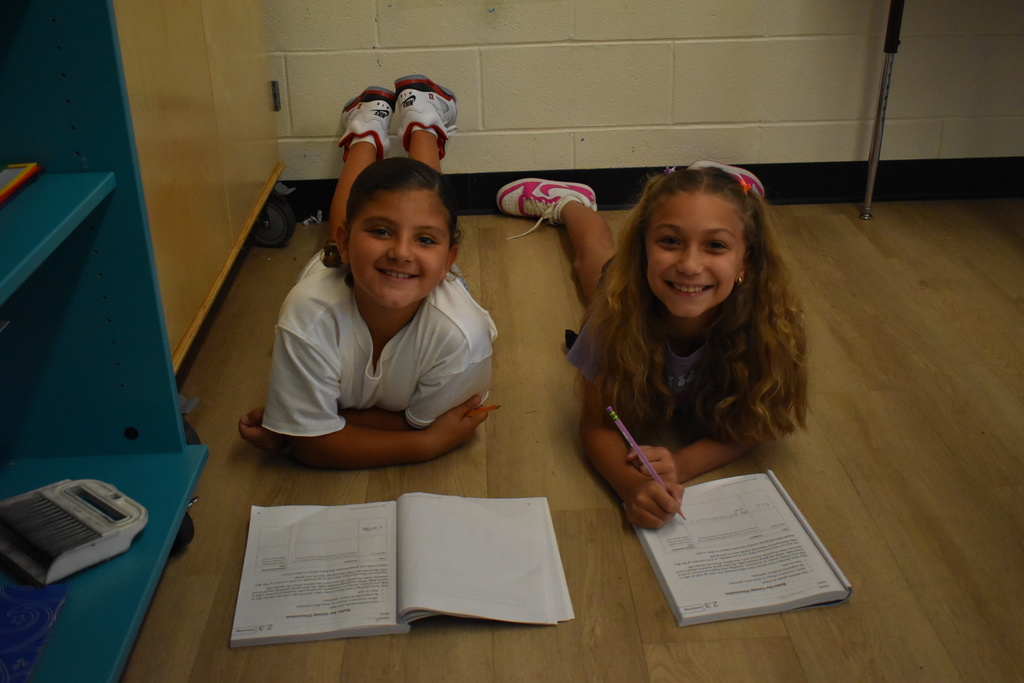
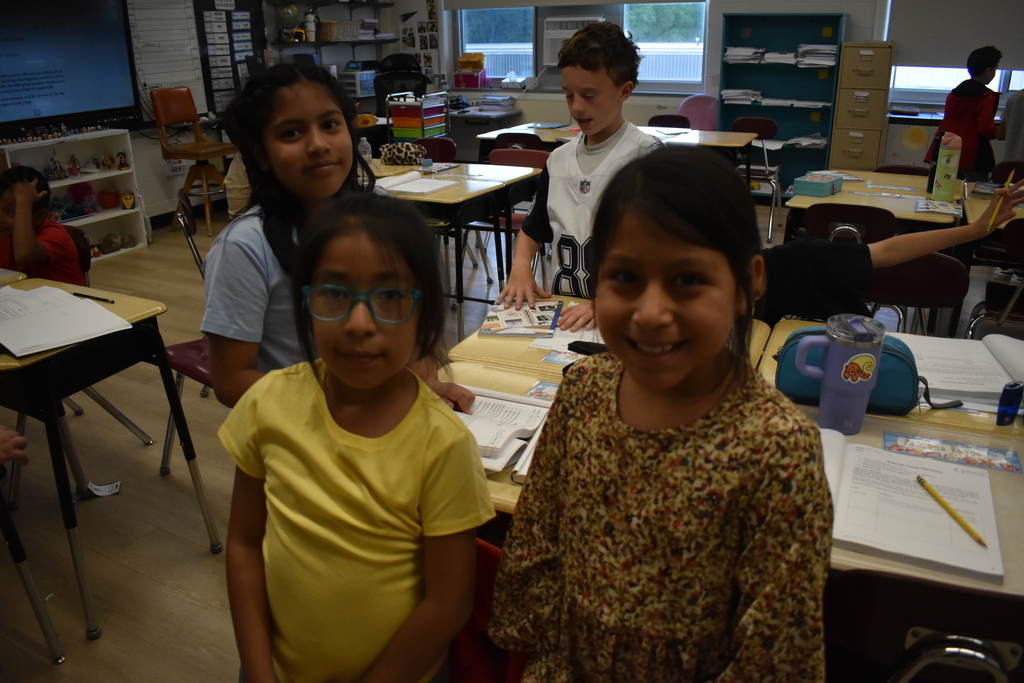
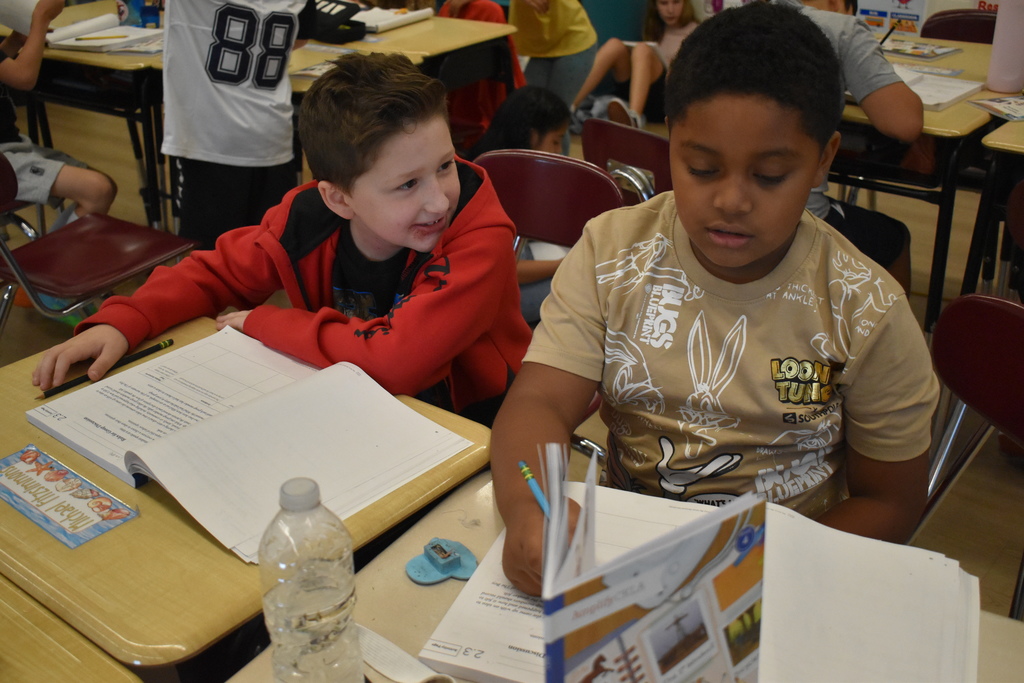
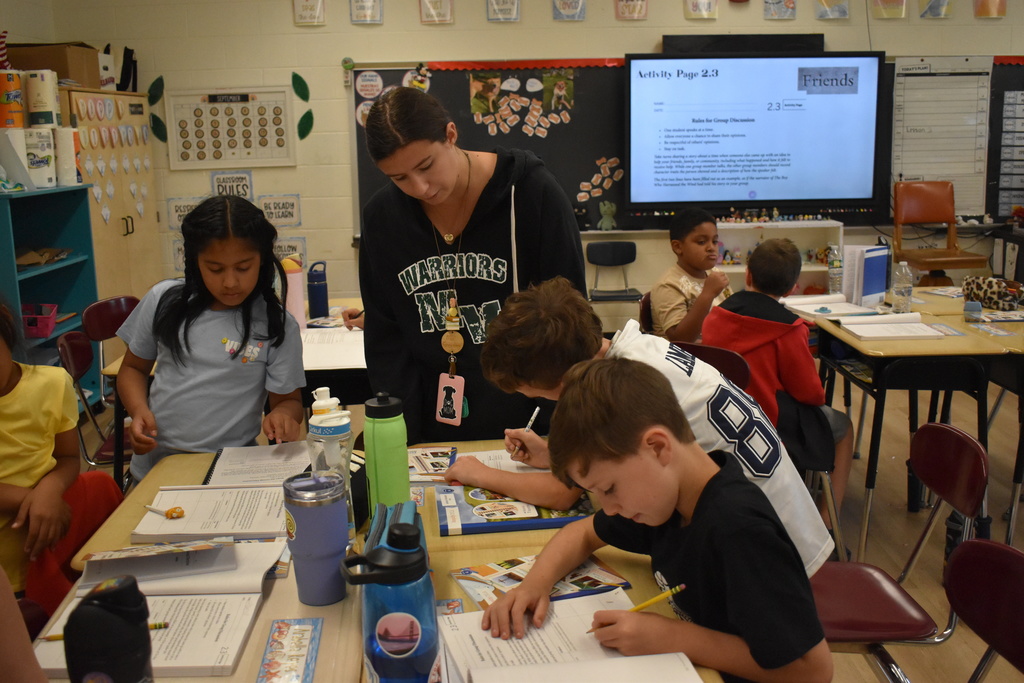
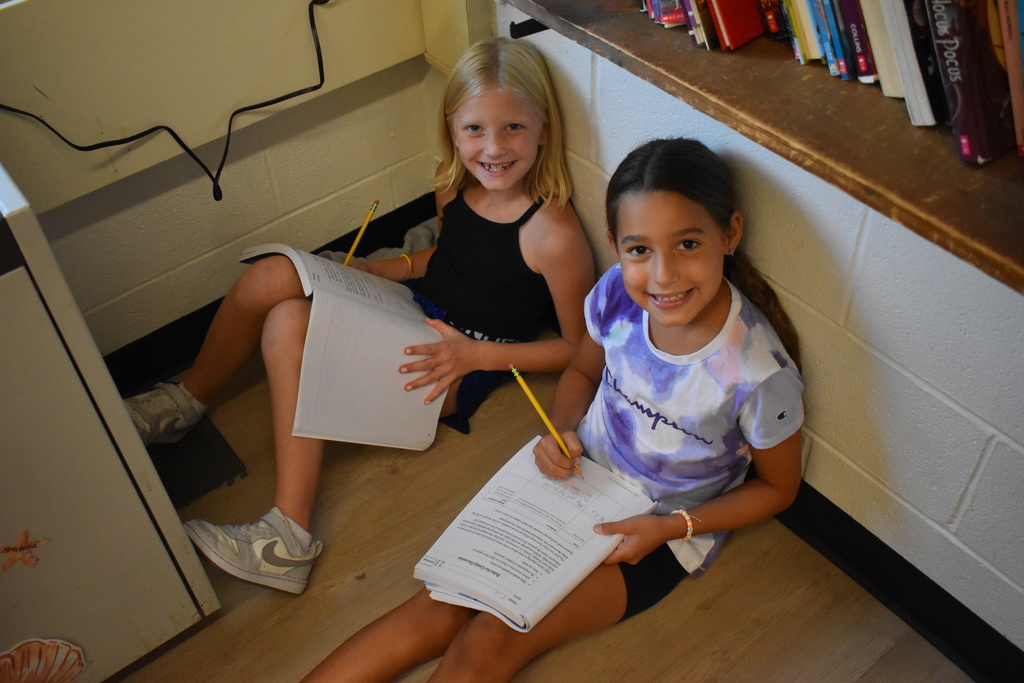
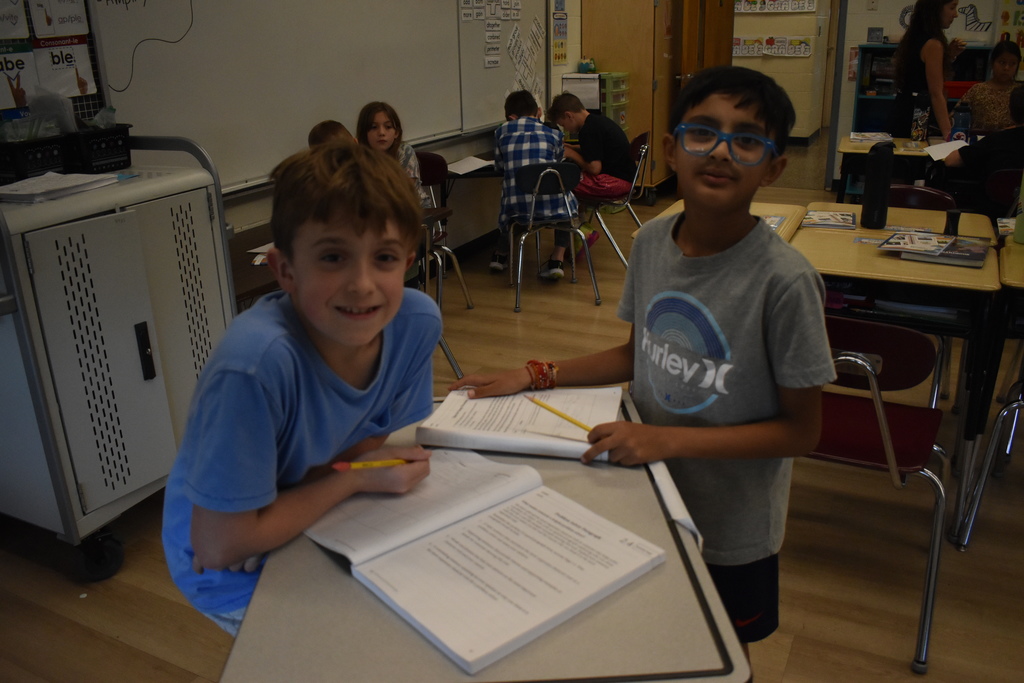
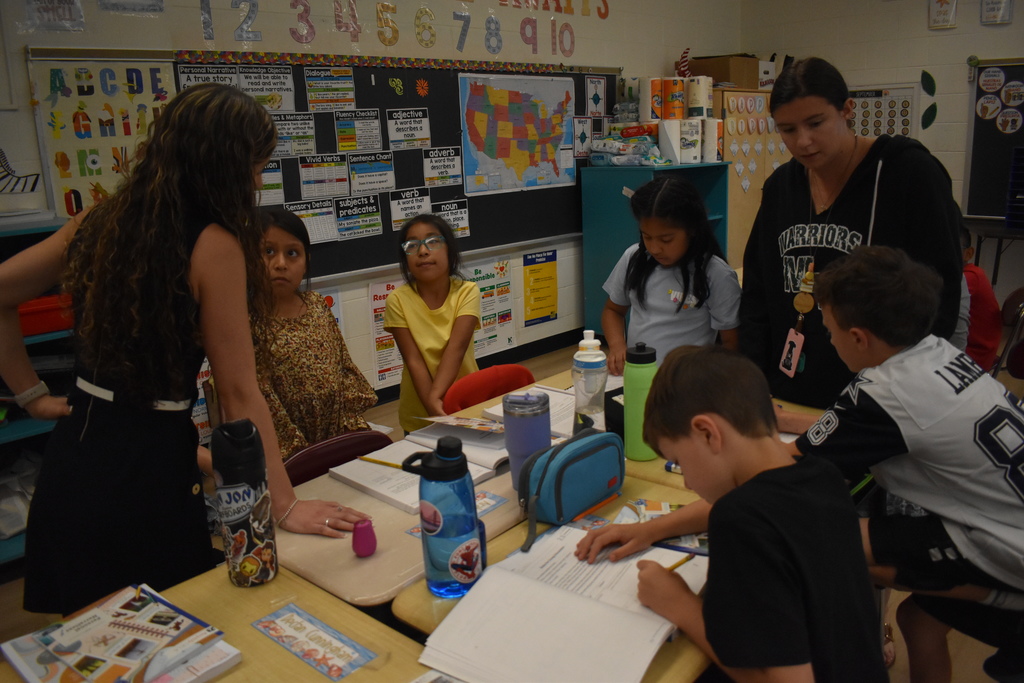
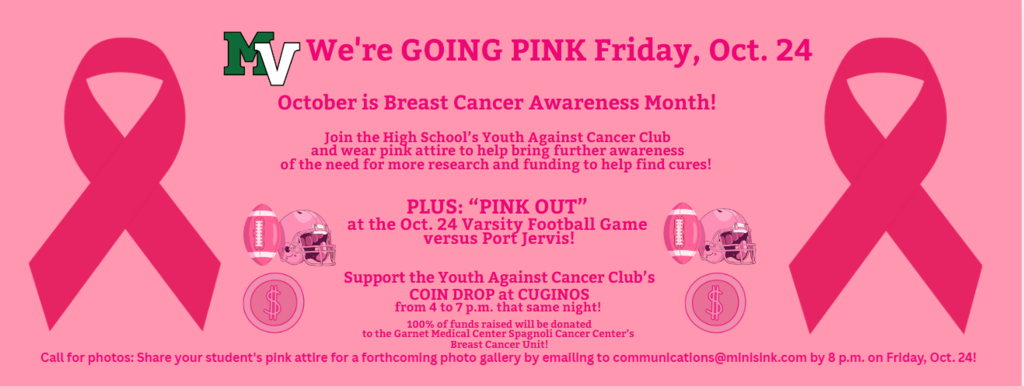
The moral of "The Fox and the Grapes" is that it's easy to dislike or say negative things about something you cannot have, because the fox, after failing to reach the grapes, decided the grapes were probably sour anyway. For a first-grader, this means you shouldn't pretend you don't want something just because you can't get it.
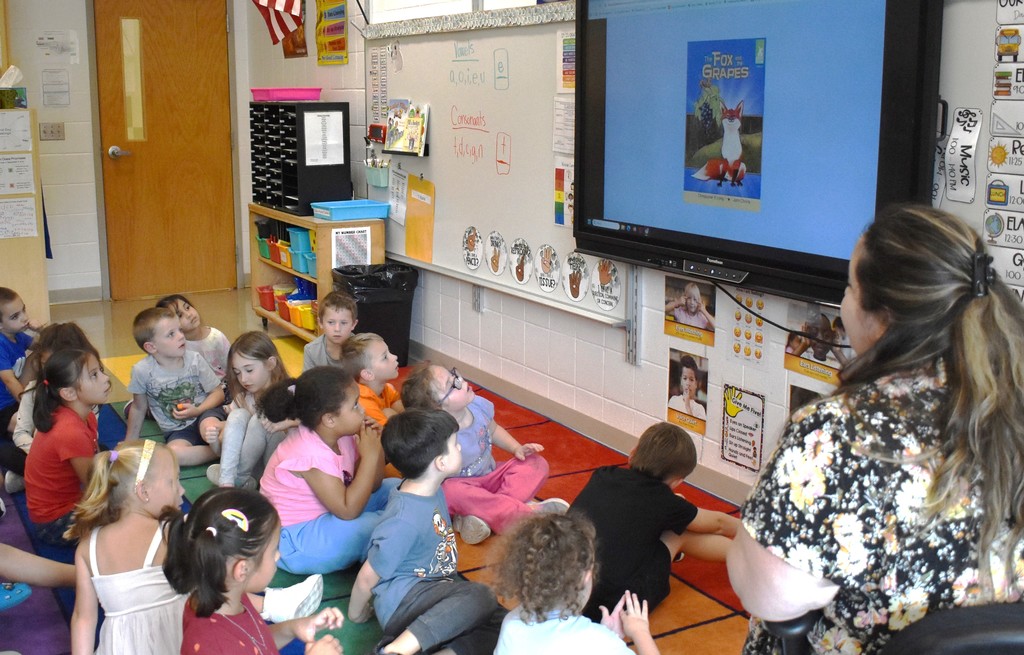
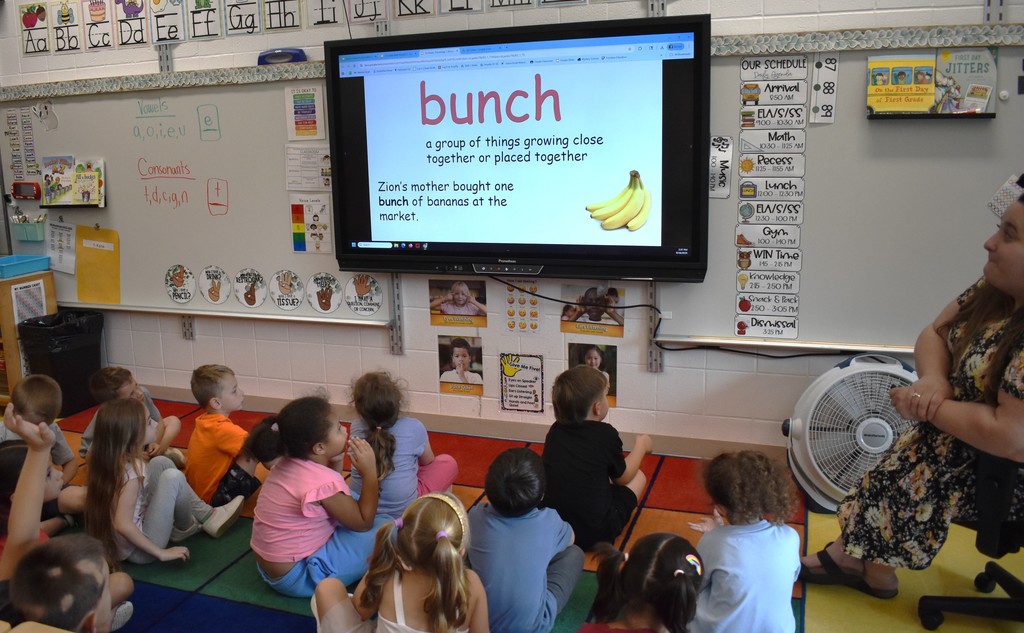
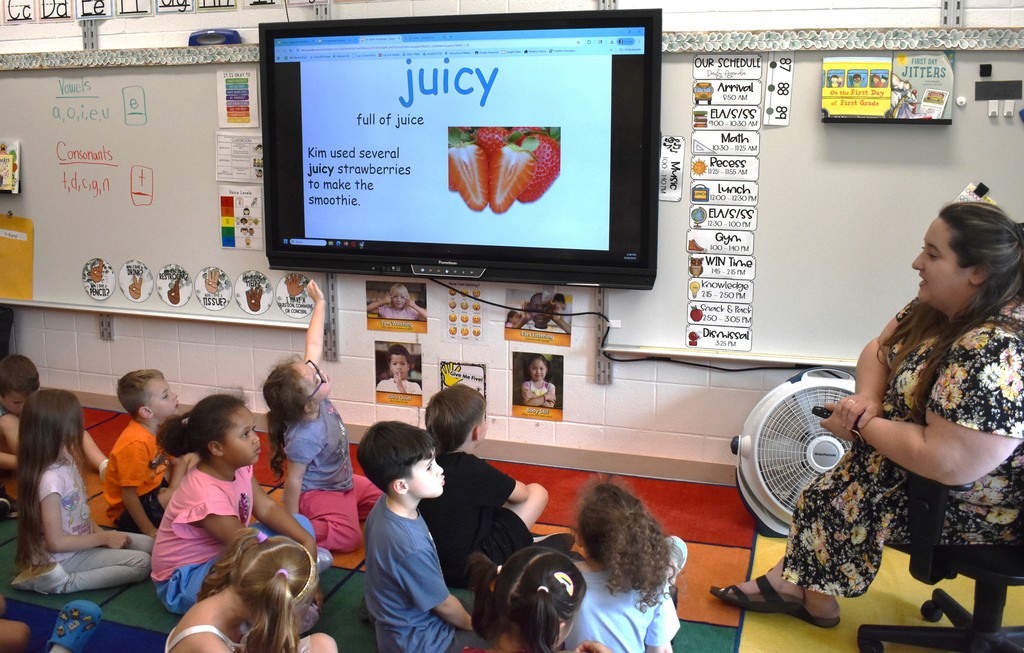
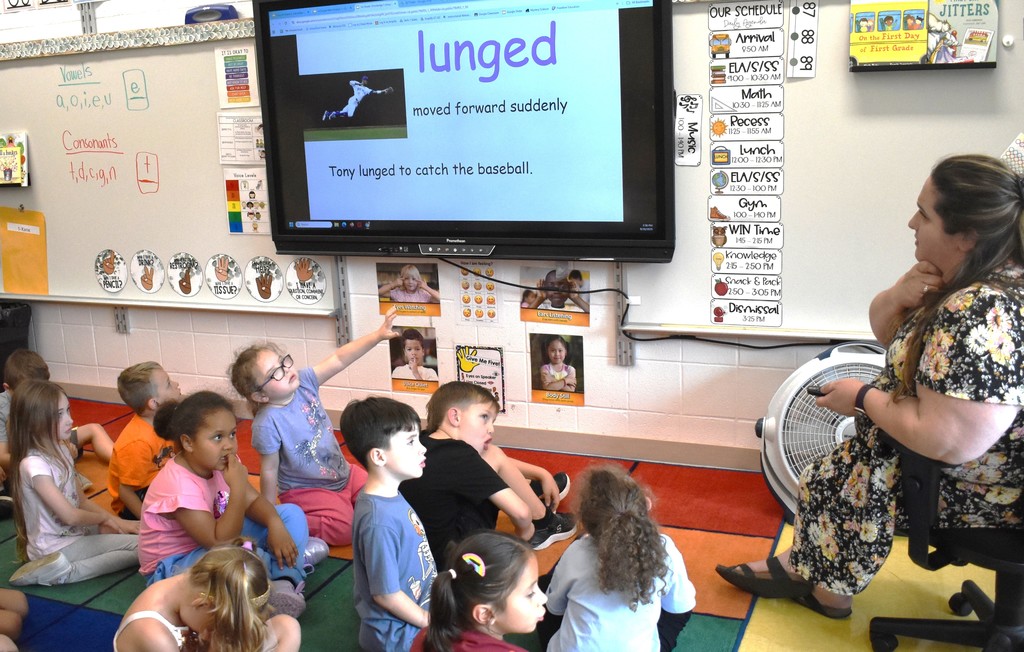
As the game continues, each round gets more challenging. The game’s focus includes teamwork, taking turns, communication, and leadership. In order to be successful teams must be able to work out a plan and stick with it. The groups who work well together are usually the teams that have the most success.
It’s a great game (which also involves running) to play in the opening weeks of school because it gets students to come out of their shell and feel good about accomplishing a common goal! And as an added bonus, because they have to build a hula-hut, there’s STEM components of physics and engineering!
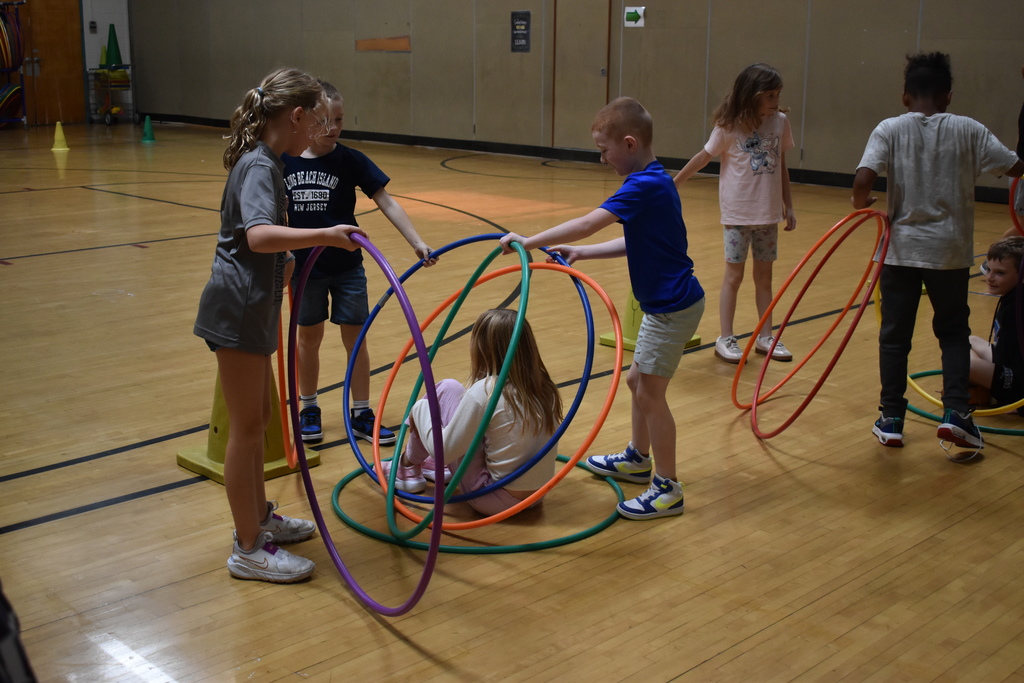
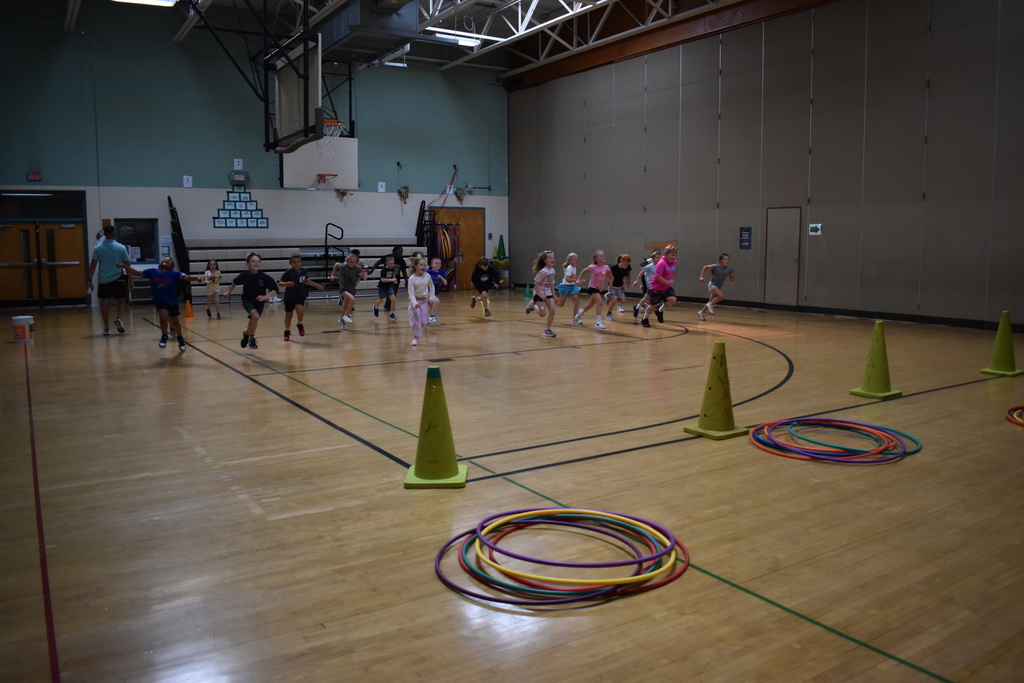
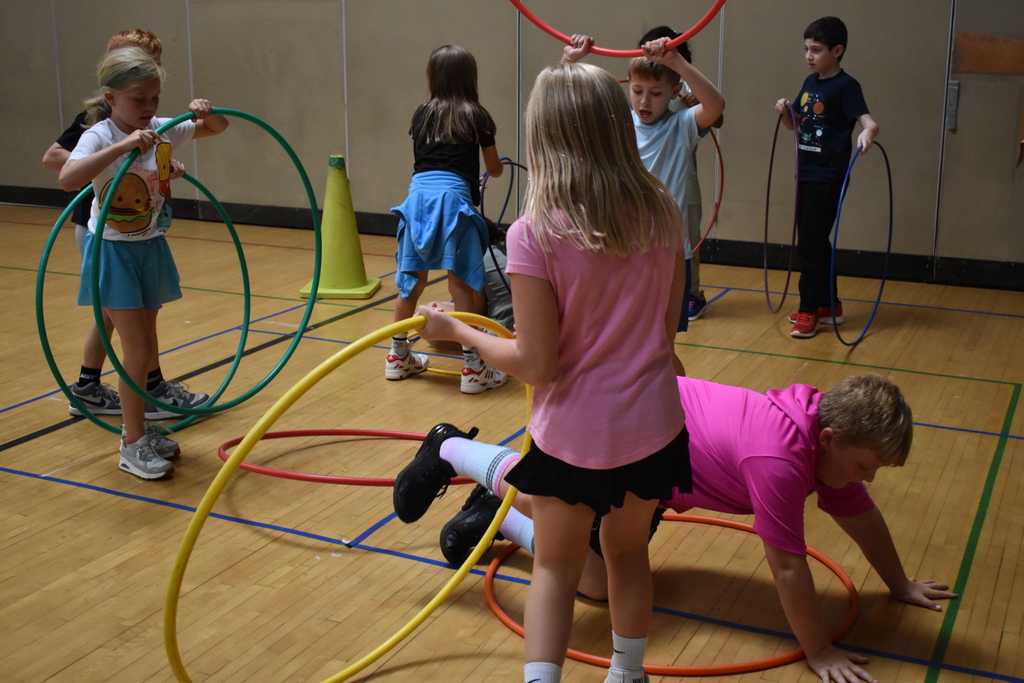
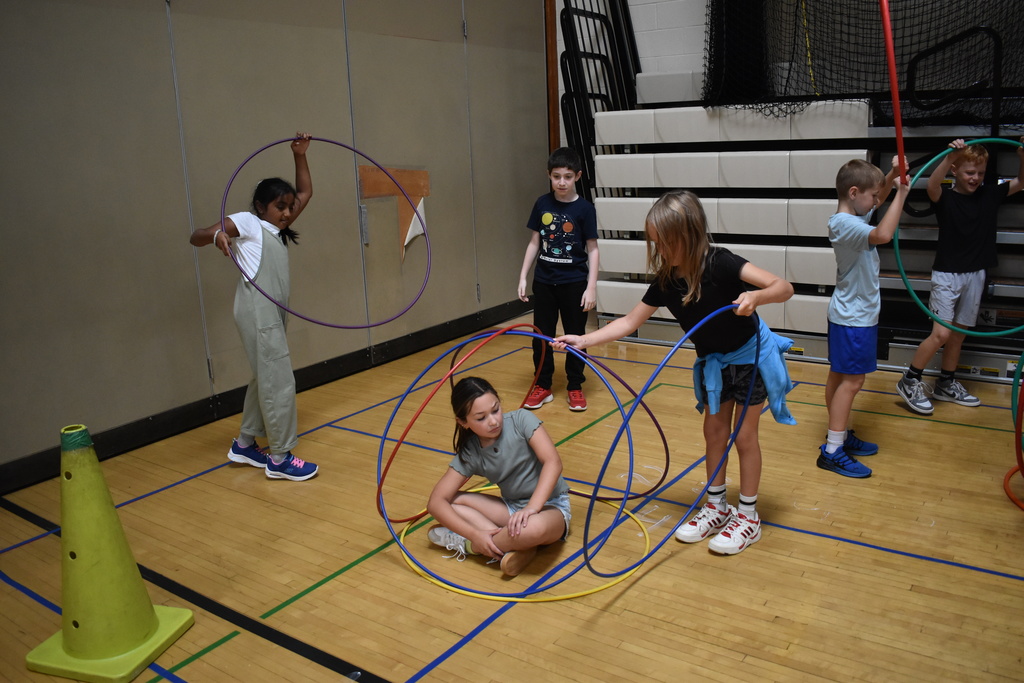
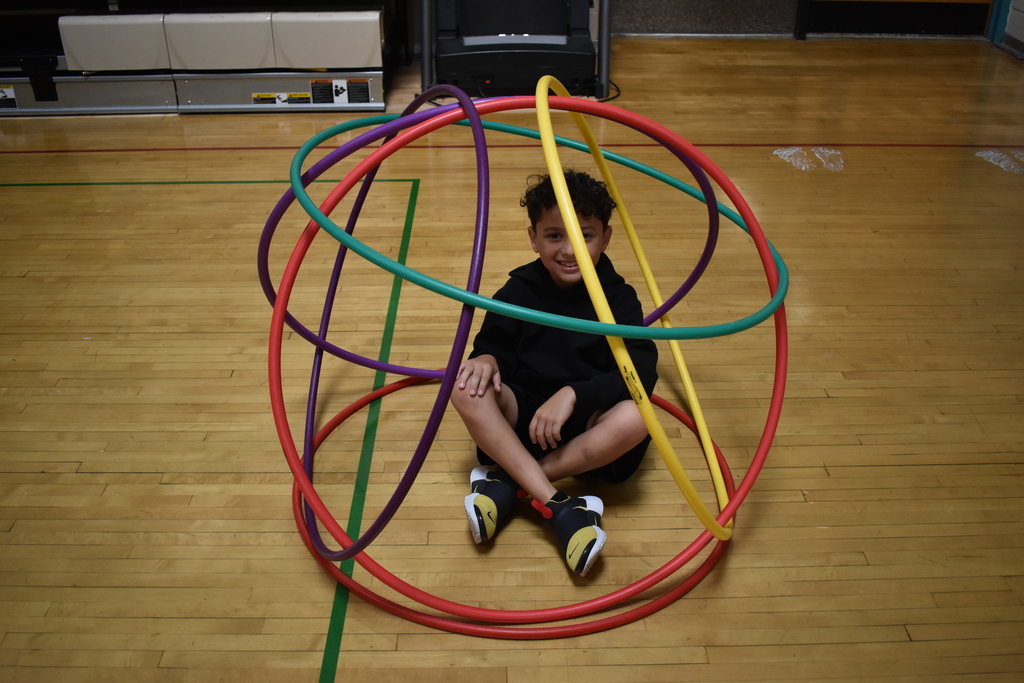
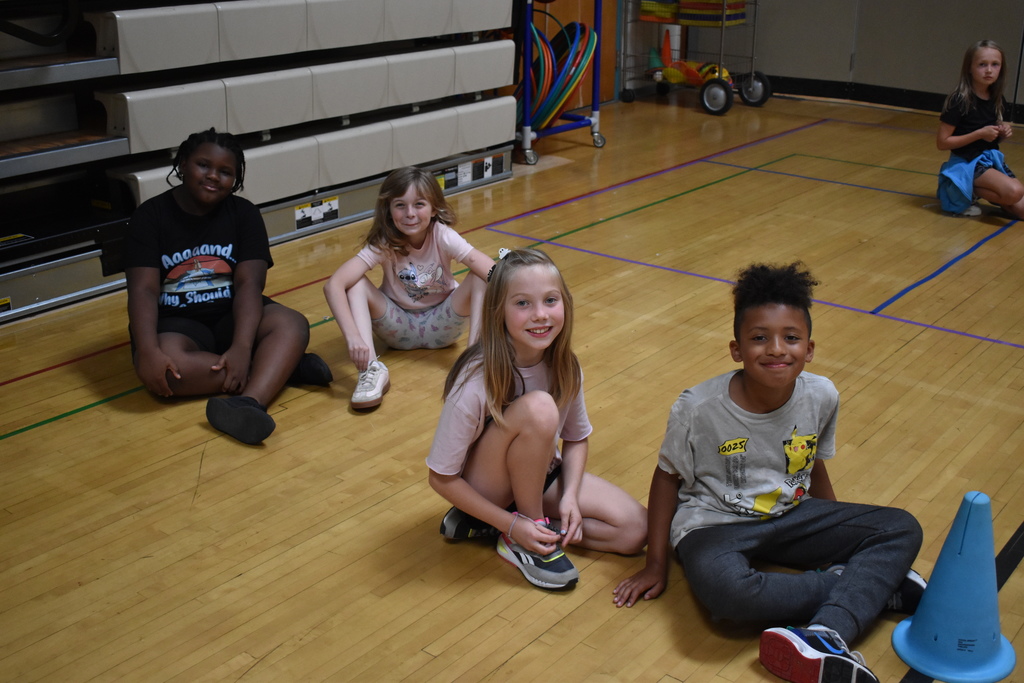
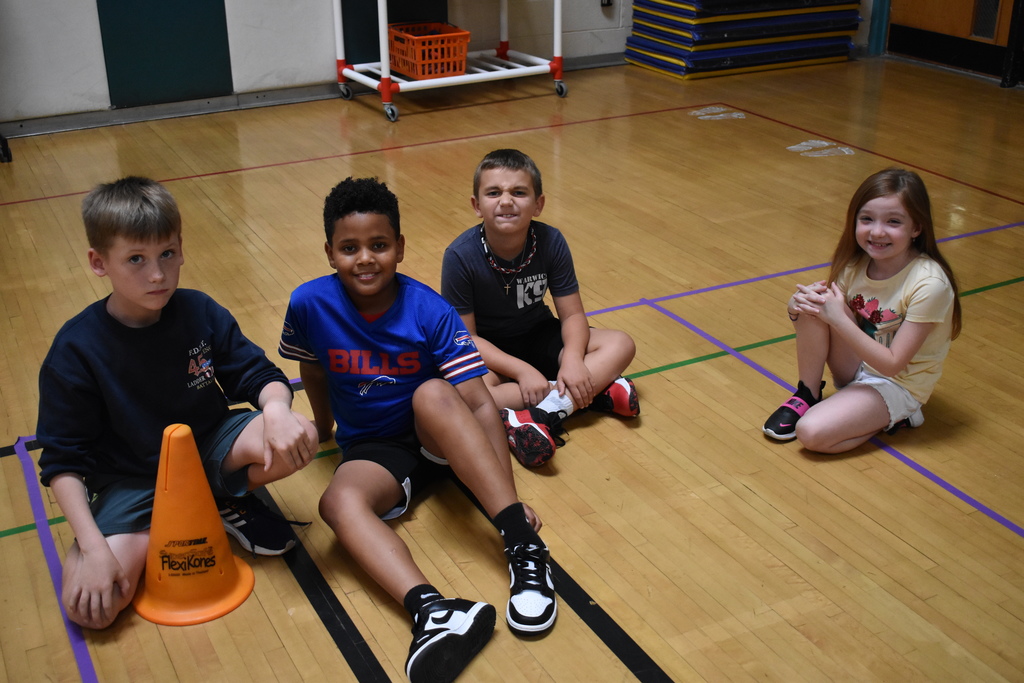
The lab tasked them with following a long list of instructions requiring them to place the measured liquid into the proper test tube. When the measurements leading to chemical reactions to create color changes are done correctly, the result was that students created rainbows via their test tubes of color!
What a colorful chemistry lab! Their complete rainbows in test tube racks provided immediate feedback on their accuracy while teaching the importance of following a multi-step procedure carefully and handling lab equipment properly
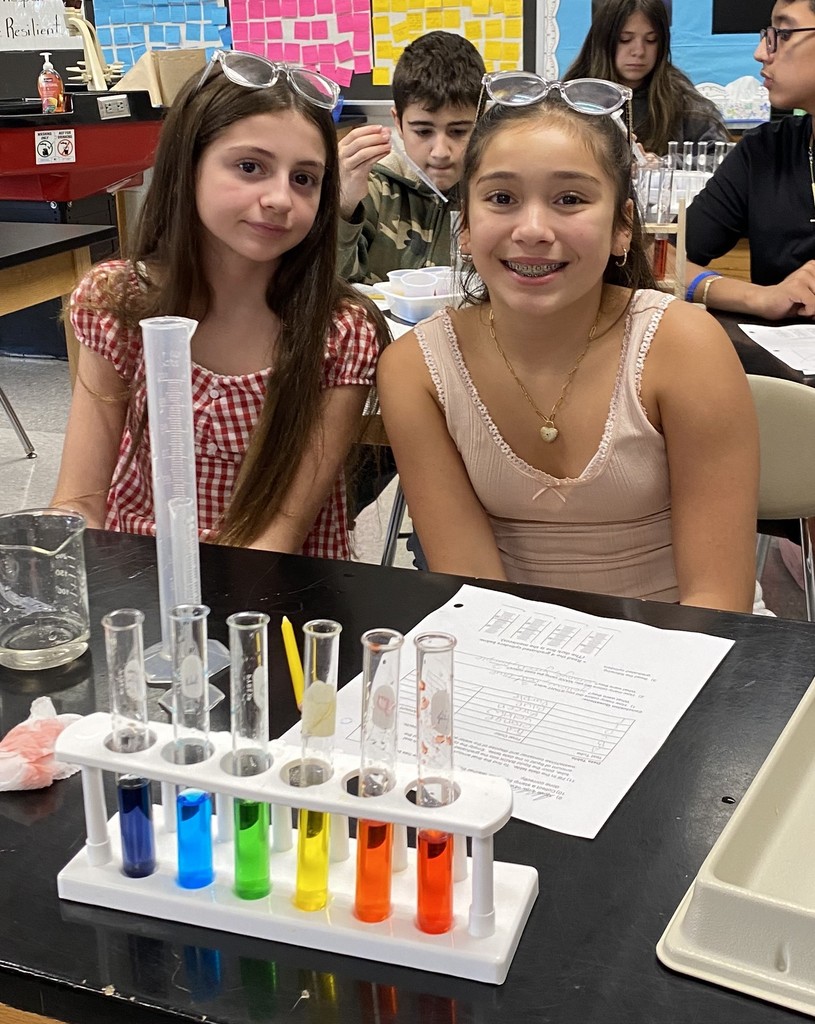
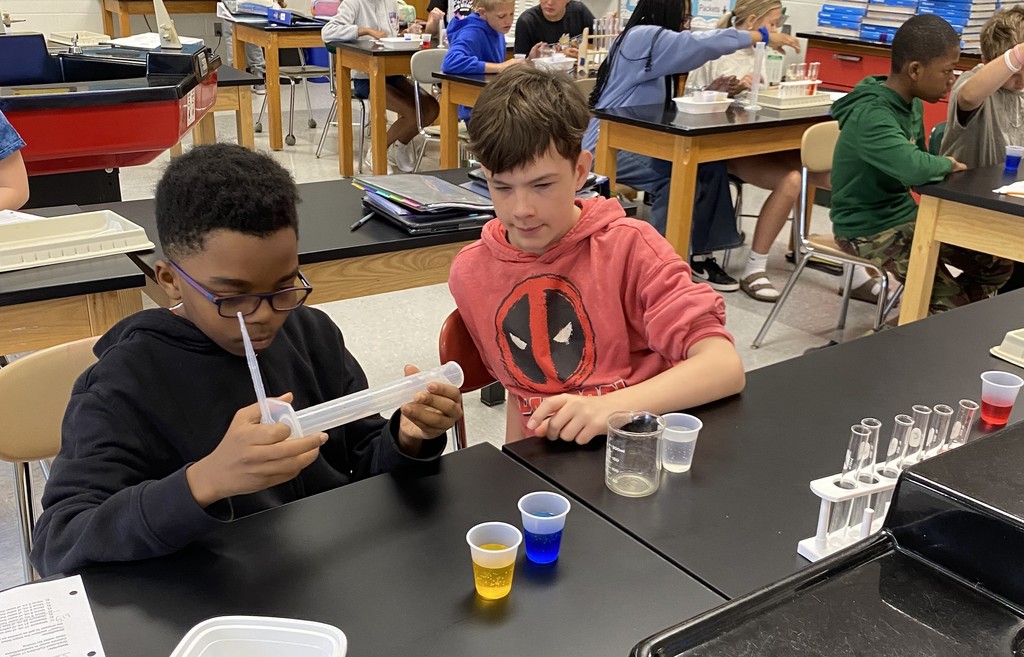
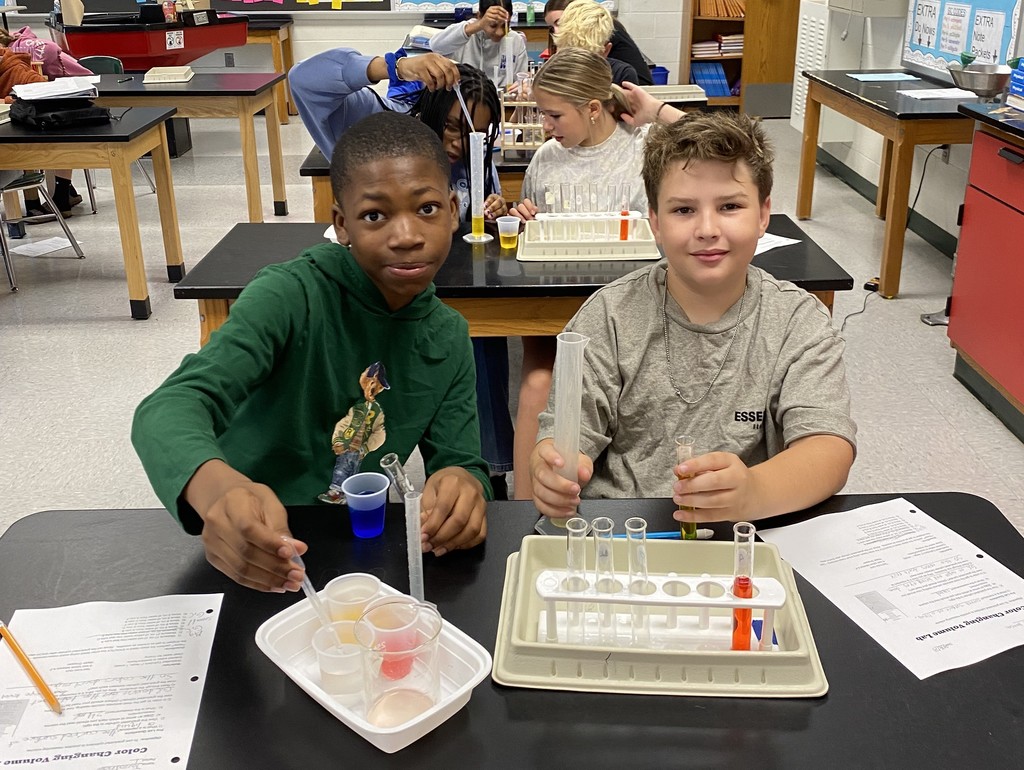
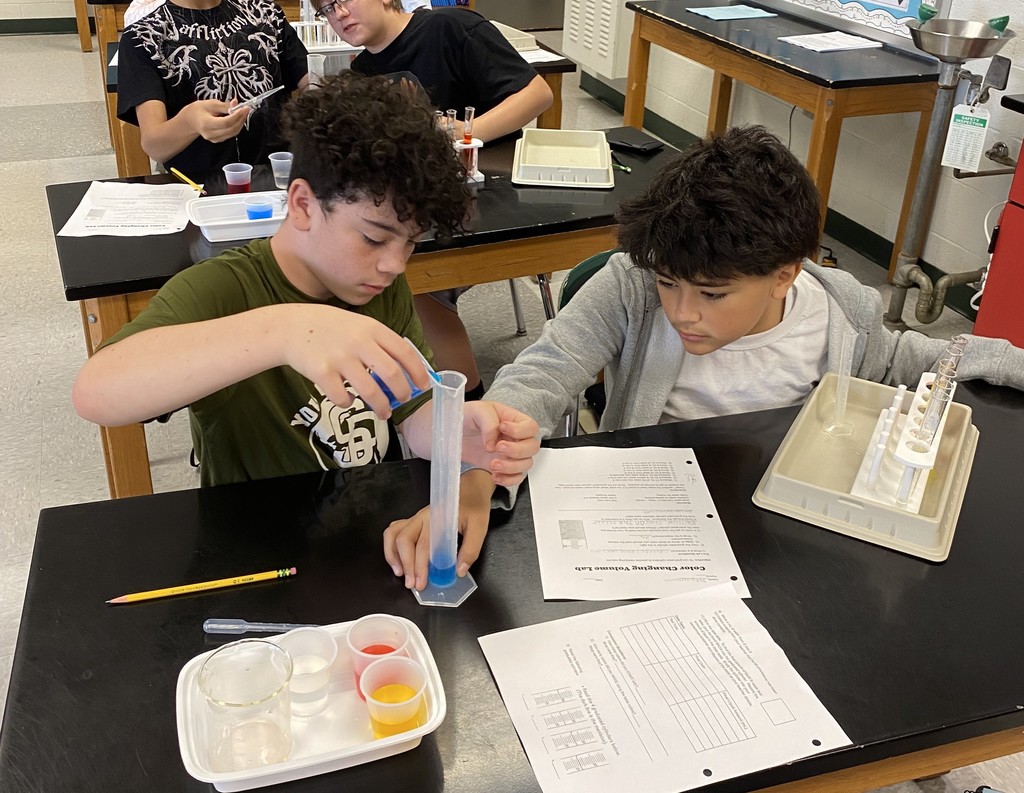
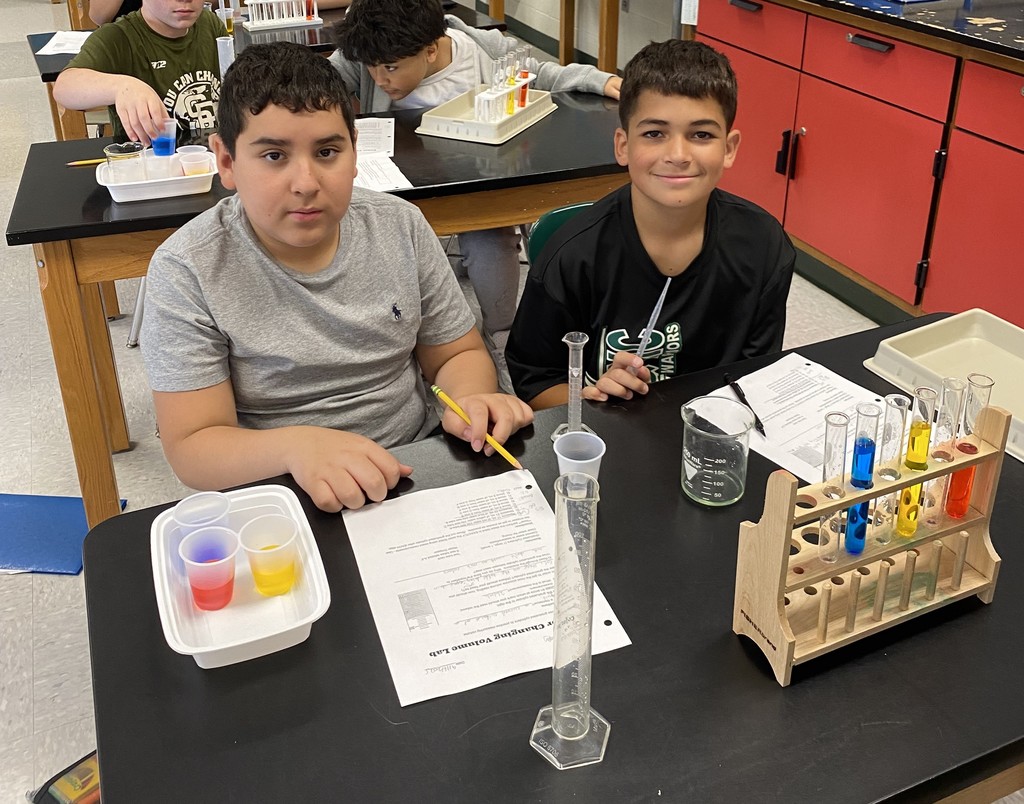
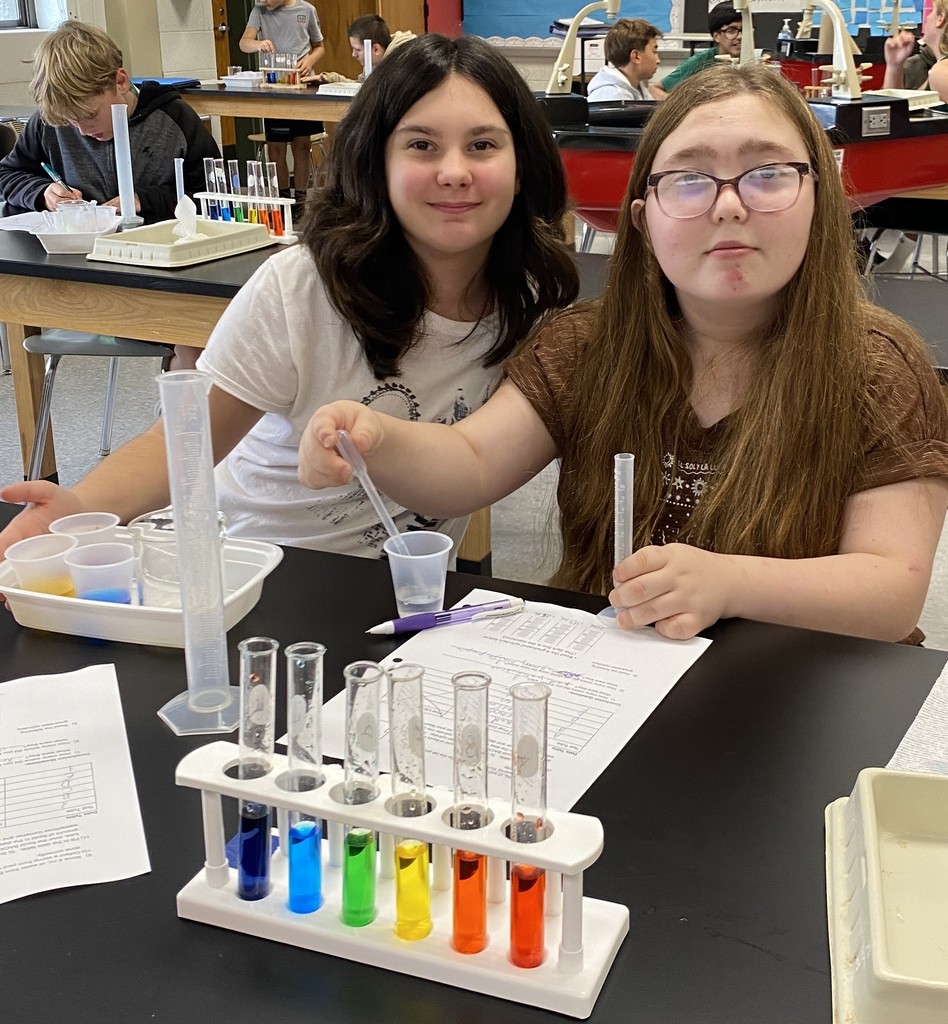
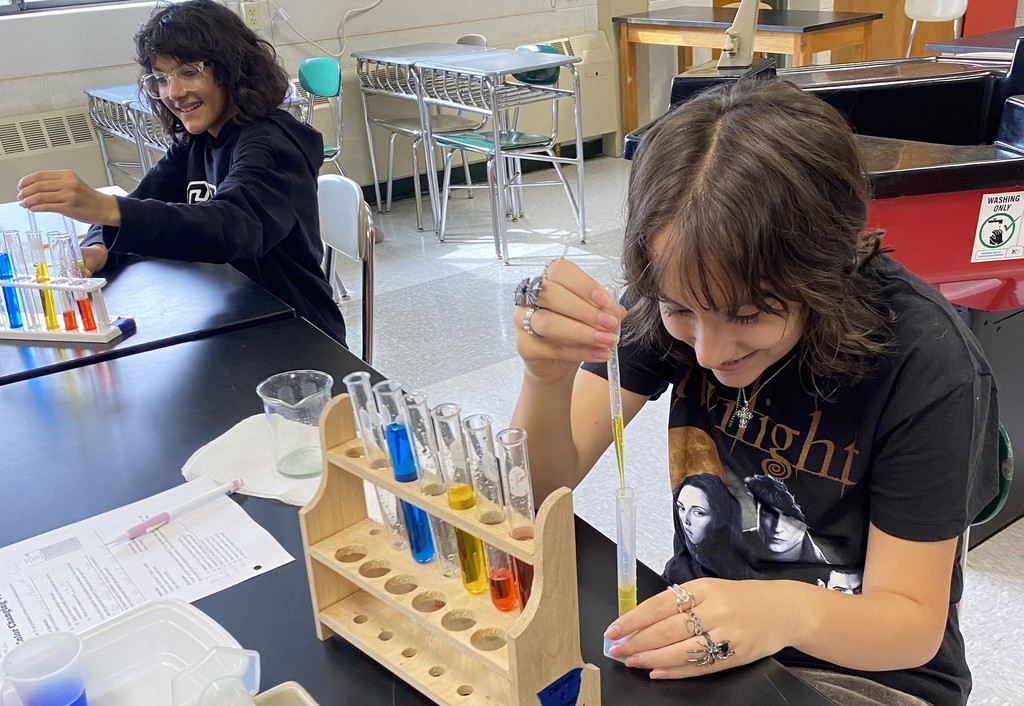
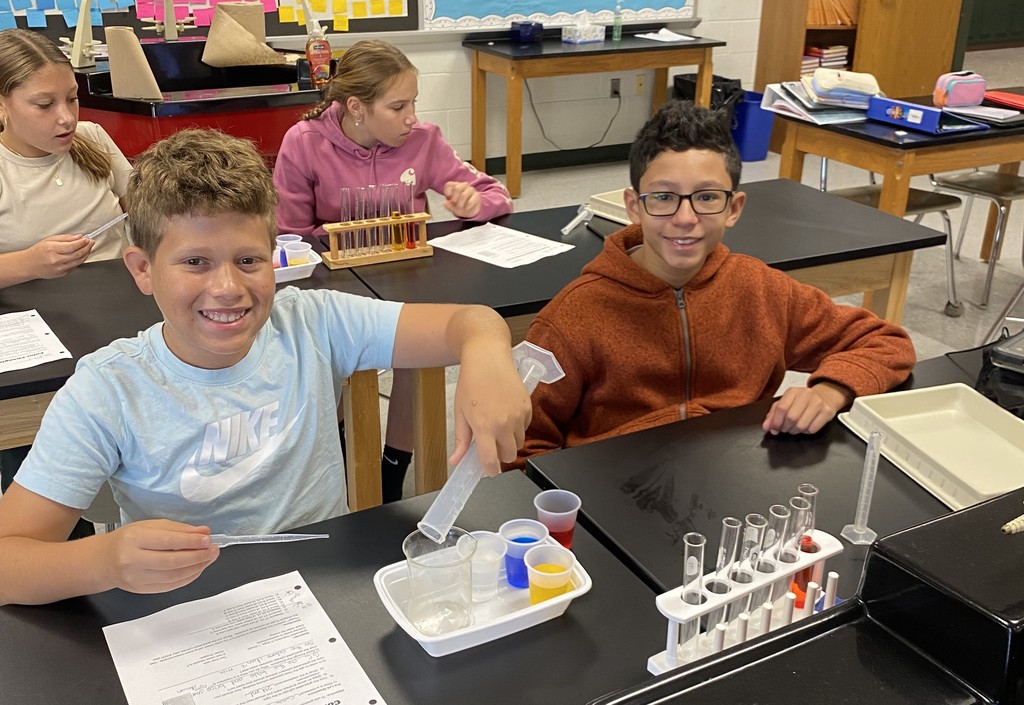
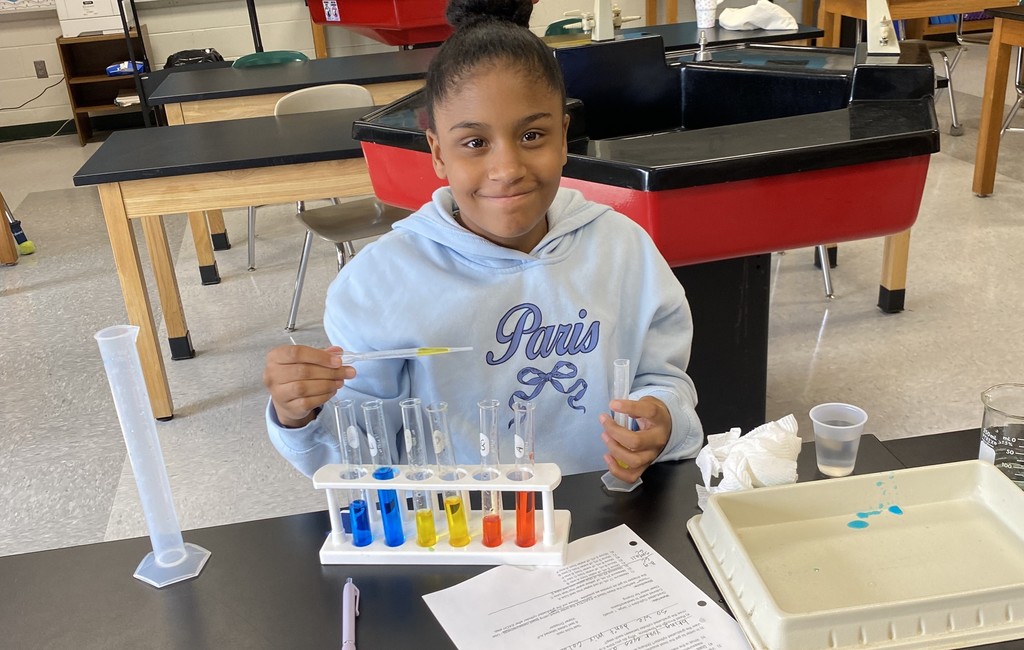
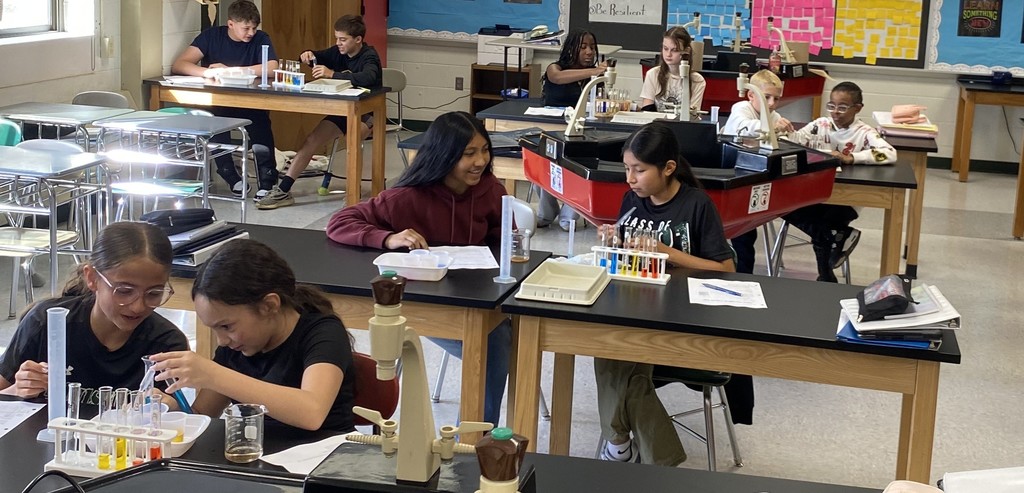
How better to learn about density than with KitKat candy bars?
Kristine Ostensen's middle school science class students used these chocolate bars in a recent density lab tasking them to measure and compare density!
Density is the ratio of an object's mass to its volume. Students used triple beam balances and graduated cylinders to help them find the mass and volume to be able to calculate density.
Many students were surprised to see that the KitKat bar floated when dropped into a graduated cylinder of water. This correlates to its density. KitKat bars have a density of 0.9g/mL which is less than water's density (1.0g/mL) allowing it to float.
What a fun, cumulative lab allowing students to showcase what they’ve learned/reviewed so far this year which ended with everyone enjoying a sweet treat!
•A triple beam balance is used to accurately measure the mass of an object by balancing it against known weights on three beams. It's a common tool in science classrooms and laboratories to teach about mass, and to measure chemicals, reagents, and other specimens in disciplines like chemistry and biology.
•KitKat bars are ideal for density labs because their unique wafer and chocolate combination allows for accurate measurement of mass and volume, making them suitable for calculating density. Unlike other candy bars, KitKats' consistent structure makes it easier for students to measure these properties and apply the density formula (mass divided by volume) to understand how a candy bar's internal structure affects its density.
•KitKats originated as a four-finger bar called "Chocolate Crisp" in the United Kingdom in 1935, named "KitKat" in 1937, and became a wartime staple in World War II.
•The name "KitKat" does not officially stand for anything. It originated from the name of an 18th-century London literary and political club called the Kit-Cat Club, which was named after an innkeeper named Christopher Catling, or "Kit Cat."
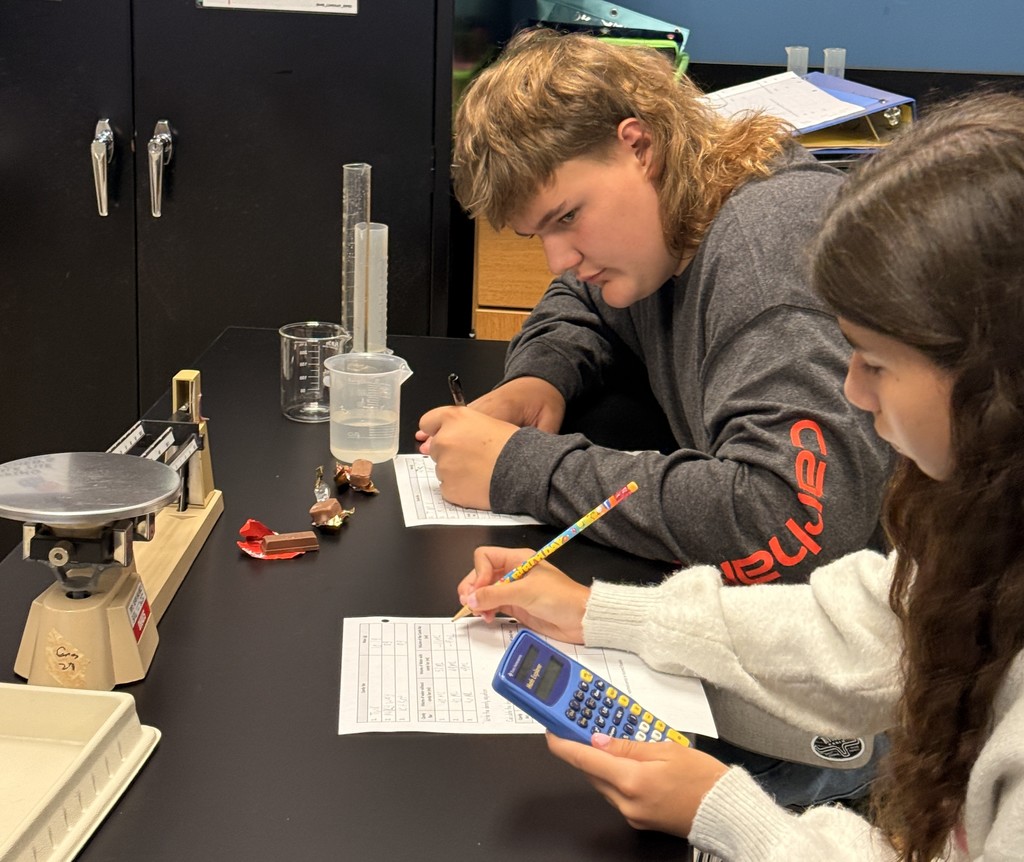
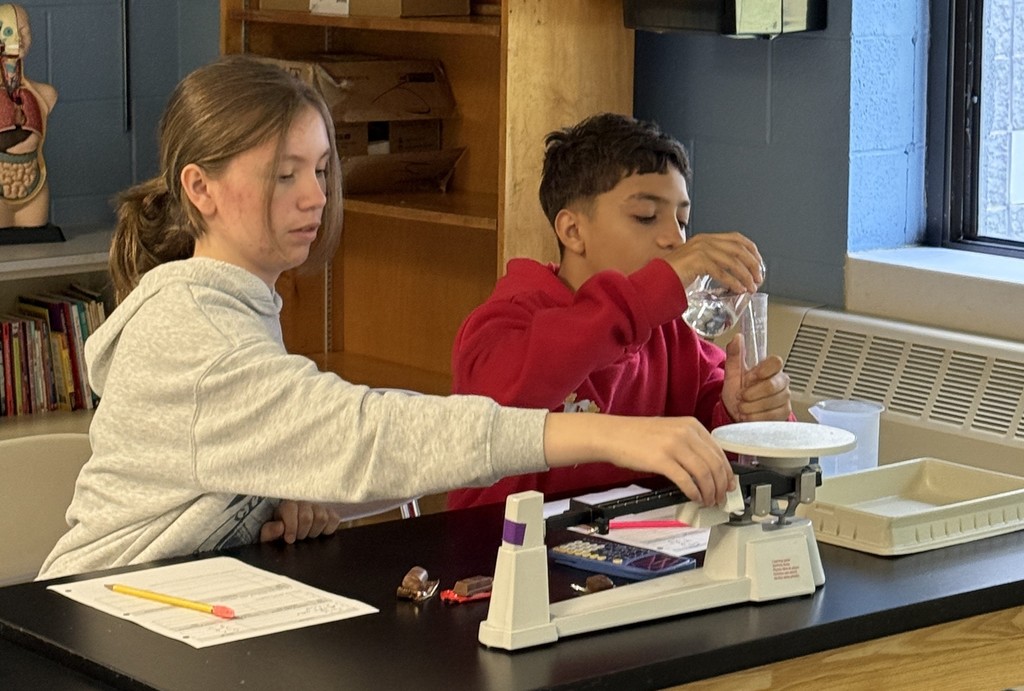
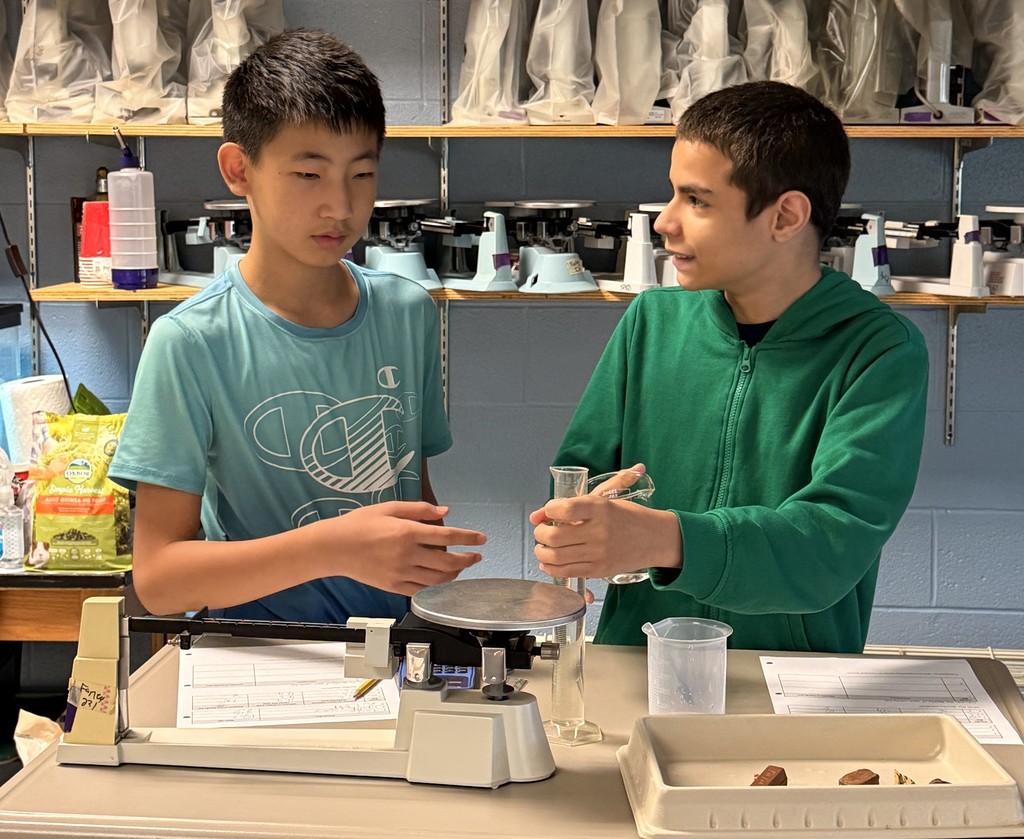
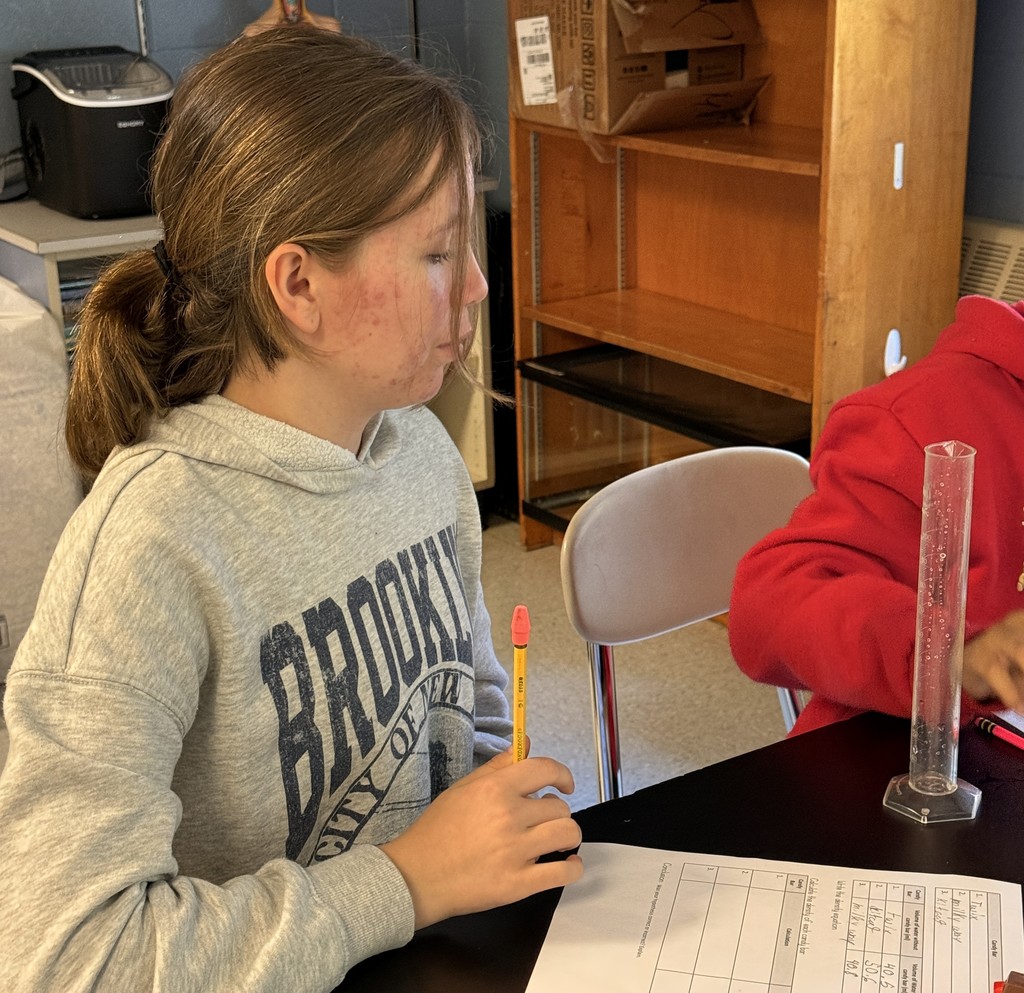
Students talked about working together, how it feels when one’s idea is used (or not); if those ideas will actually work; how to be a good team player and offer constructive comments to assist in the project’s completion, and more!
And because they’re in their physical education class, students had to “run” their “skyscraper parts” to a matching hula hoop, using all their materials to build their skyscraper tower as tall as the group’s tallest person. The last part of the task was placing the toy gorilla as the last item on the top of their towers. Then…they have to “run” those parts to the opposite side of the gym and repeat!
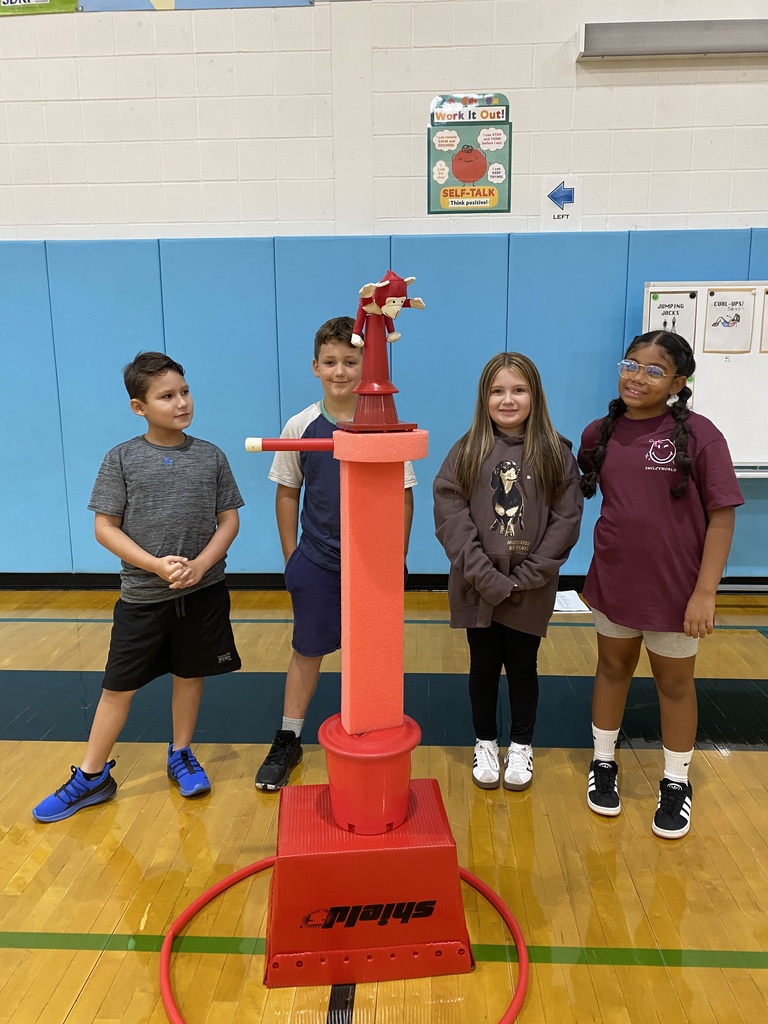
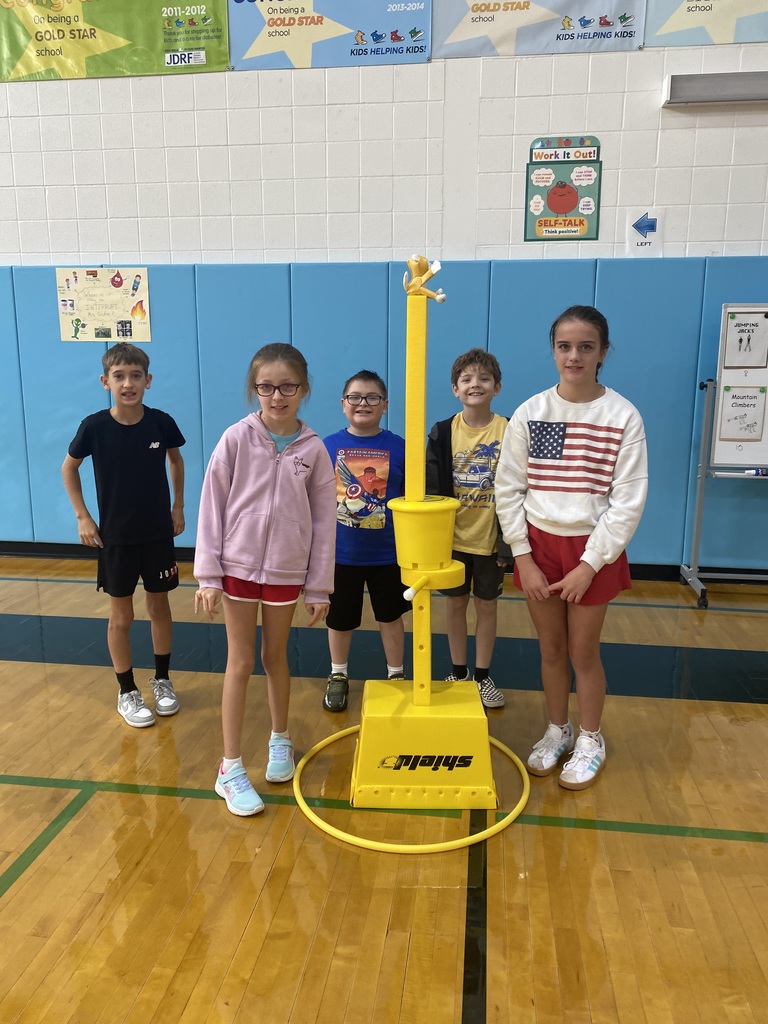
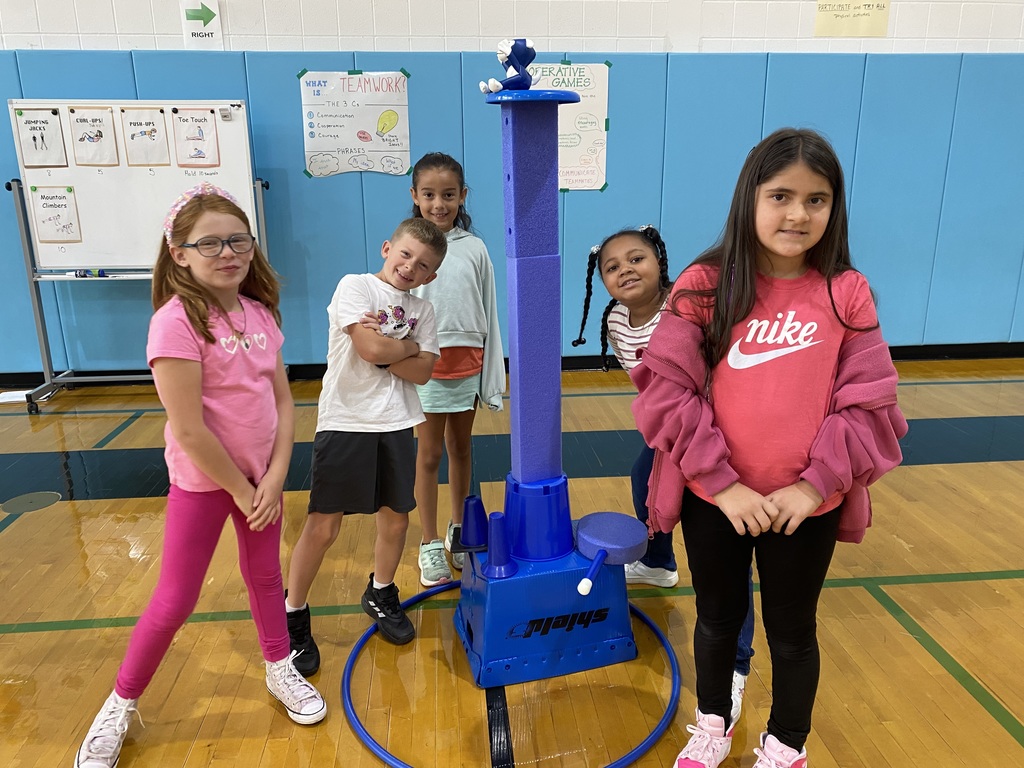
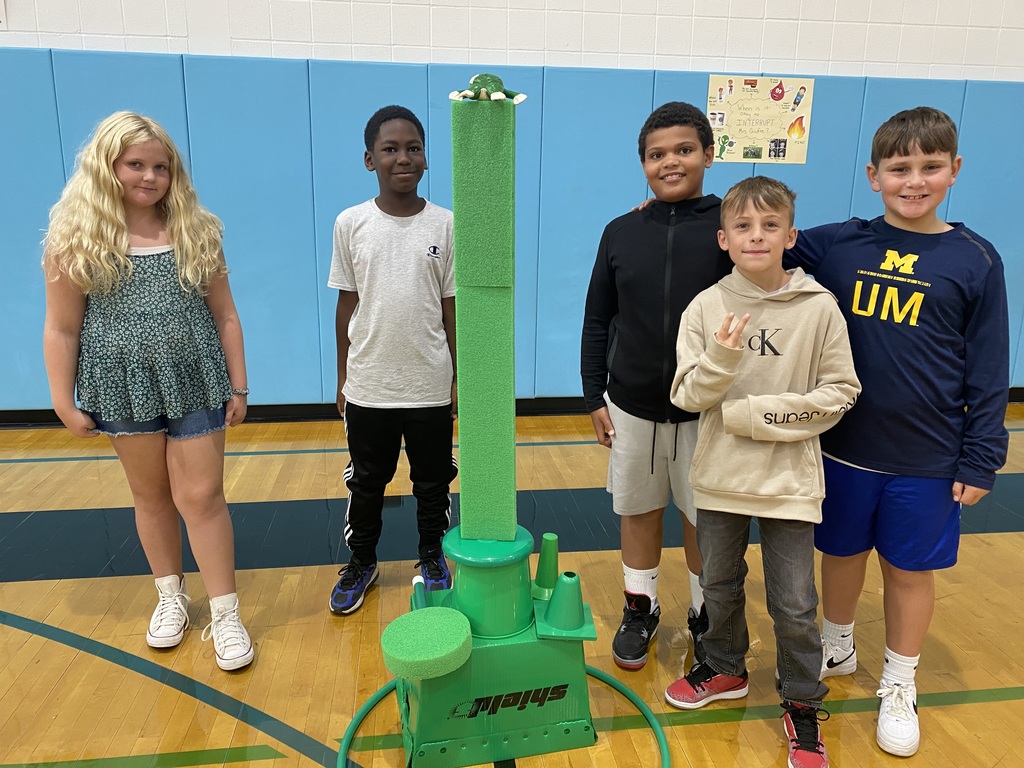
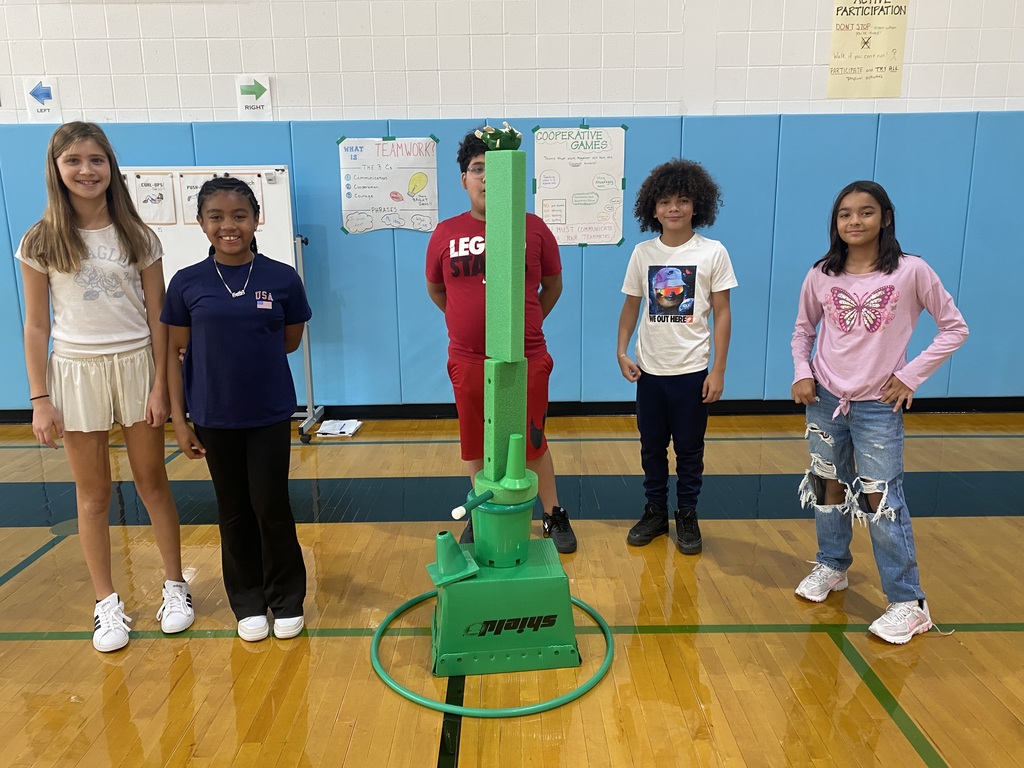
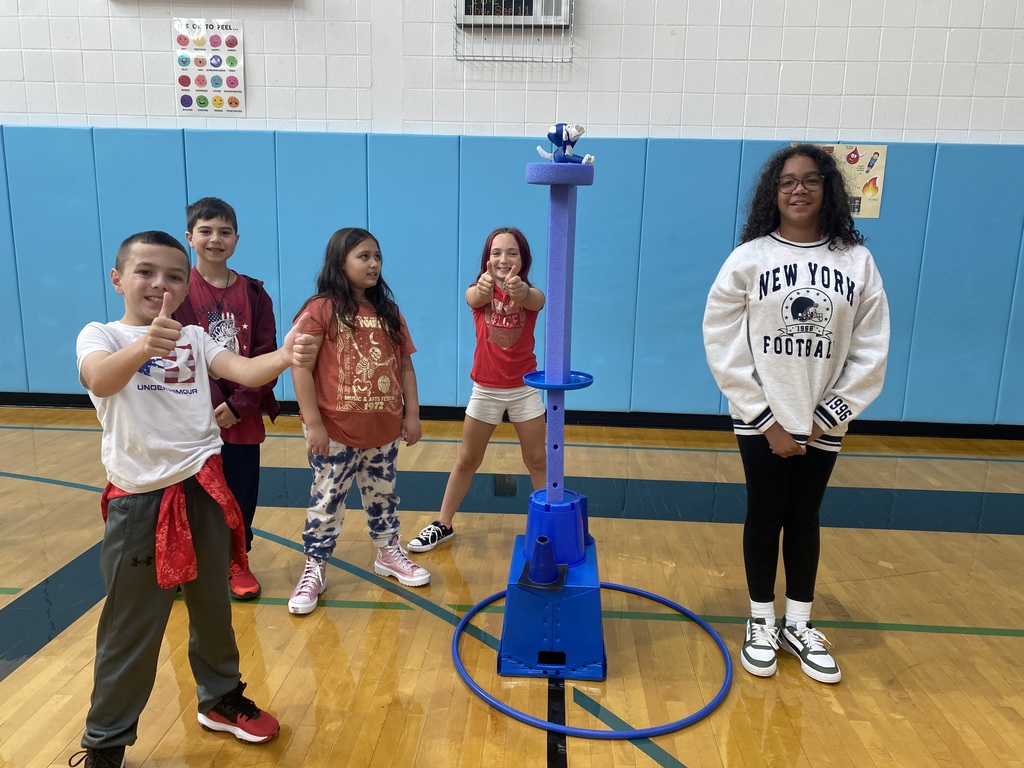
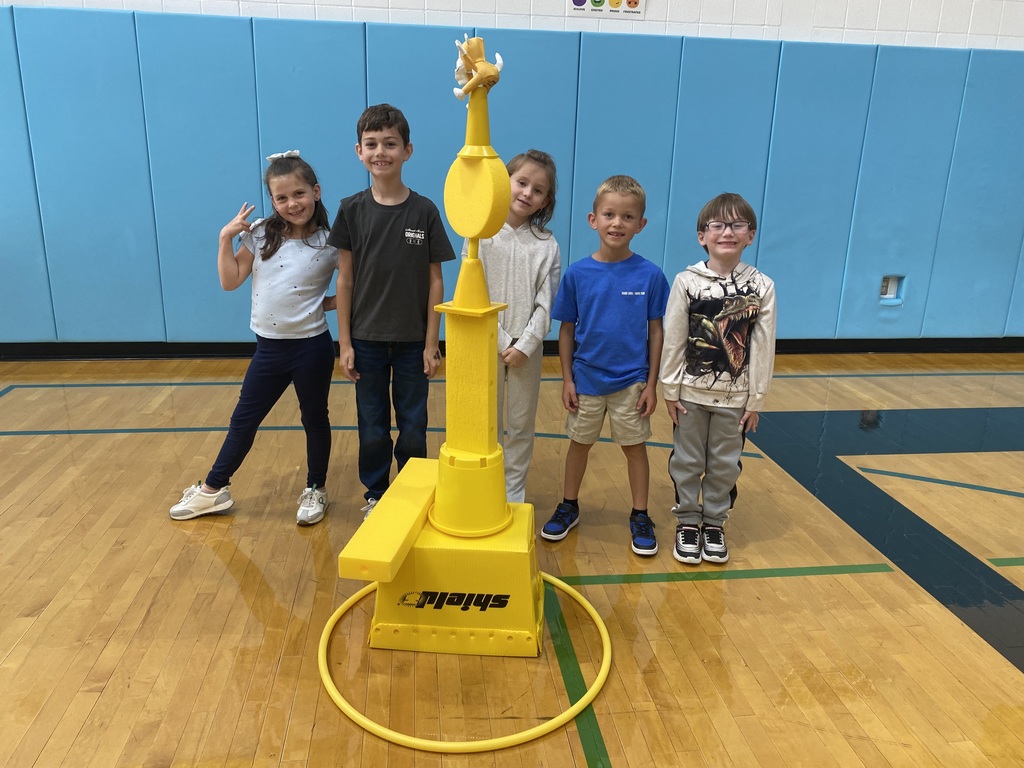
Their topics differ but are ones which are helpful for students. They frequently use resources focusing on personal and professional growth, encouraging students to approach each day as a new one, while learning from past decisions and bettering ourselves.
This recent conversation focused on acknowledging what may make someone uncomfortable or anxious, reminding students can come to them and let them know what may be bothering them so they can help them through it. Students were reminded learning how to handle things well minimizes frustrations and helps to keep them mentally healthy. Conversations like this, they stress to students, help them to become better problem-solvers who are more empathetic and reflective.
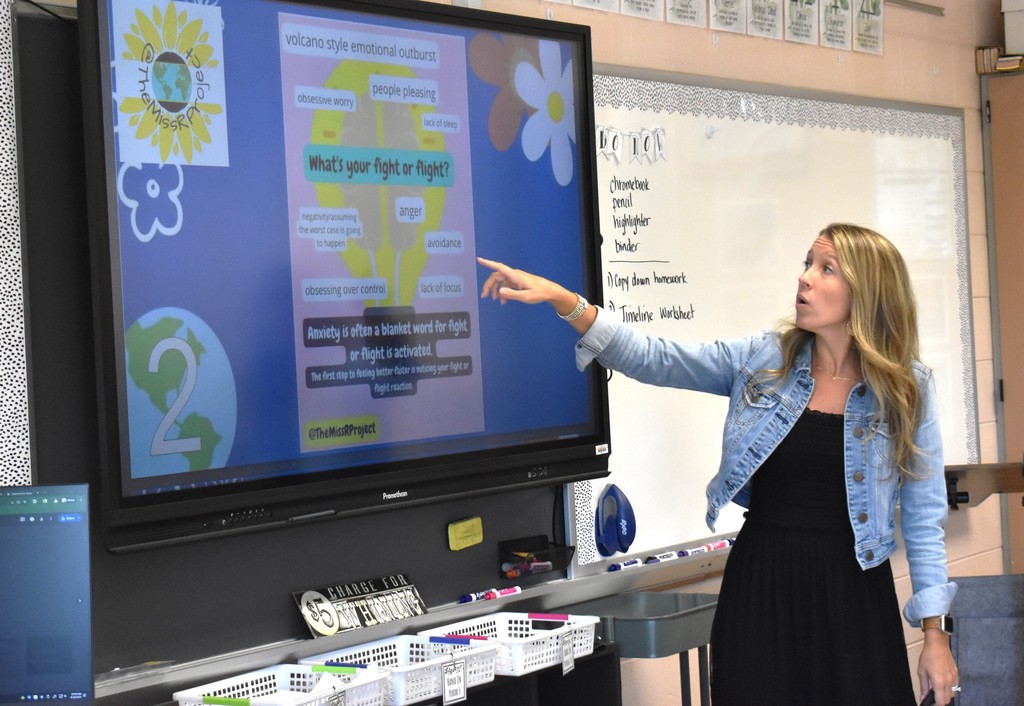
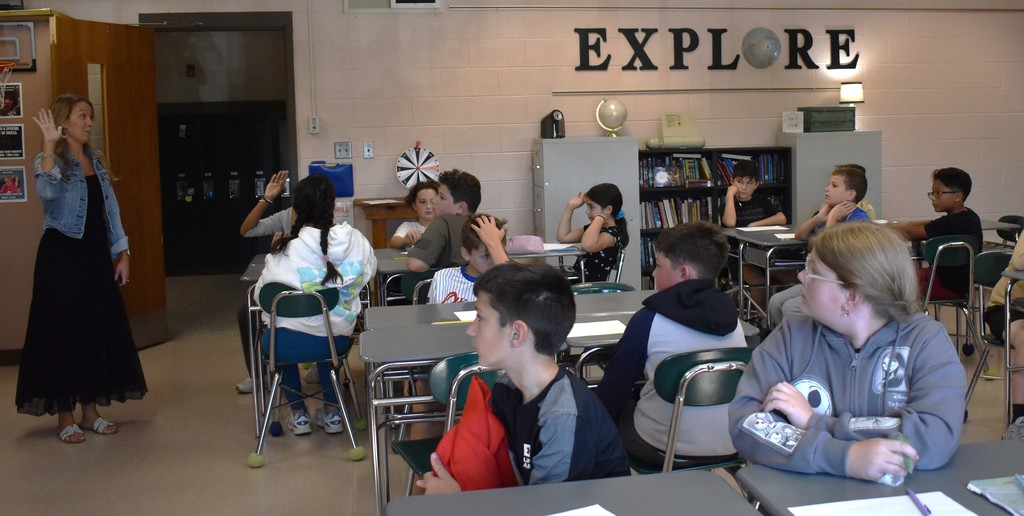
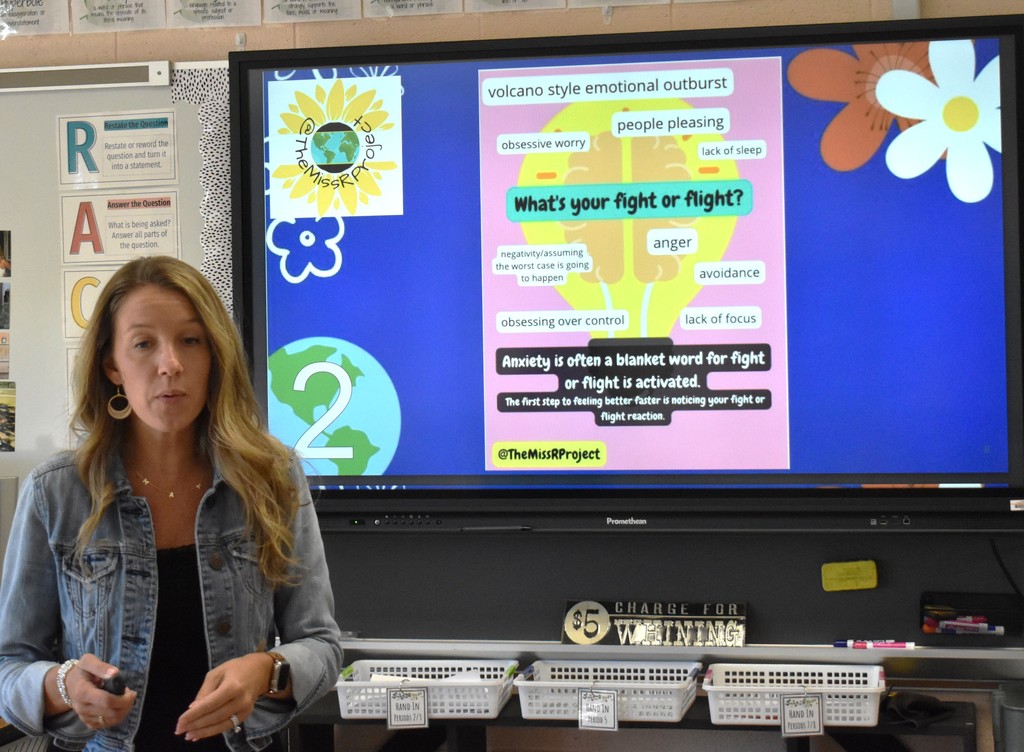
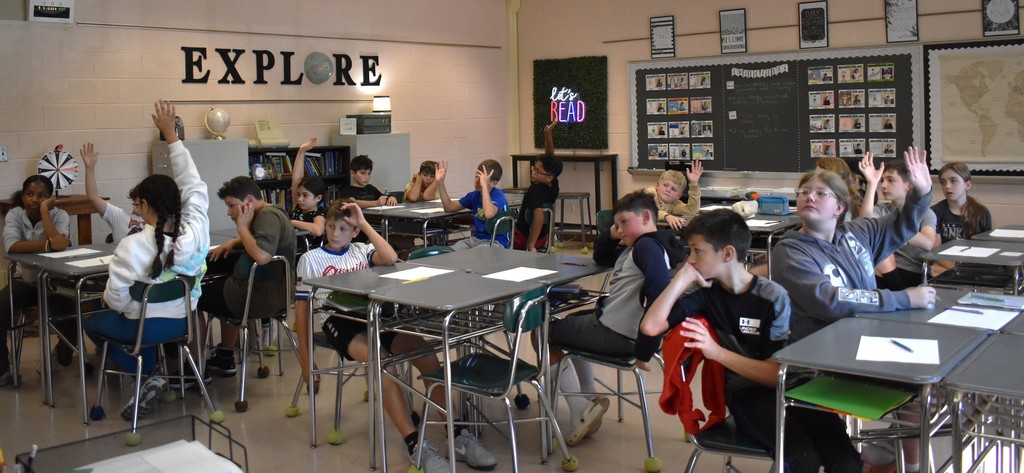
What a great night!! Not only does the Varsity football team remain undefeated, the high school's incredible Homecoming gathering this past Friday evening included a banner parade, the crowning of Kathryn Jones and Rogan Lynch as Homecoming Queen and King, fabulous musical entertainment by the mighty Minisink Valley Marching Band and the unbelievable support of the crowd, led by our cheer squad! WERE YOU THERE? Take a look at a sampling of the evening! See more photos on the district's Facebook page: https://www.facebook.com/MinisinkValleyCSD
•High school homecoming originated from college traditions, with many universities claiming to have hosted the first event, though the University of Missouri is credited with holding the first official homecoming in 1911 to boost school spirit and unite alumni with current students and celebrate the university’s existence. The concept quickly spread to other colleges and then to high schools across the nation, evolving to include events such as parades, pep rallies, bonfires, and dances centered around a football game.
•The high school homecoming king and queen tradition began in the 1930s as an adaptation of college homecoming celebrations. The focus eventually shifted to selecting a queen and king based on personality and character in later decades. The first queens were crowned much earlier in college history, but the king and queen as a pair was a later development in the high school setting, reflecting the tradition's evolution from a general school spirit event to a more formal, celebrated court.
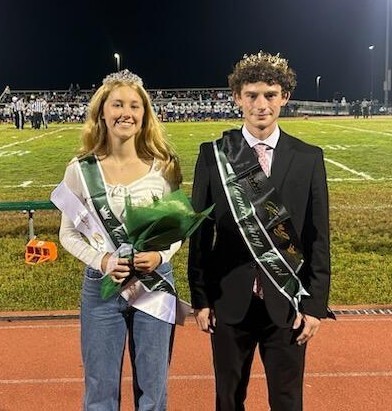
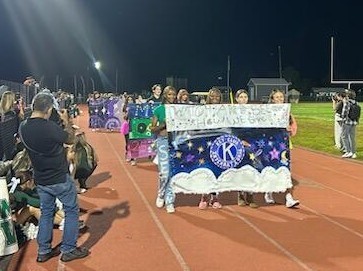
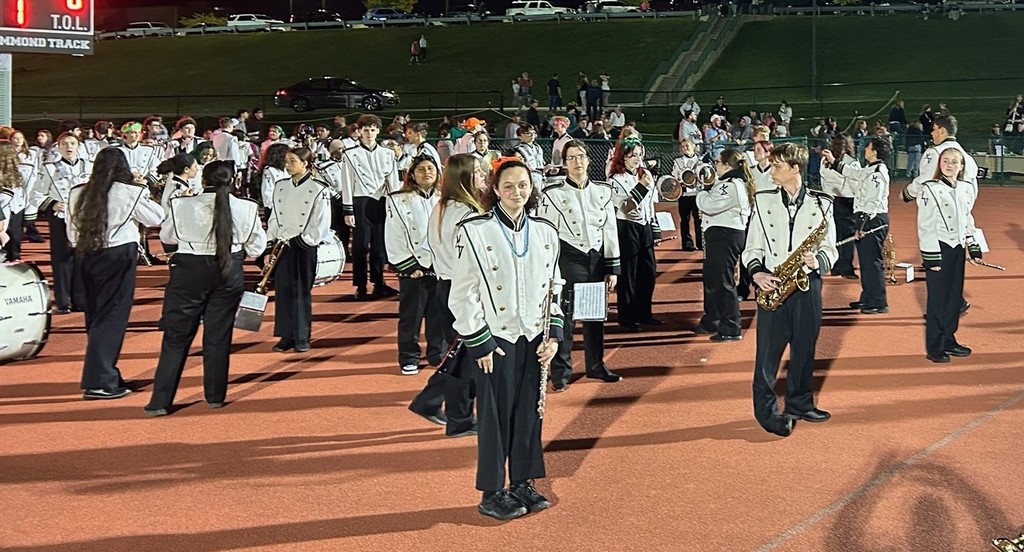
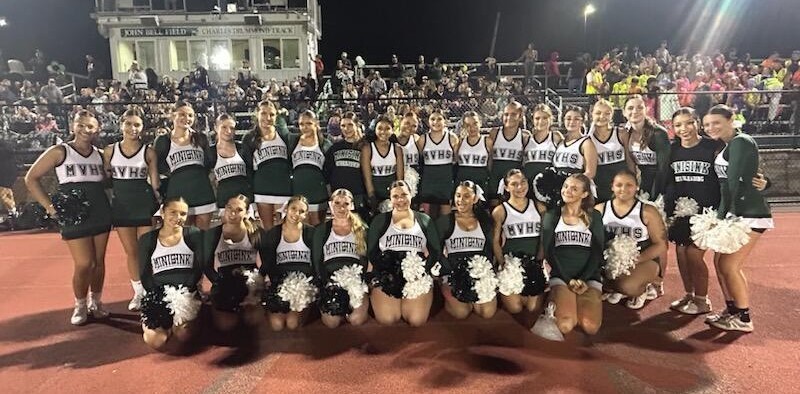
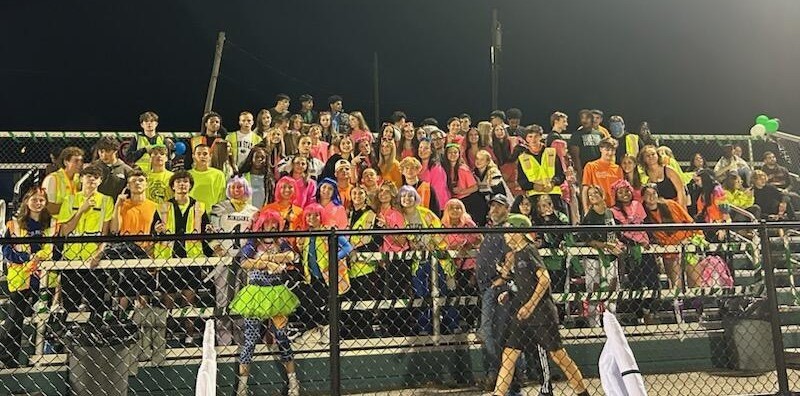
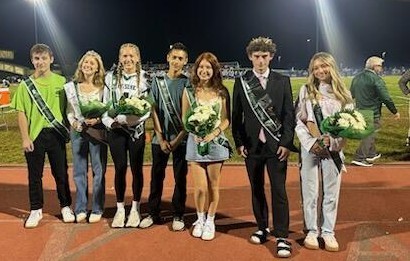
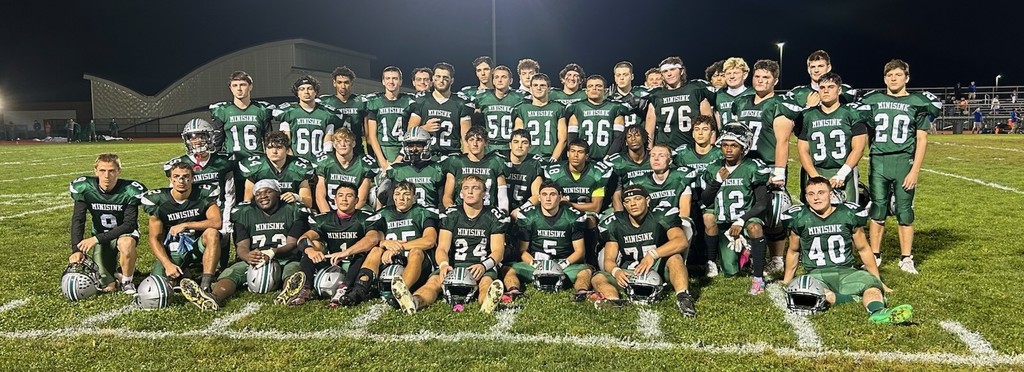
The story explores themes of self-esteem, the hurt caused by teasing and bullying, and the importance of celebrating individuality. Chrysanthemum’s pride is eventually restored when her kind music teacher, Mrs. Delphinium Twinkle, announces her own new baby will be named Chrysanthemum! It was a great opportunity for students to talk about the uniqueness of their names!
As a follow-up project, students used shredded colored paper to spell out their names in a bright and cheery way. And, it was another opportunity for them to practice important fine motor skills!
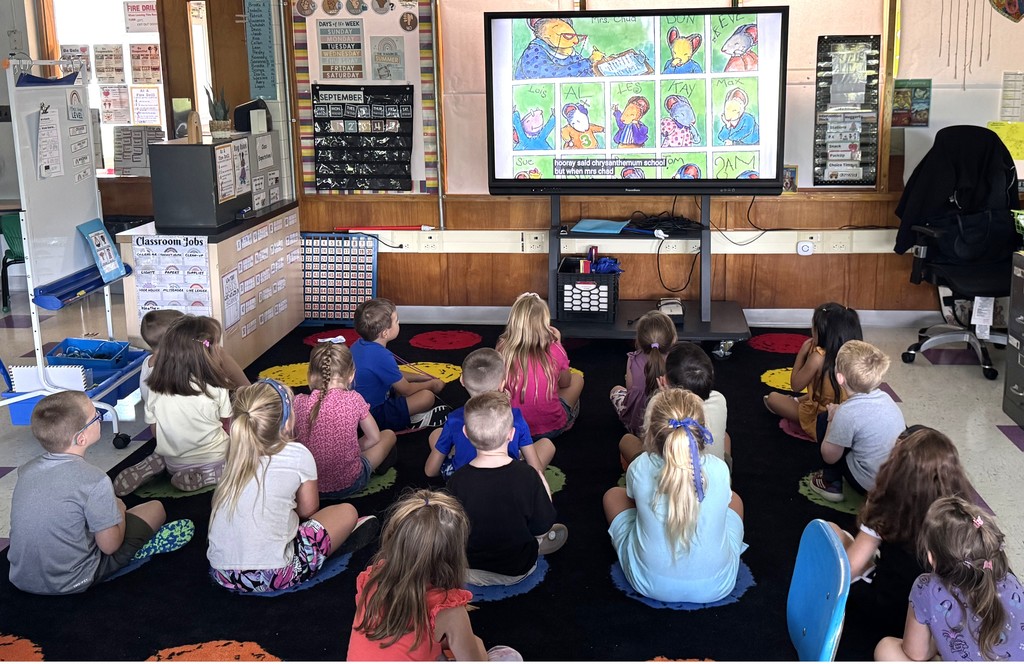
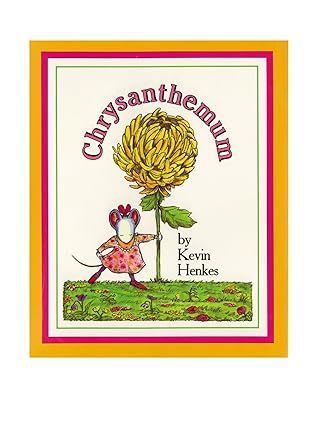
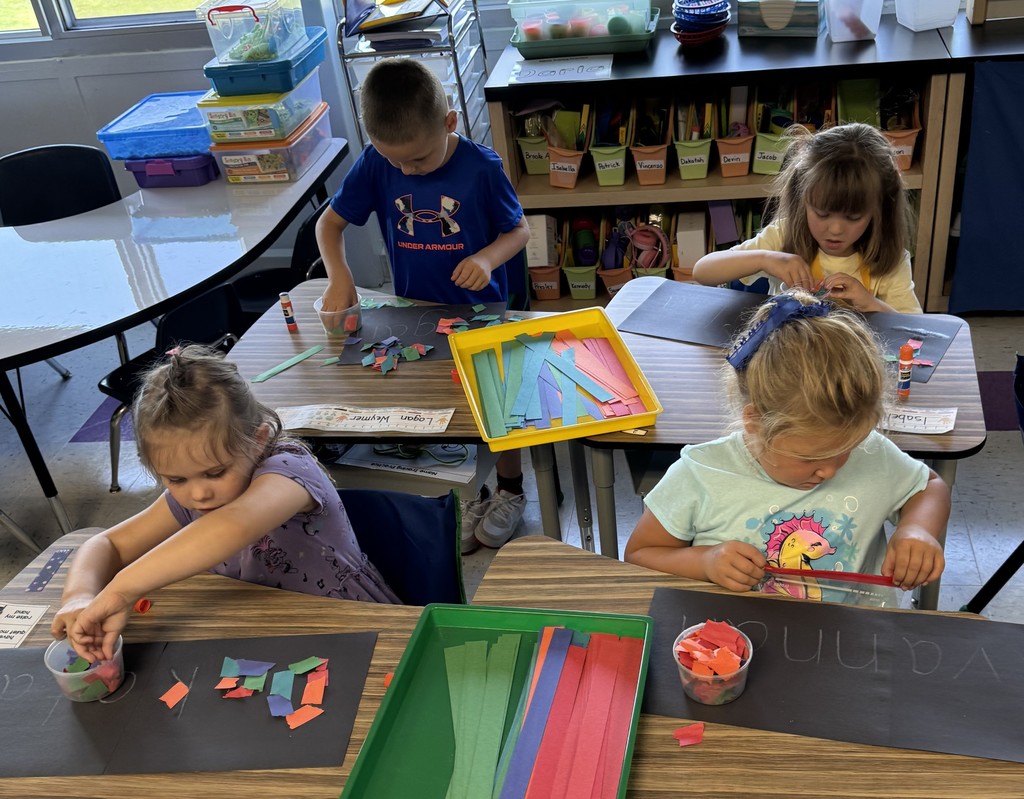
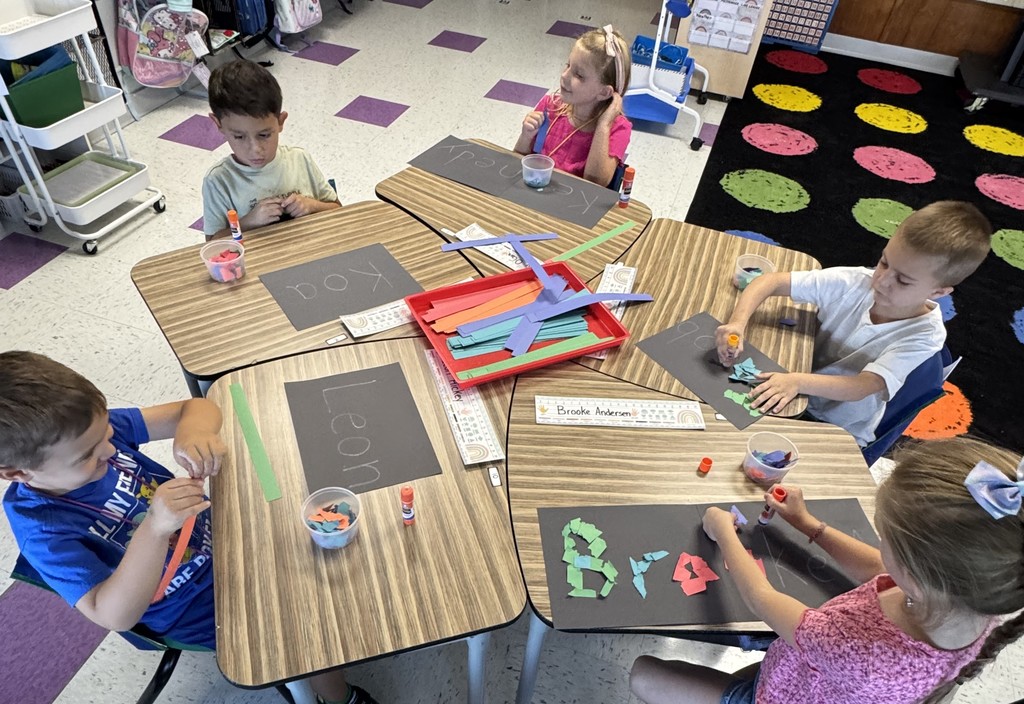
Kudos to members of the High School's Youth Against Cancer (YAC) Club), which delivered 100 cards were made members this past Friday to pediatric patients in Garnet Medical Center's oncology unit. As a treat, students attached lollipops to each card! YAC President Heather Day, who is also a Board of Education student representative, presented the cards to Garnet's Director of Infusion Stephanie Bonanno, R.N.
TWO OTHER REMINDERS: Please consider being part of the YAC's book and toy donation for Garnet's pediatric patients through Oct. 11. Boxes are in all five buildings the the district's Transportation Center. And, tomorrow is the district's GOING GOLD DAY! Make sure your yellow/gold attire is ready for tomorrow!
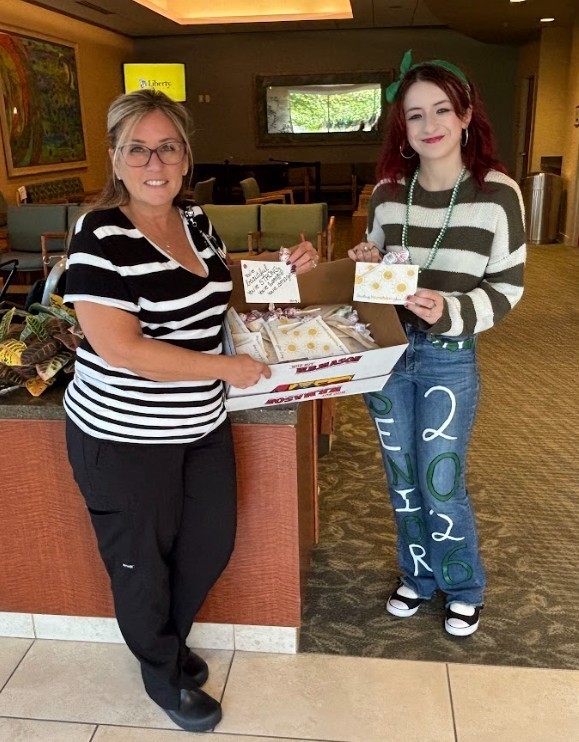
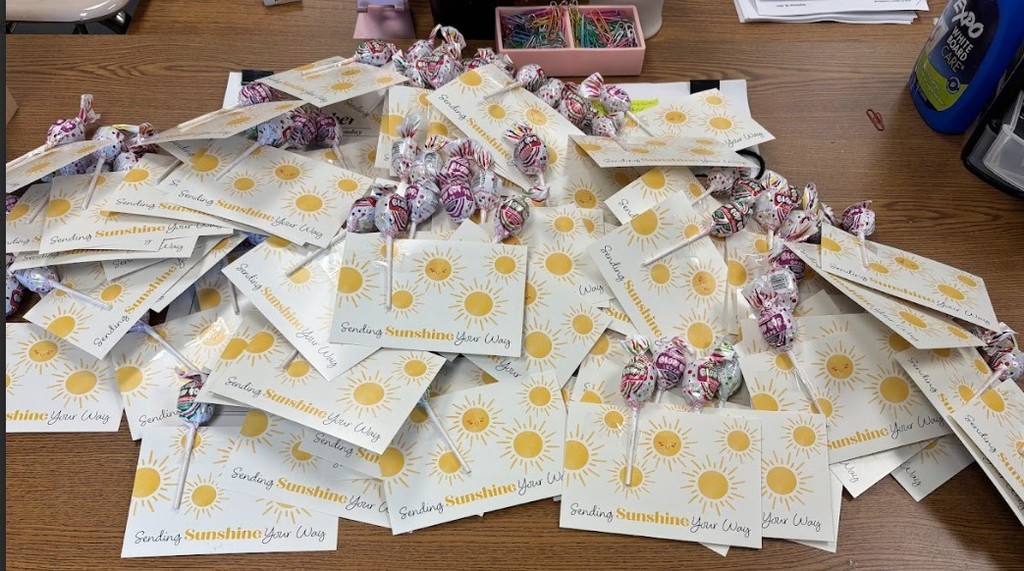
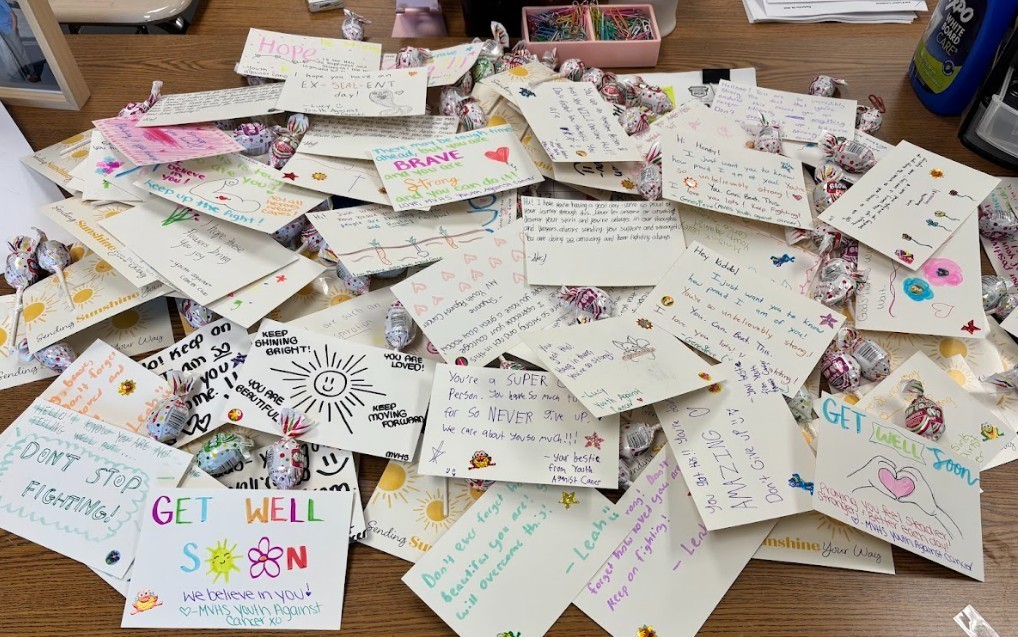
Kindergarten library class is important because it builds crucial early literacy skills by promoting a love of reading, expanding vocabulary, and developing language arts concepts in a fun and engaging way, supporting what’s going on in the classroom setting. It also teaches fundamental library and social skills, such as how to handle books, use library resources, and interact positively with peers in a community setting.
